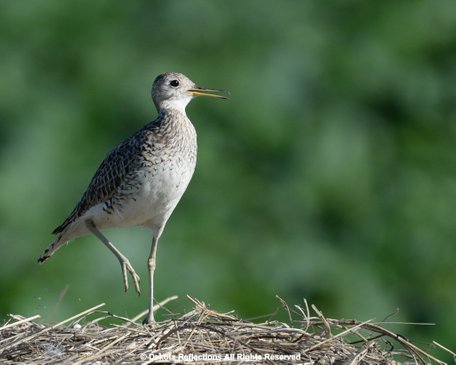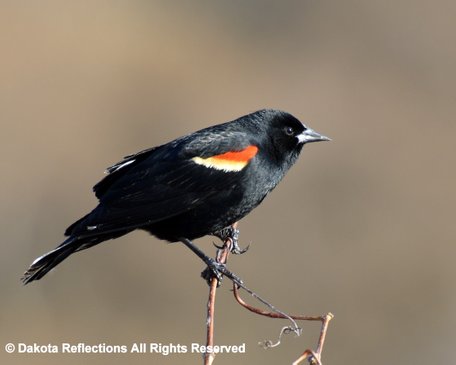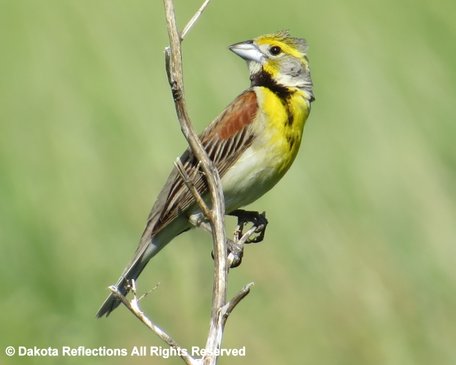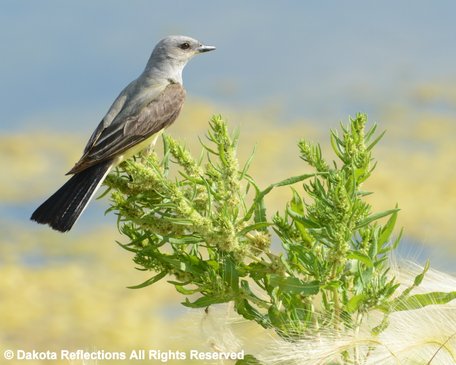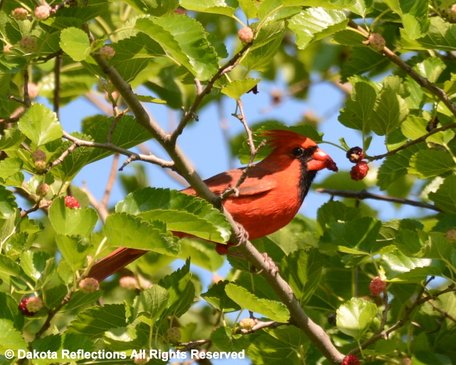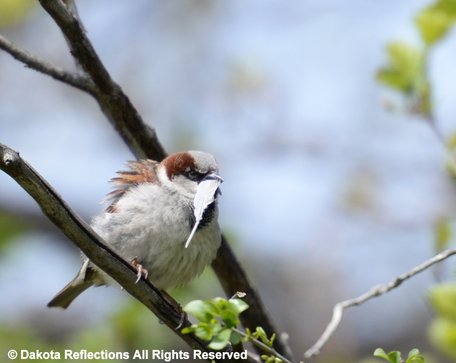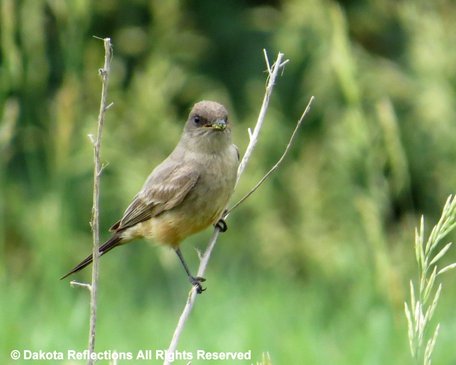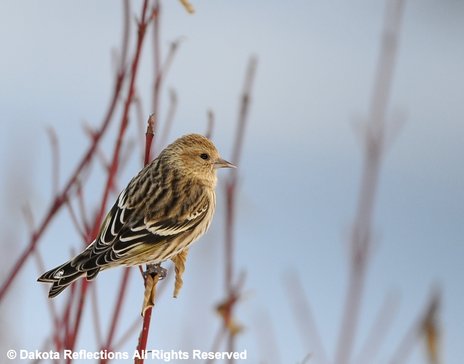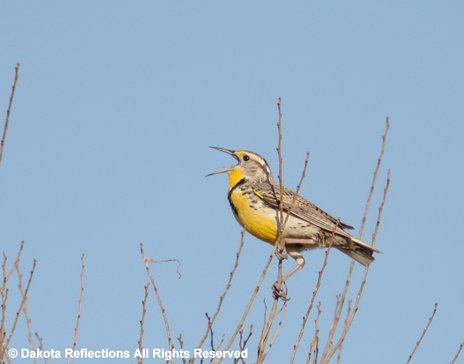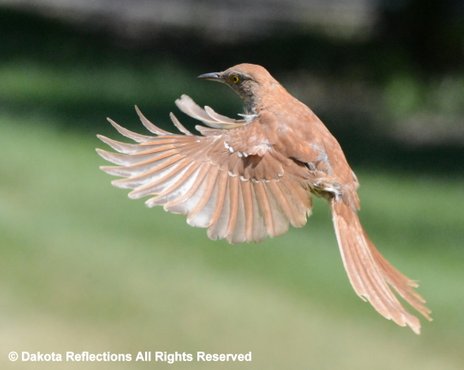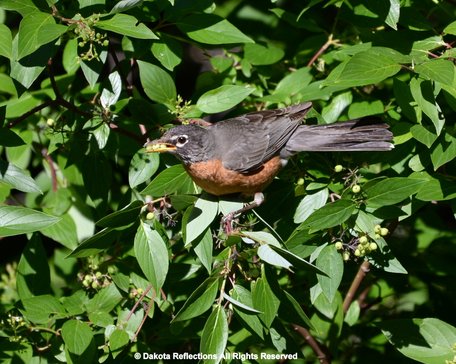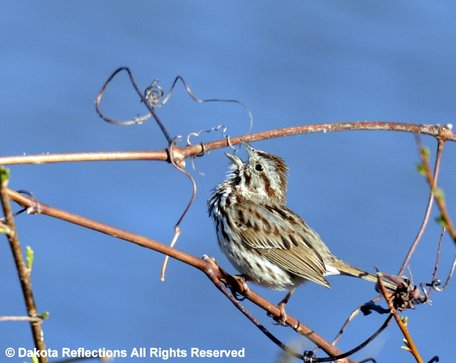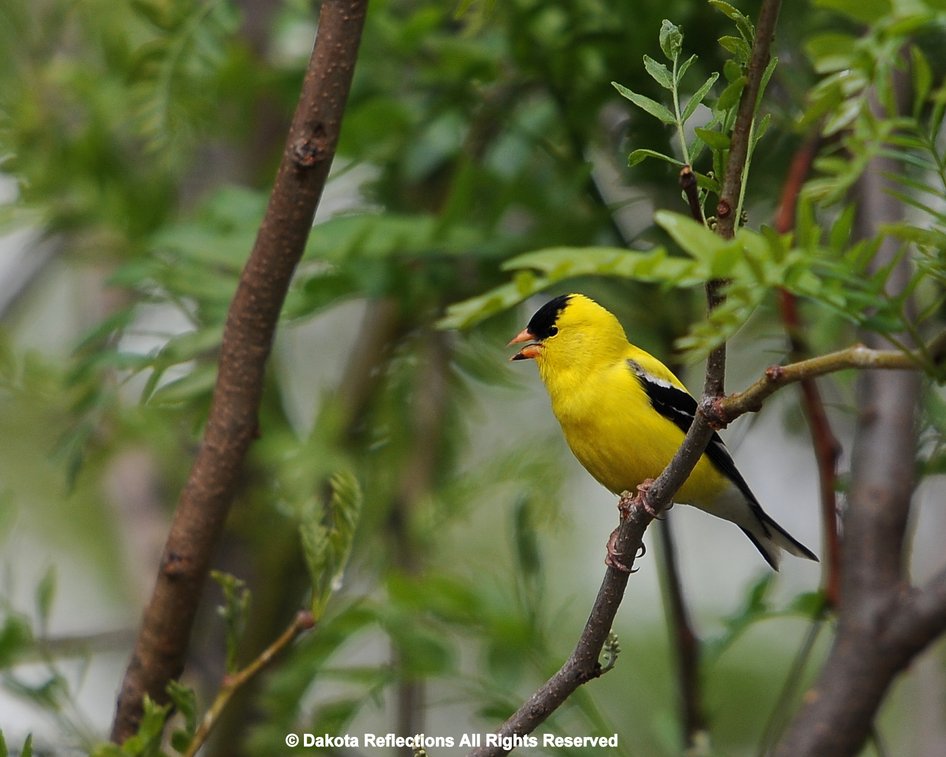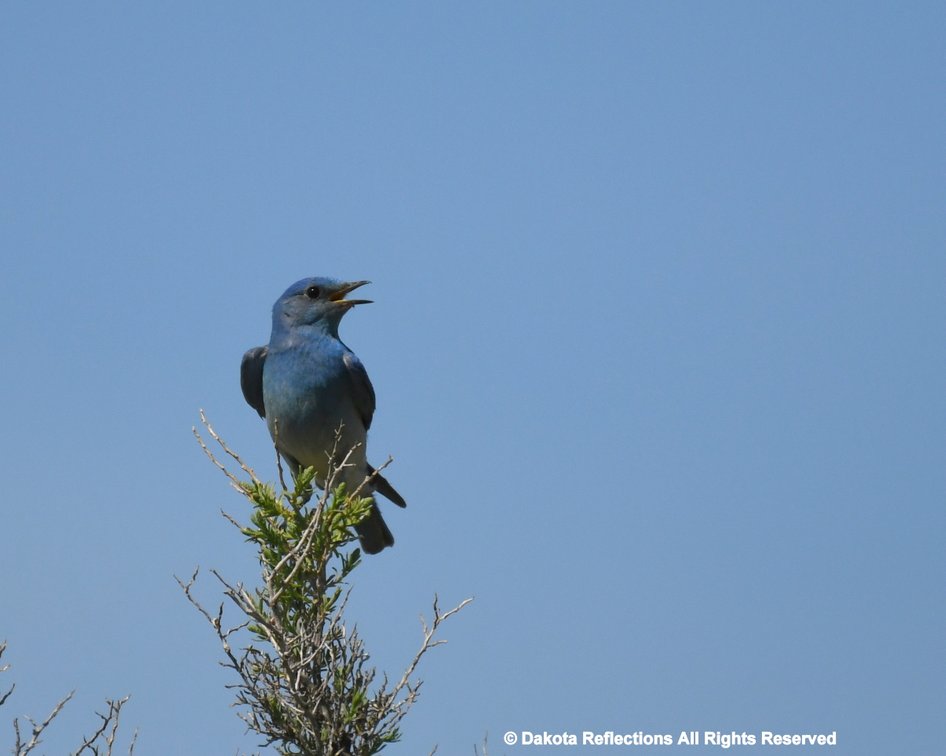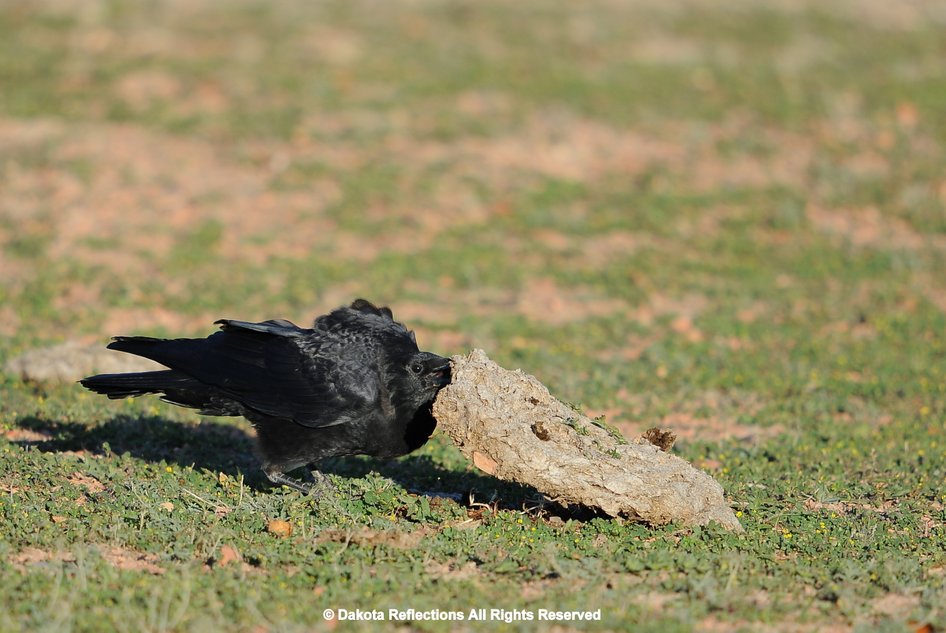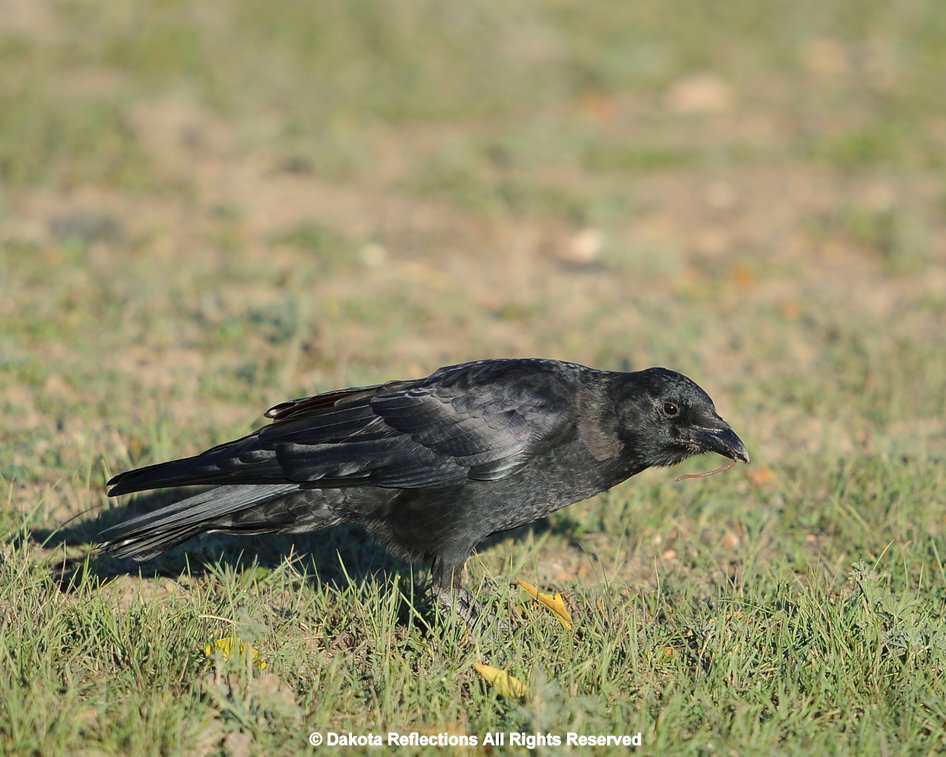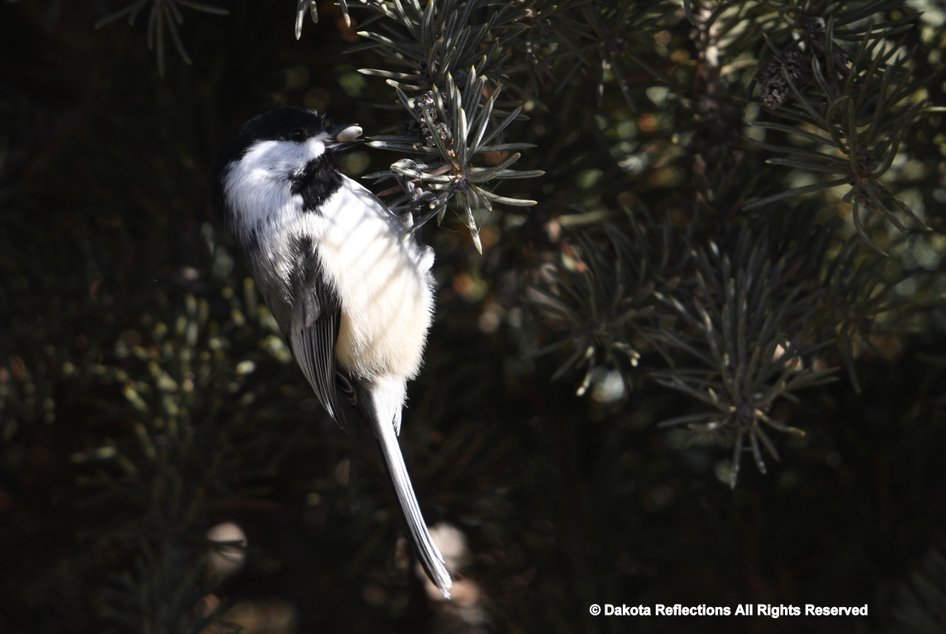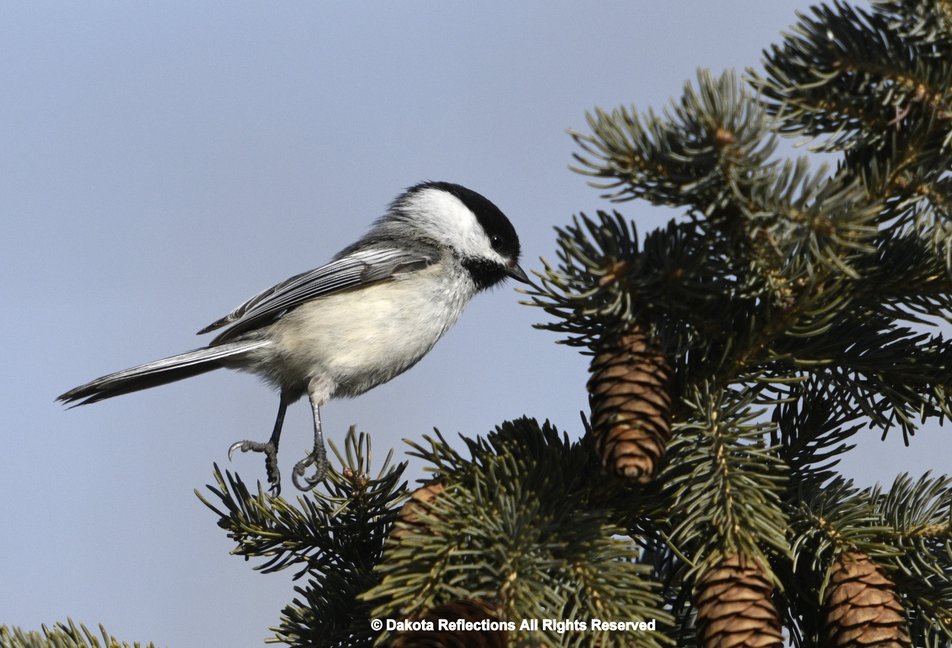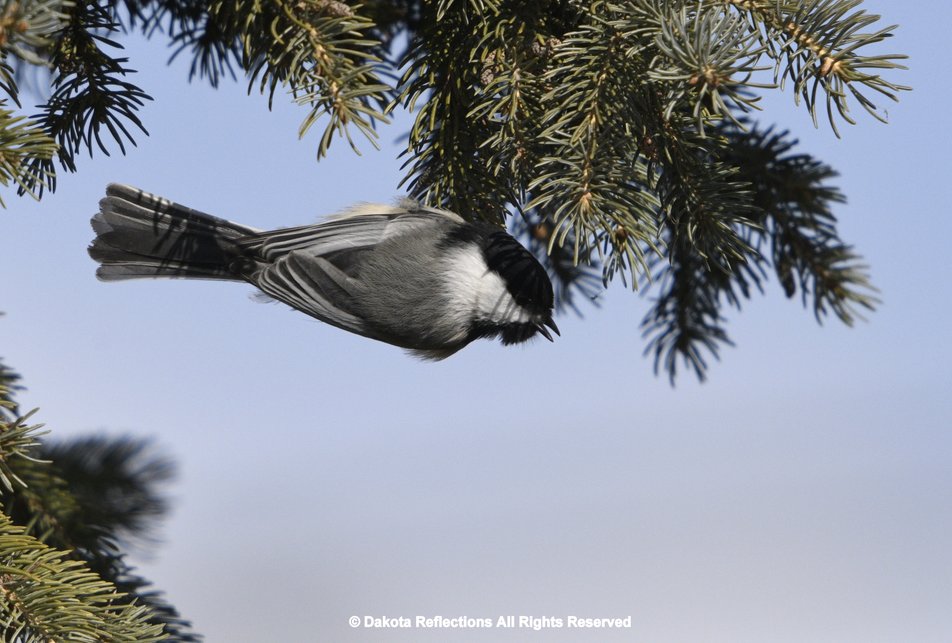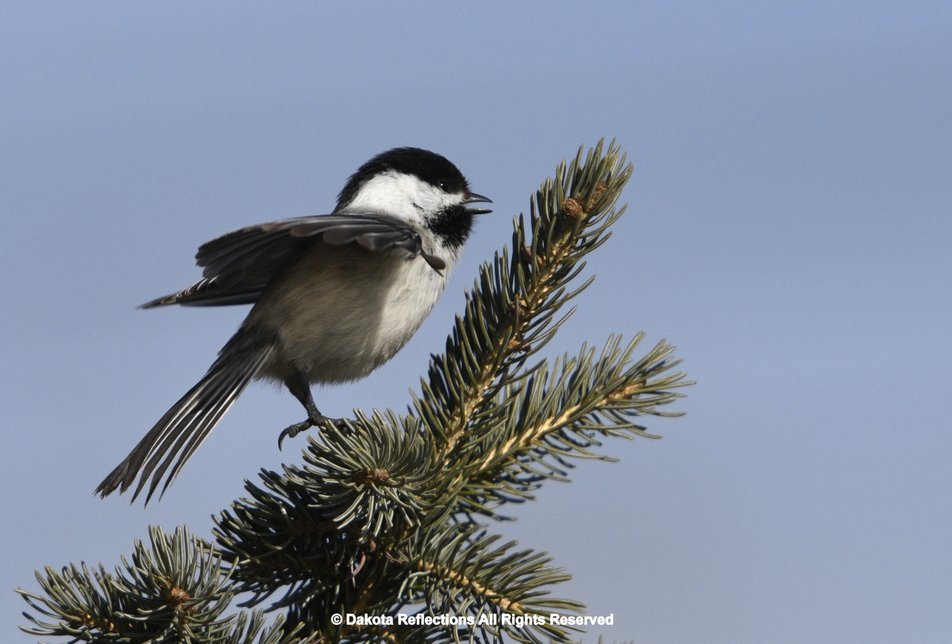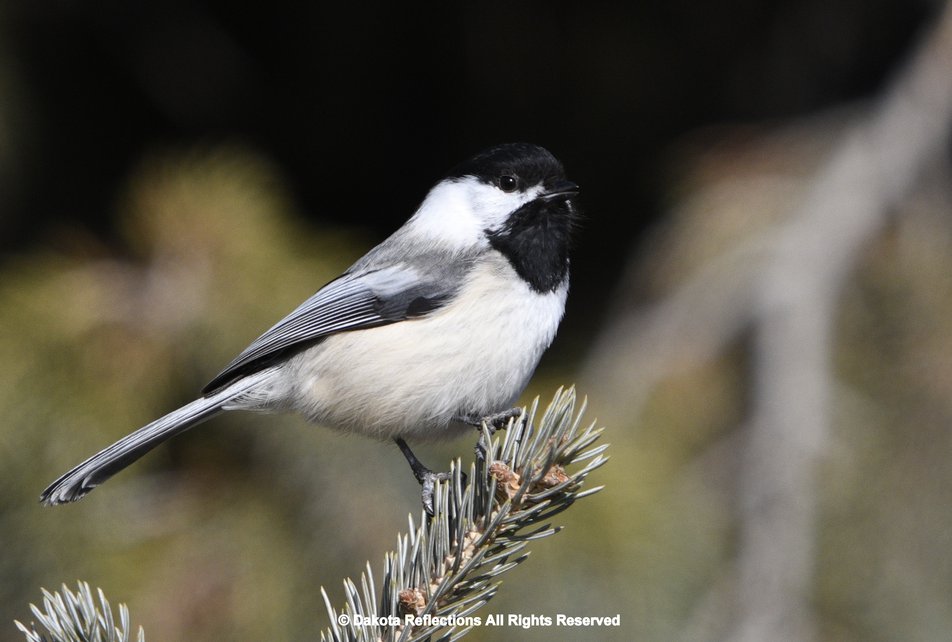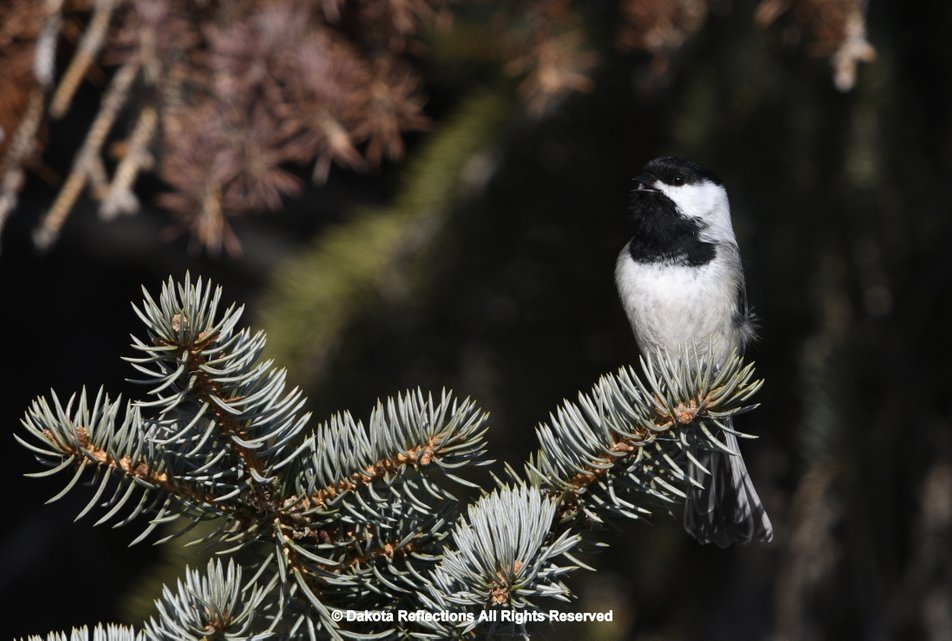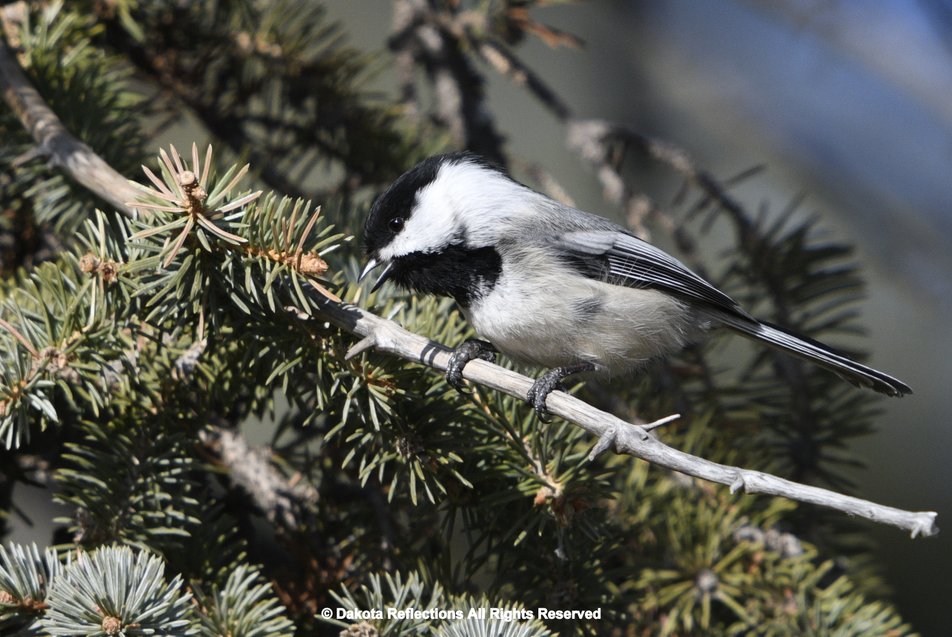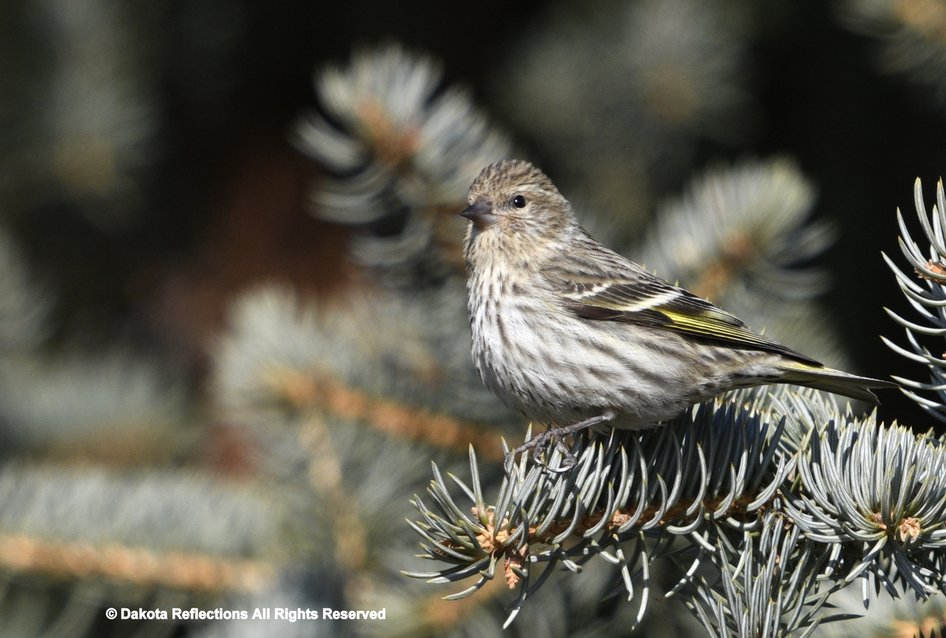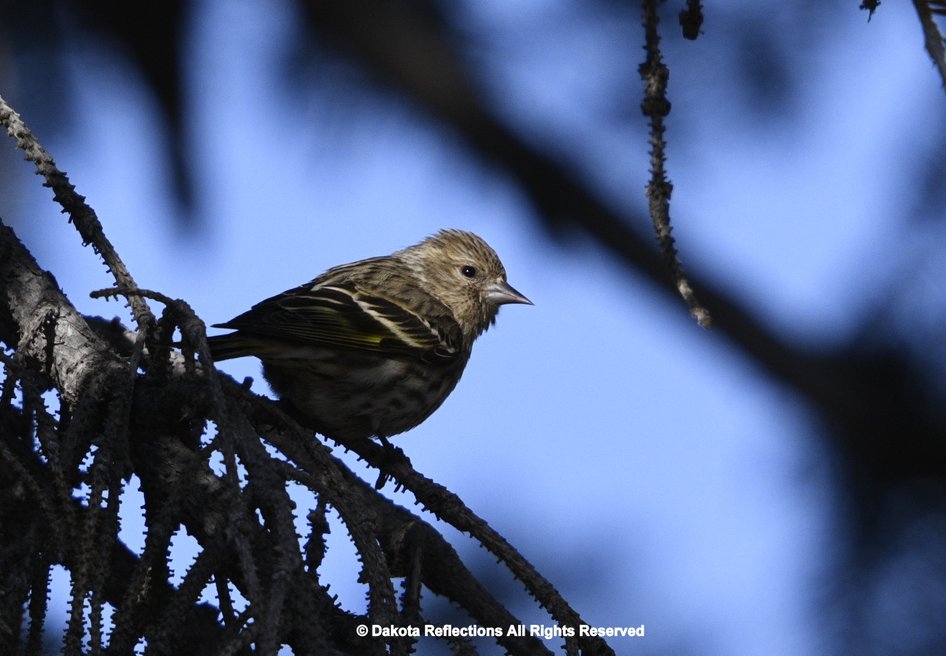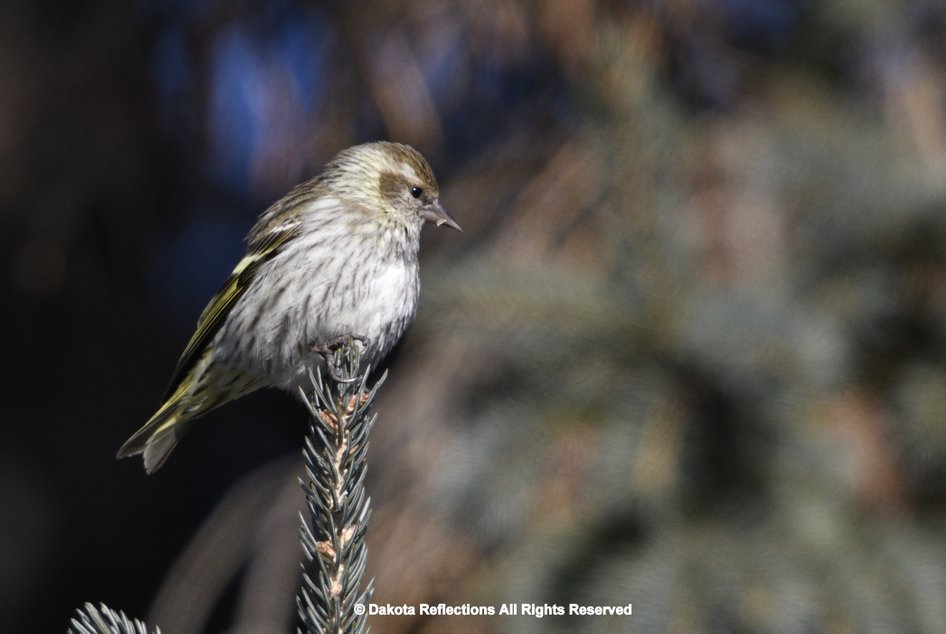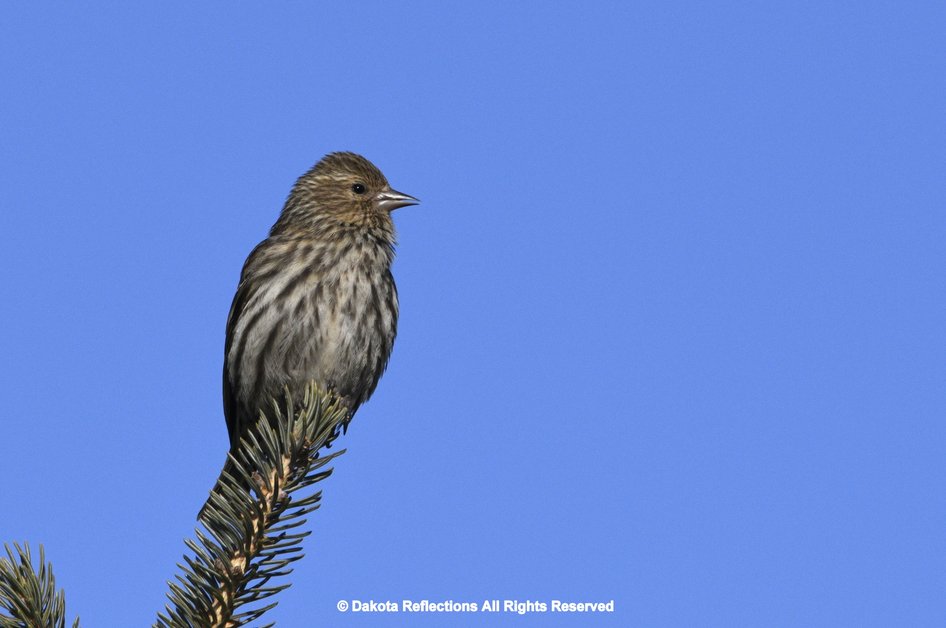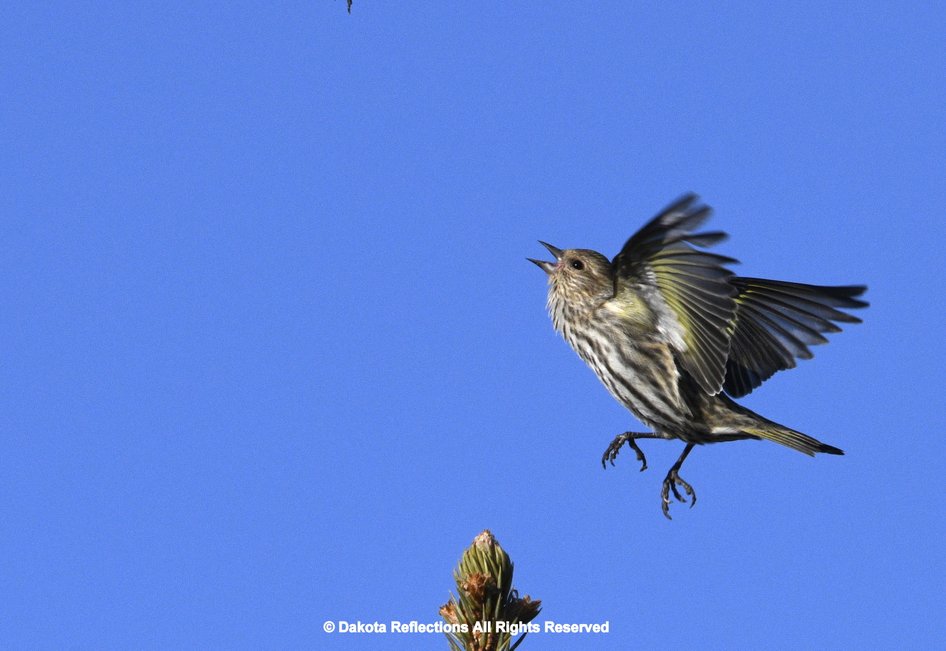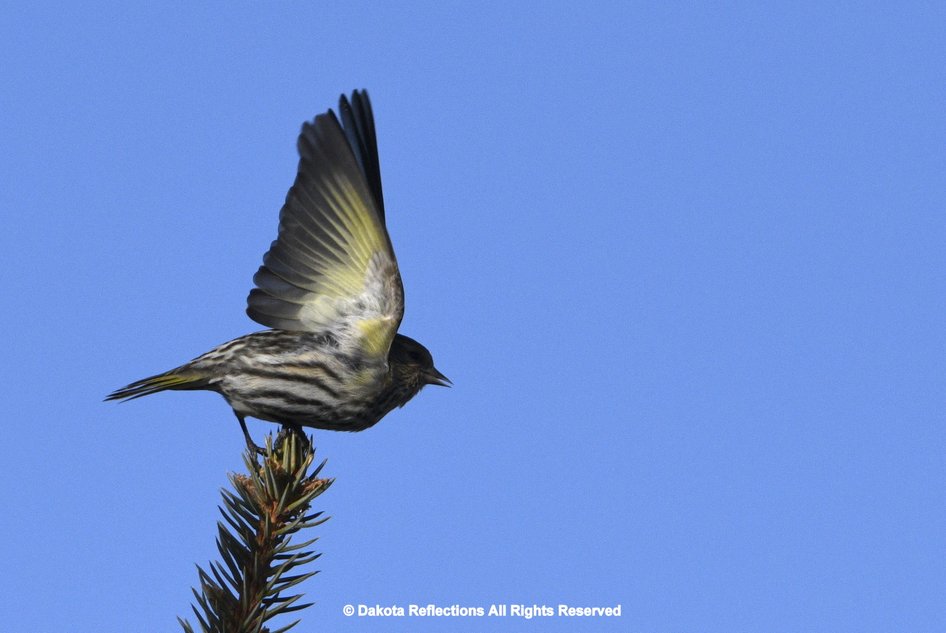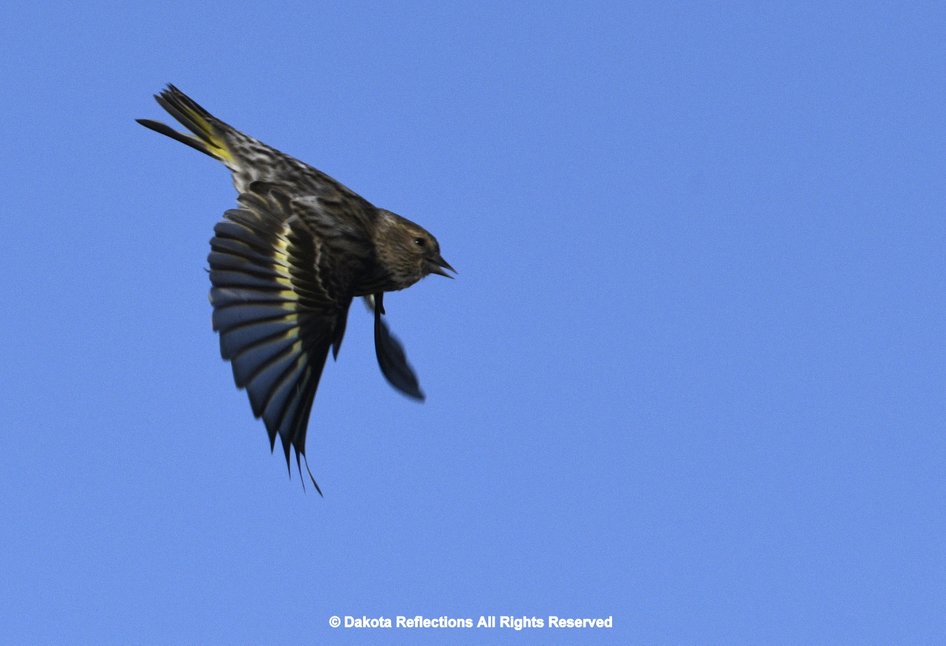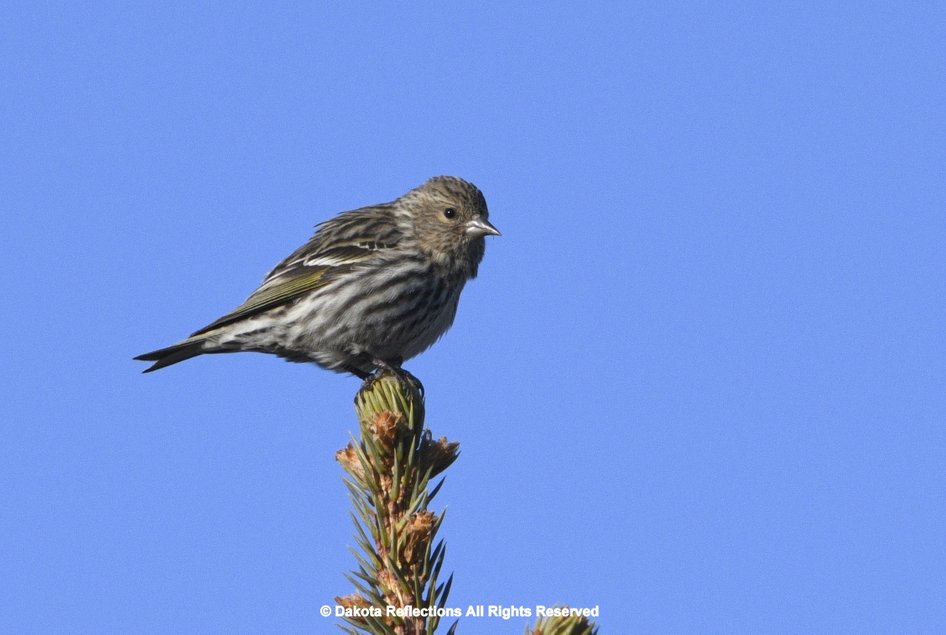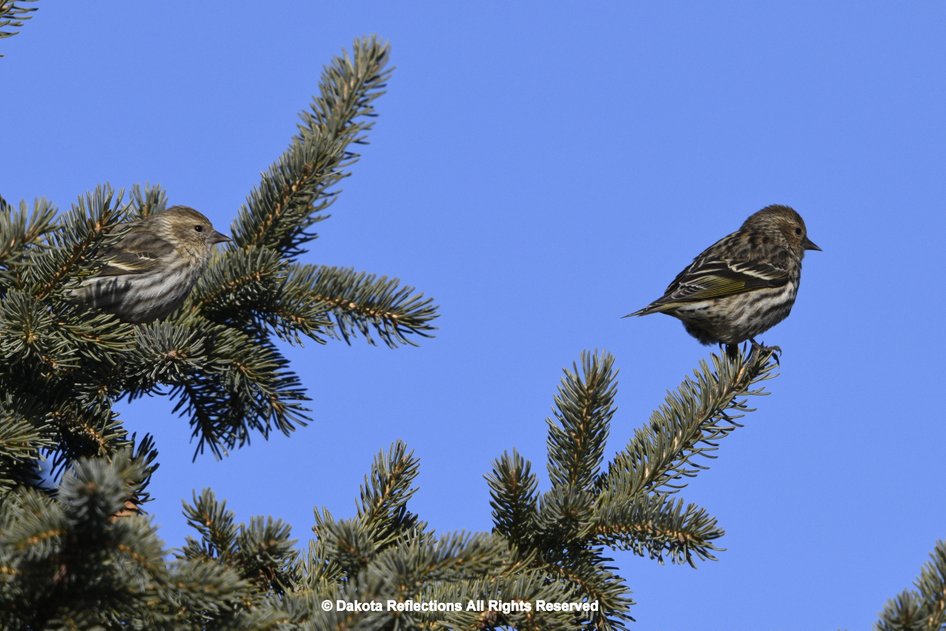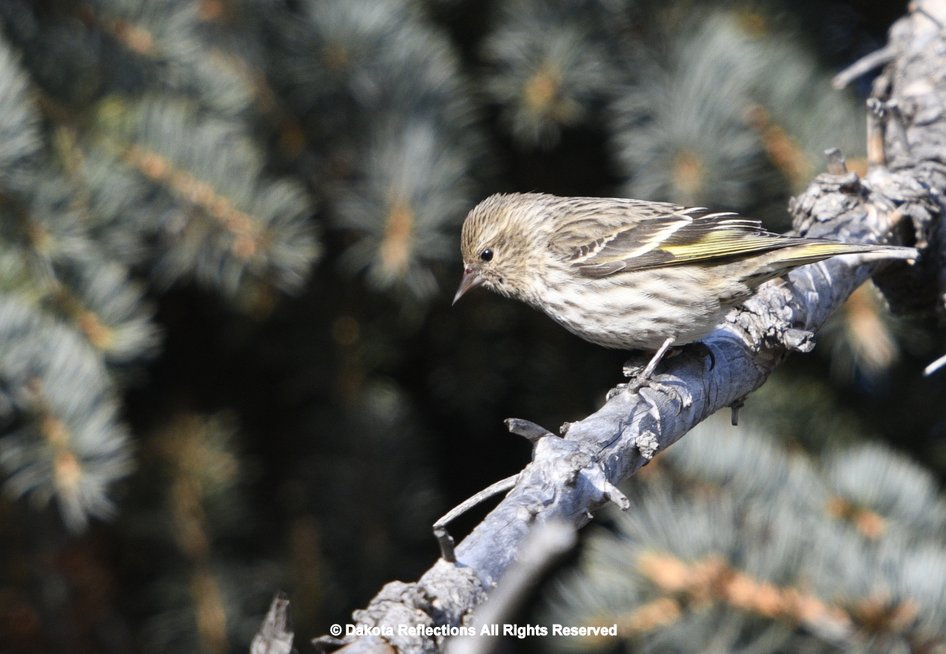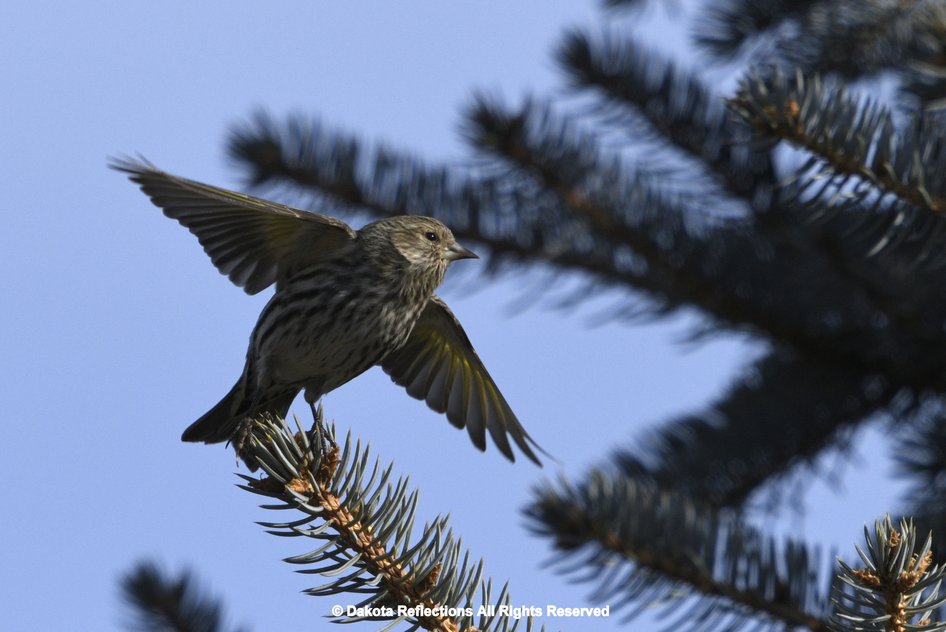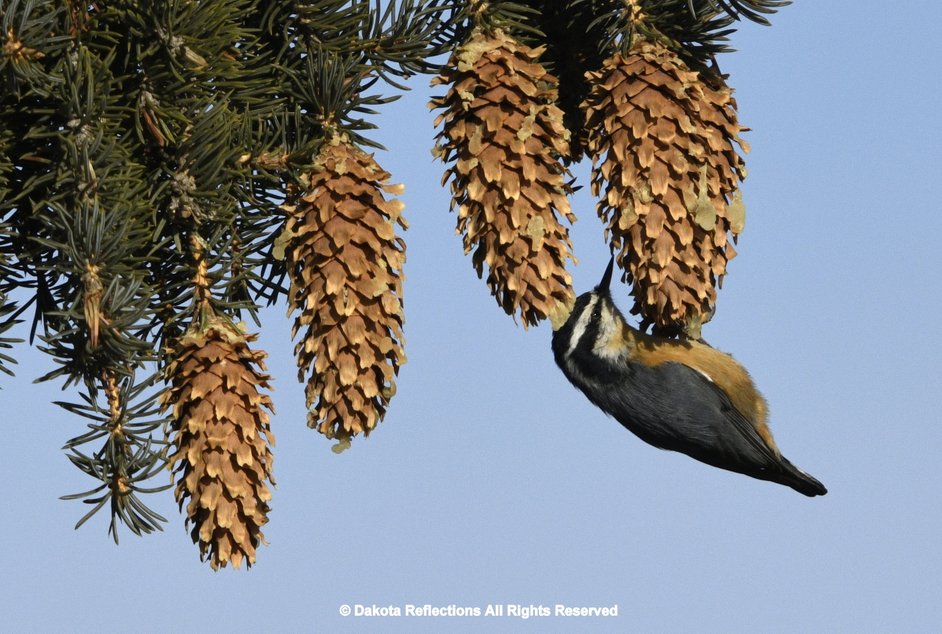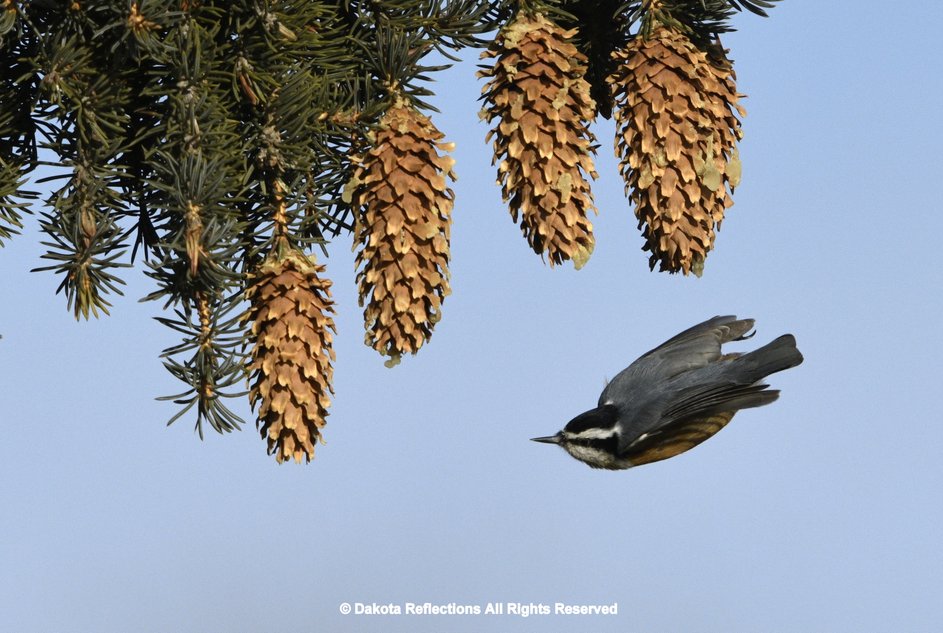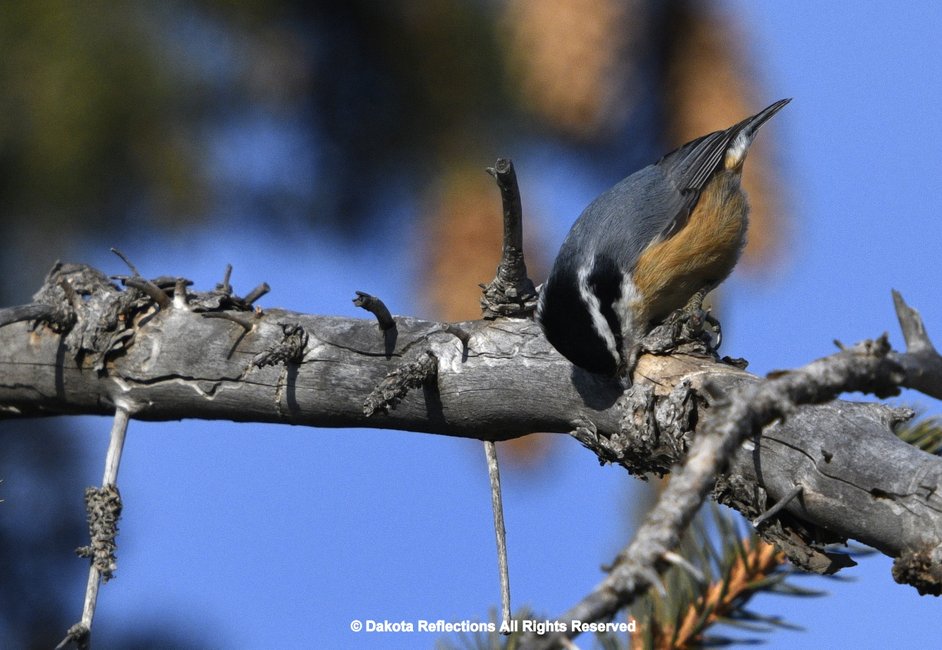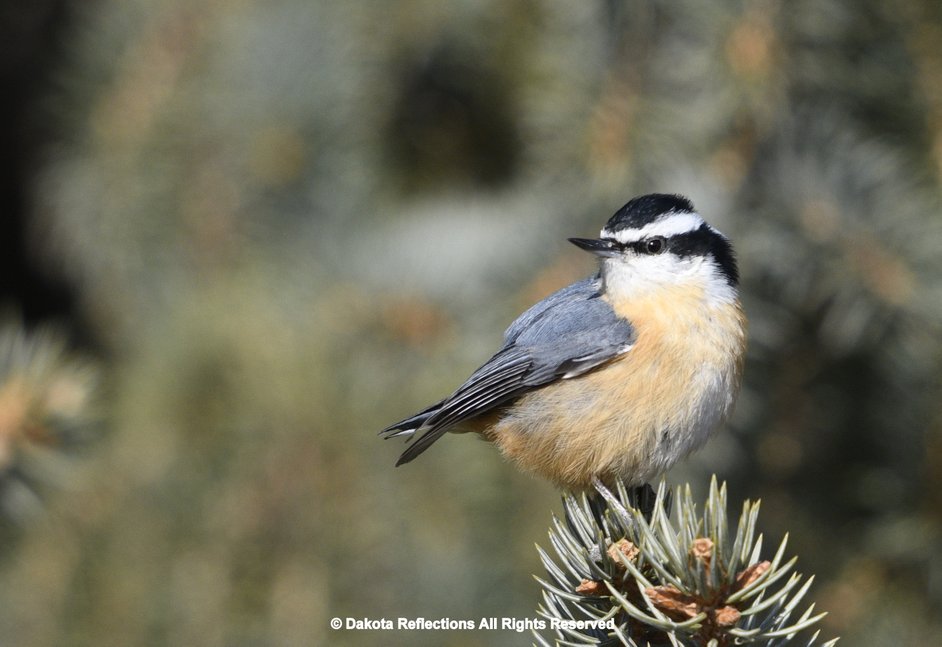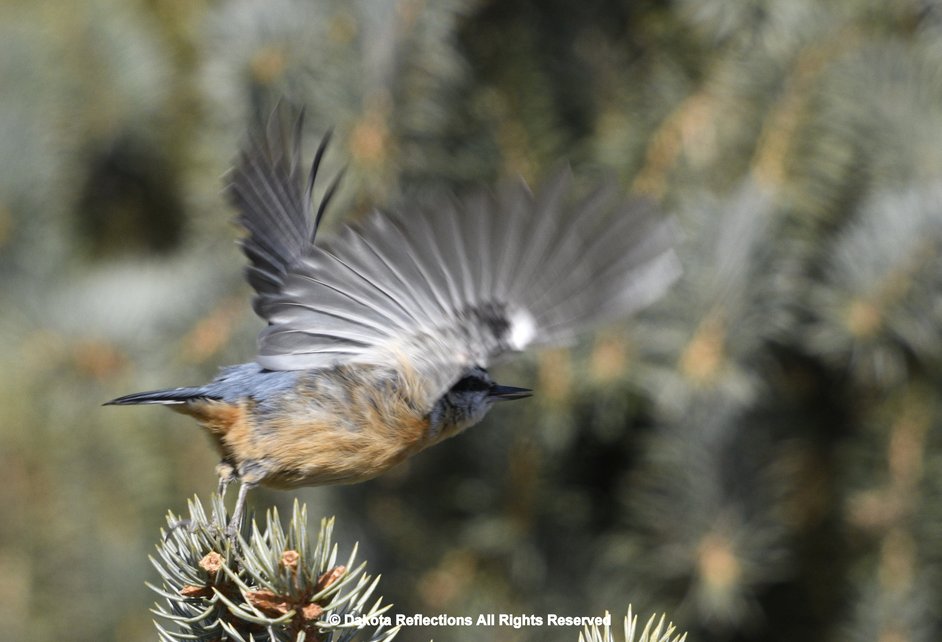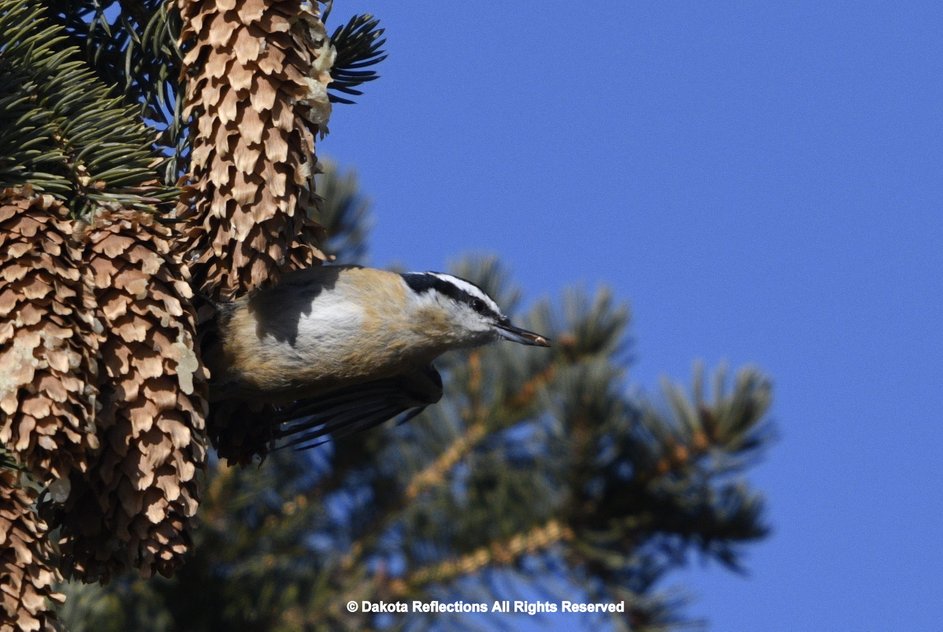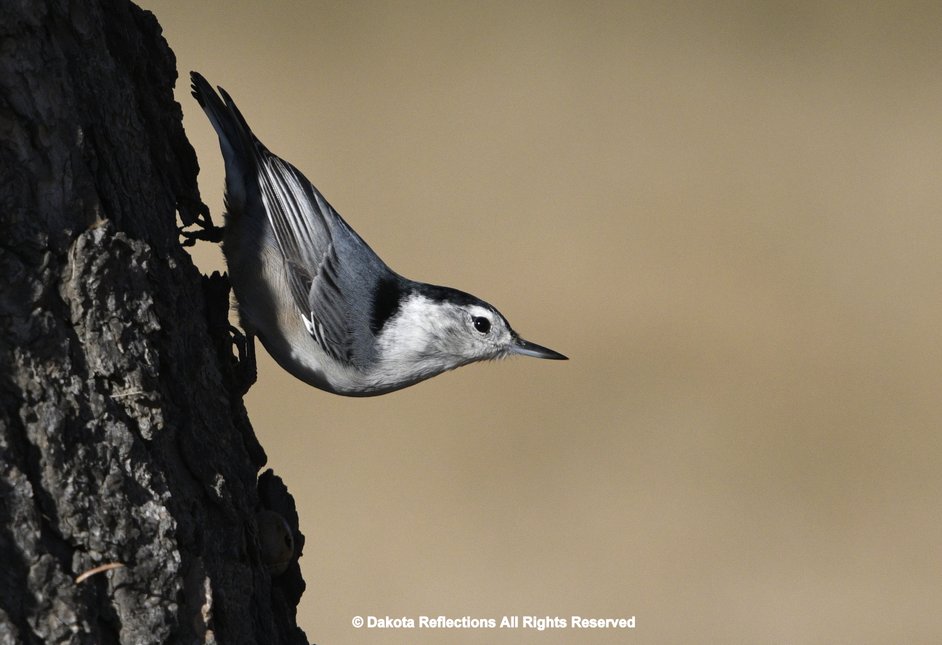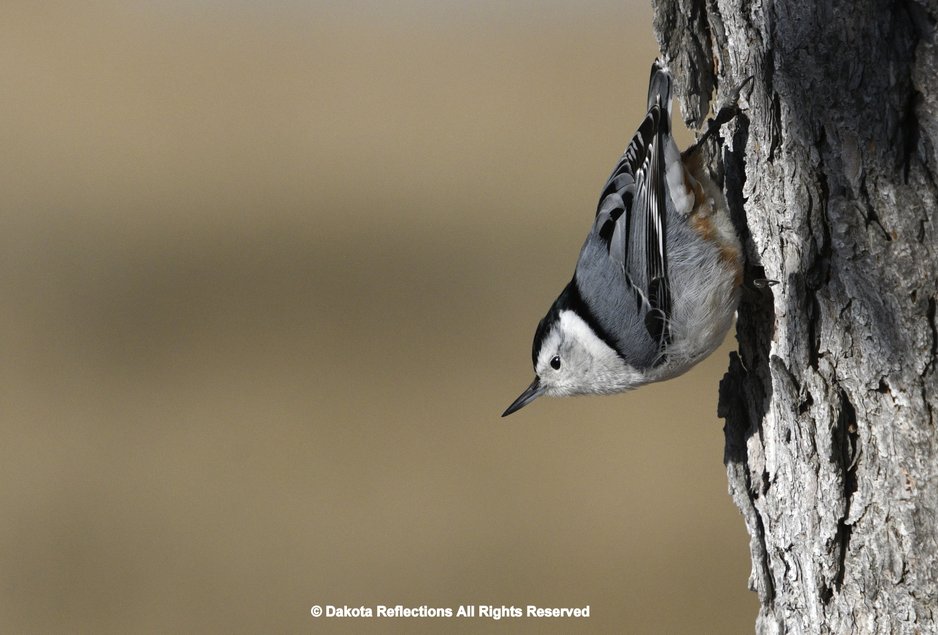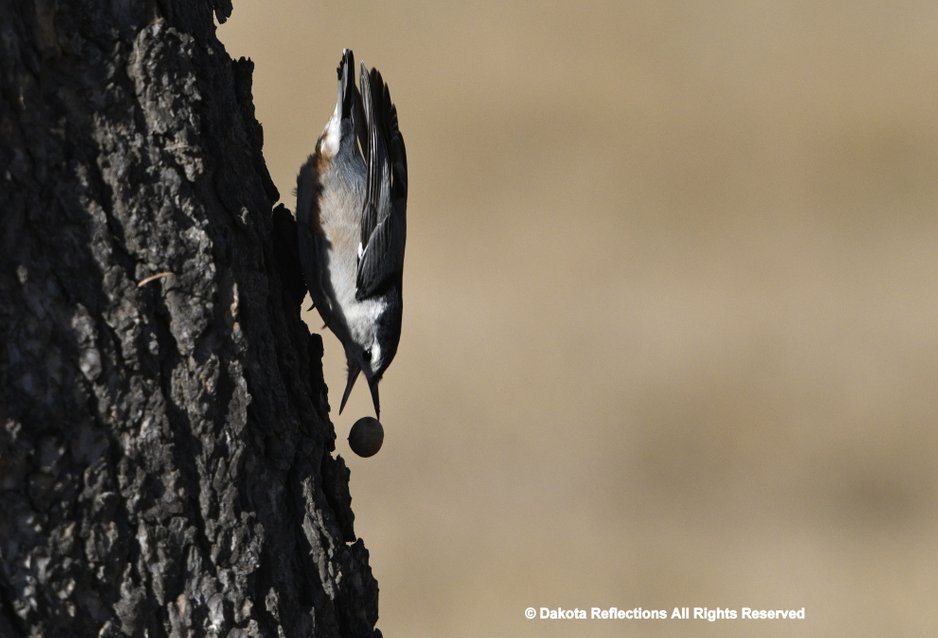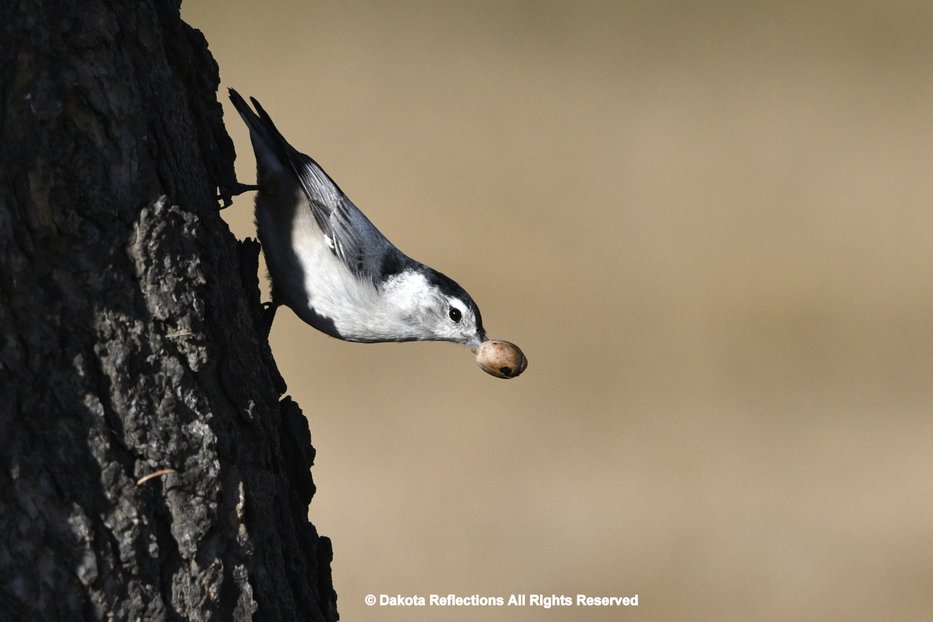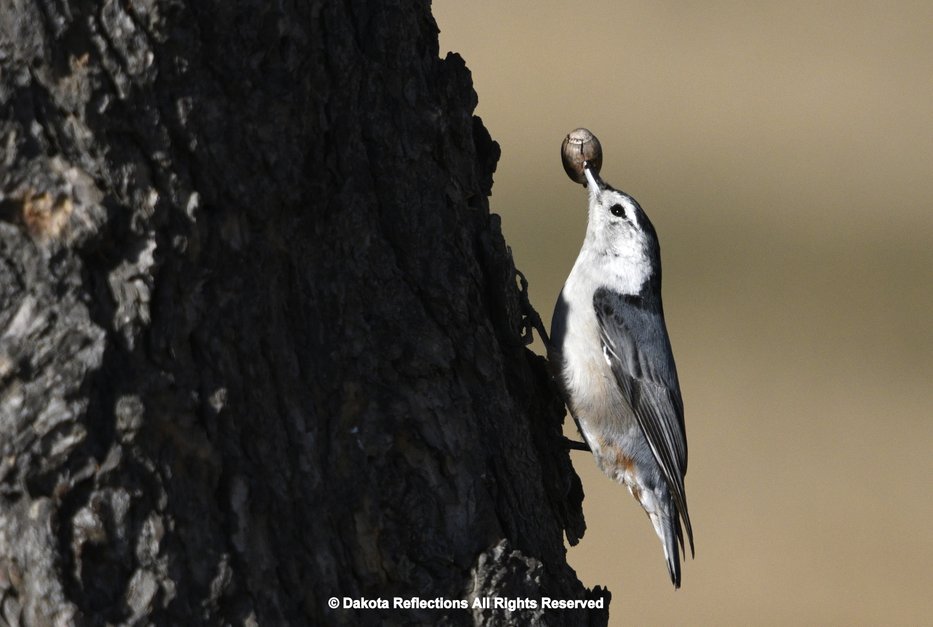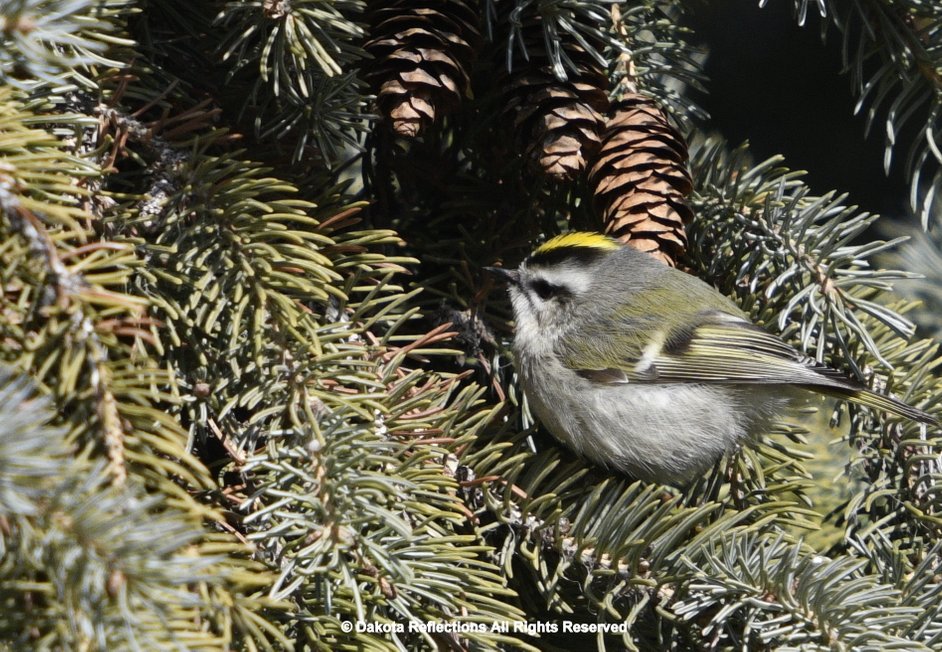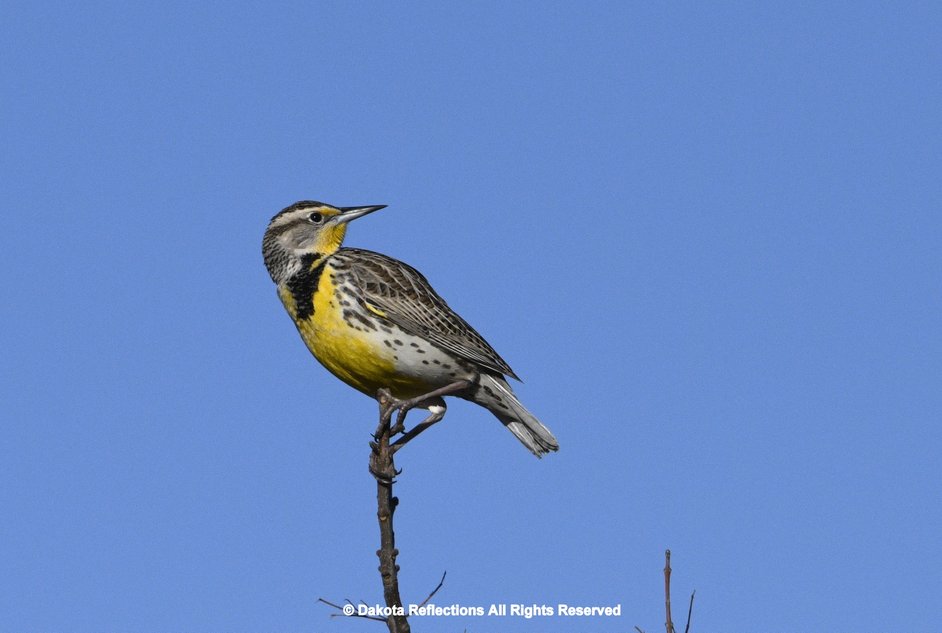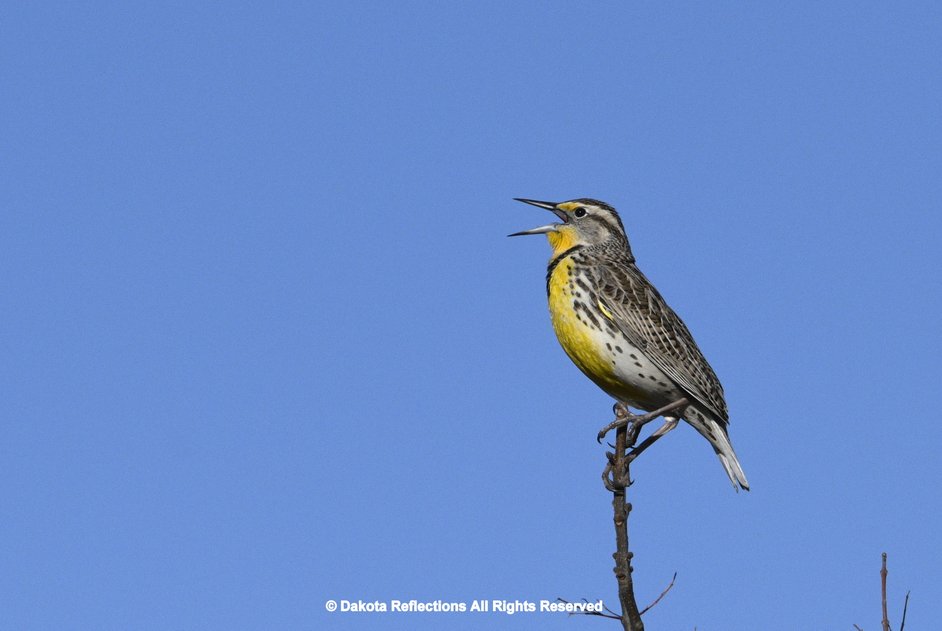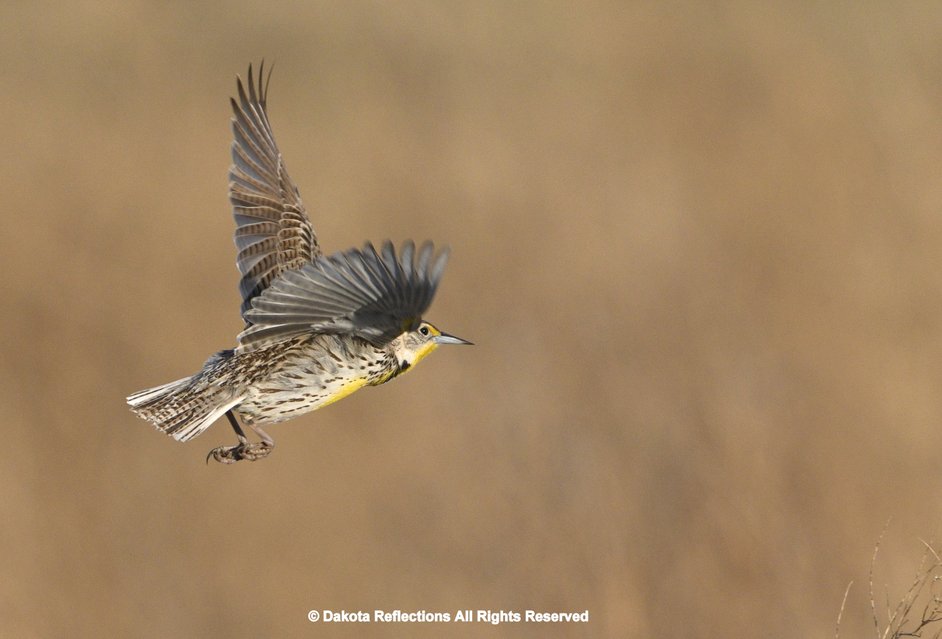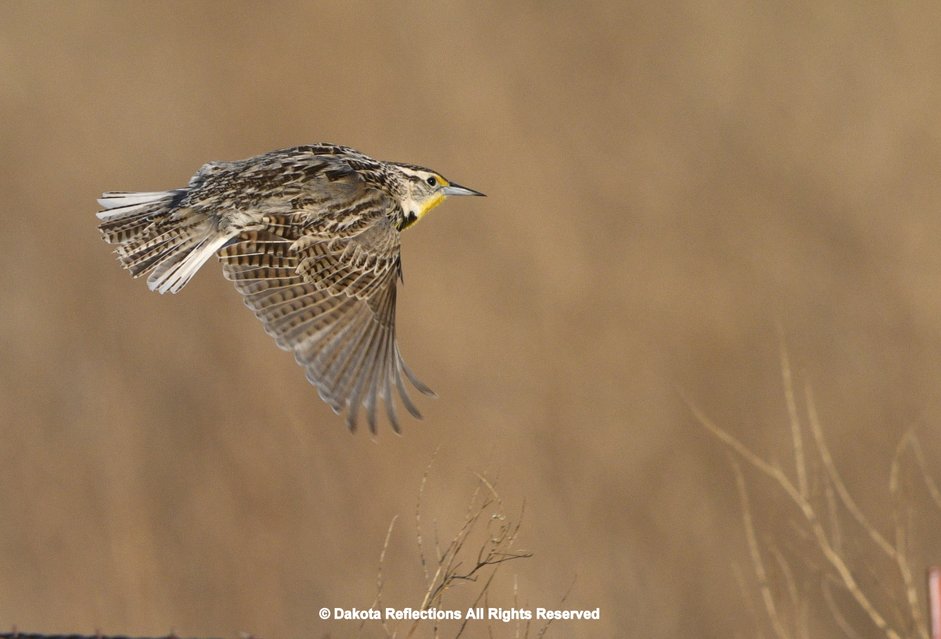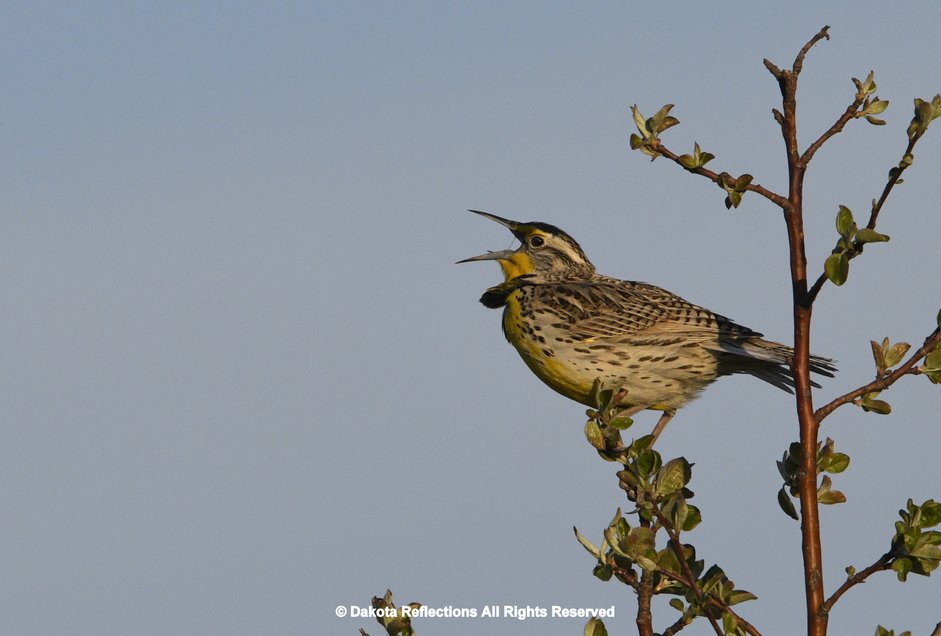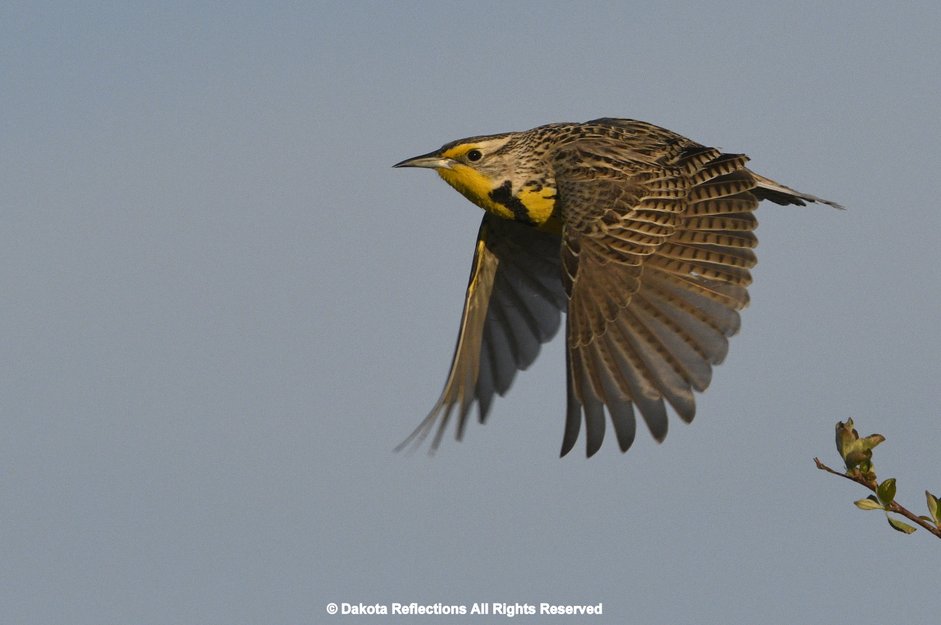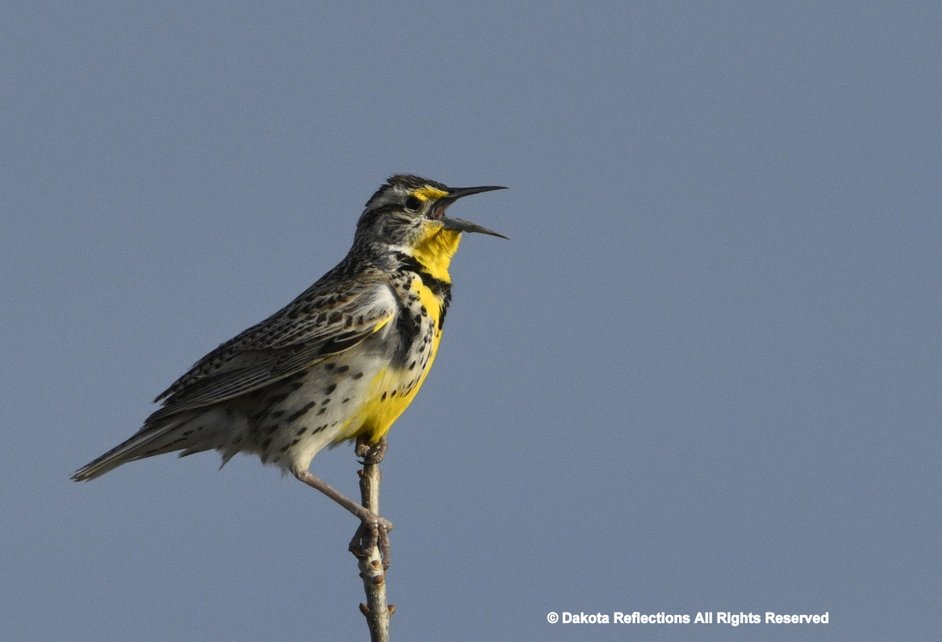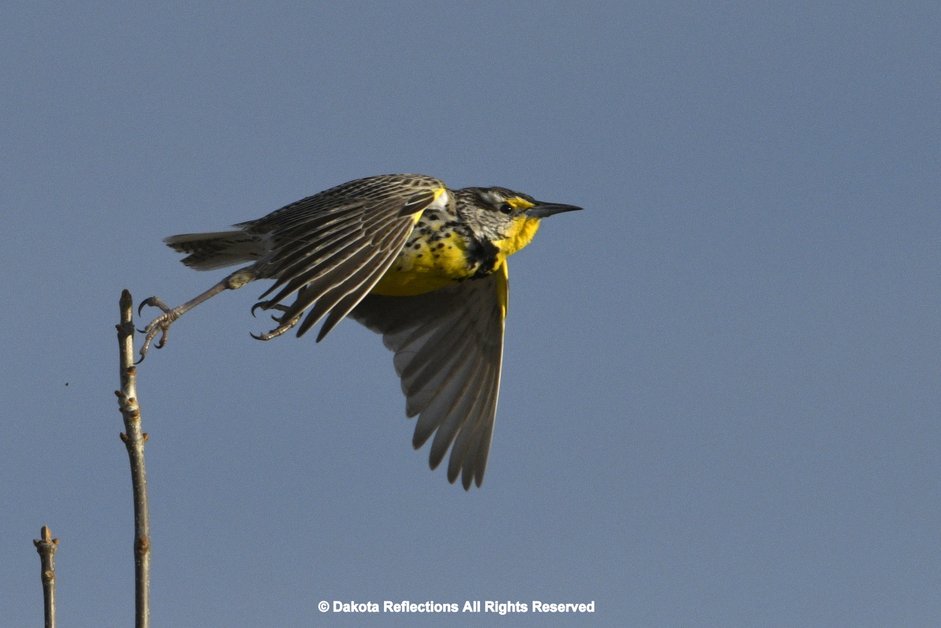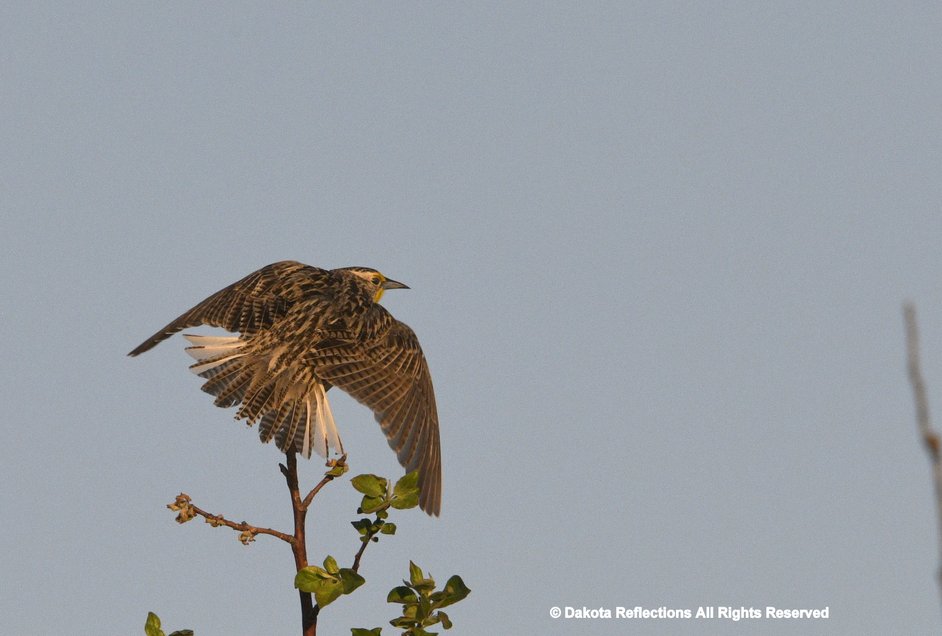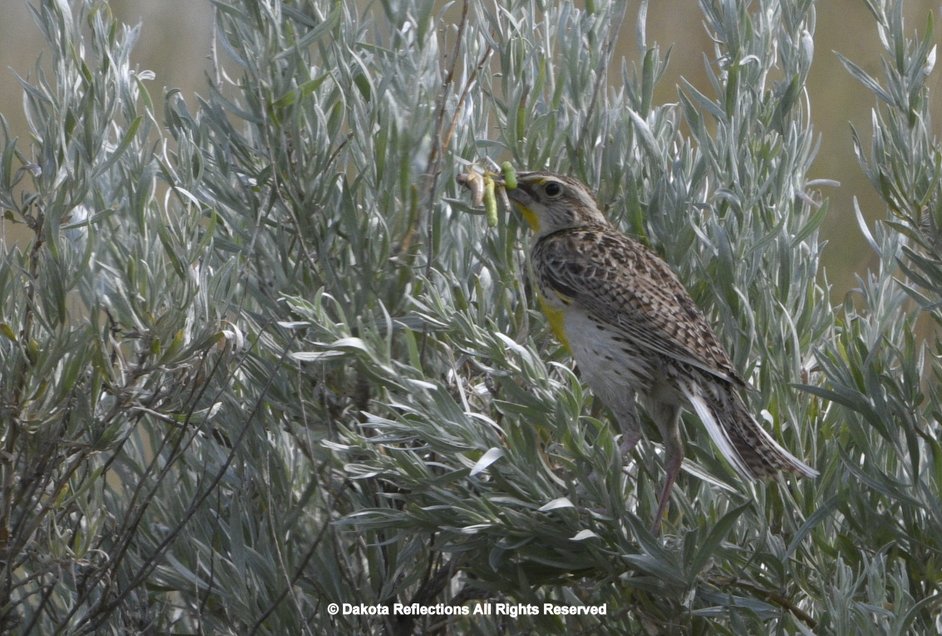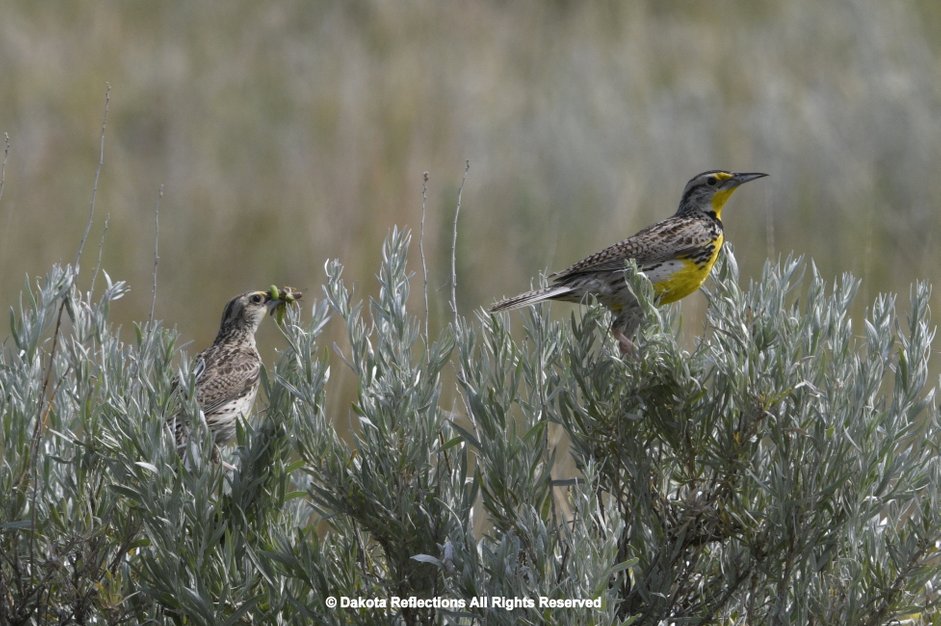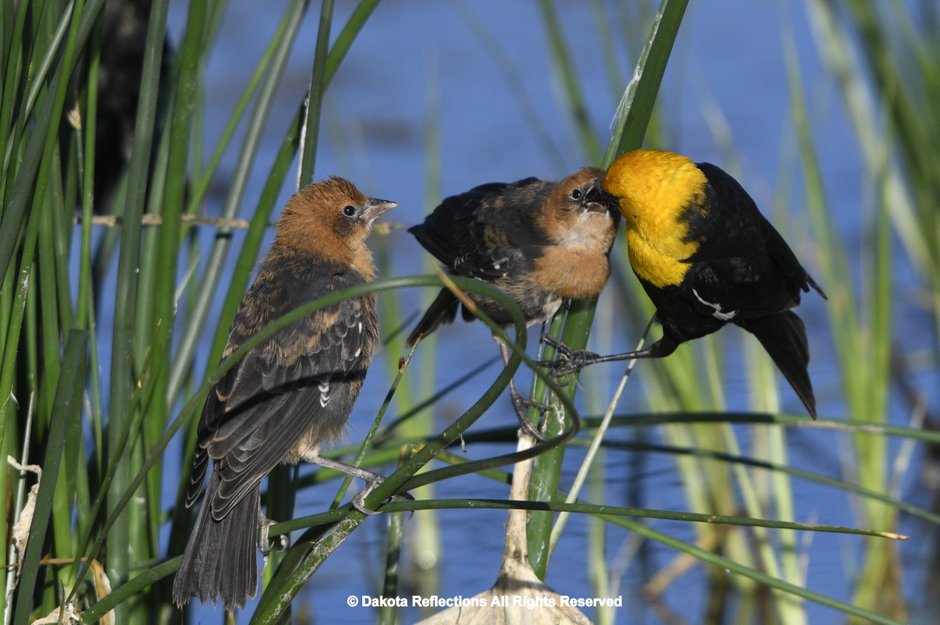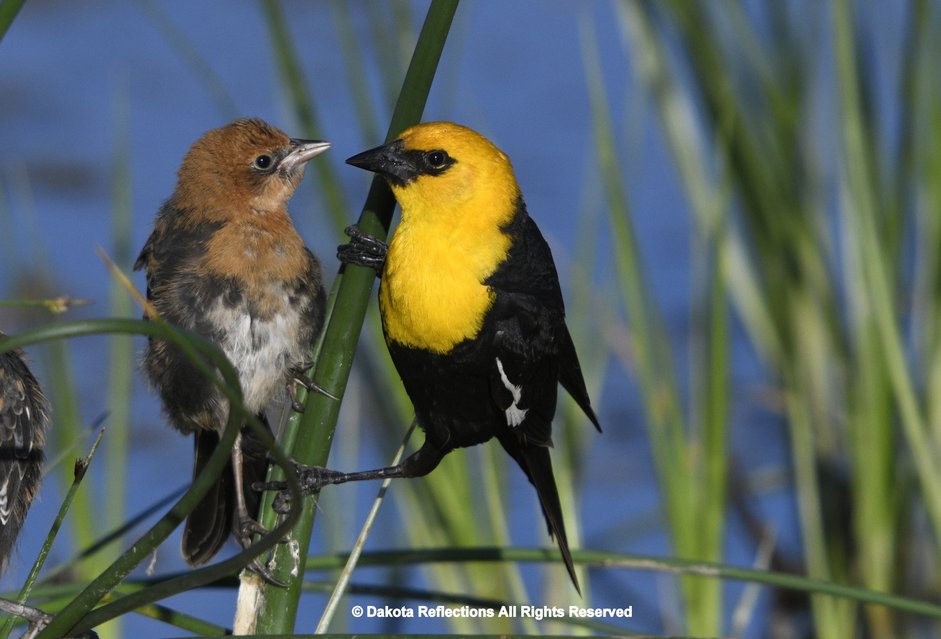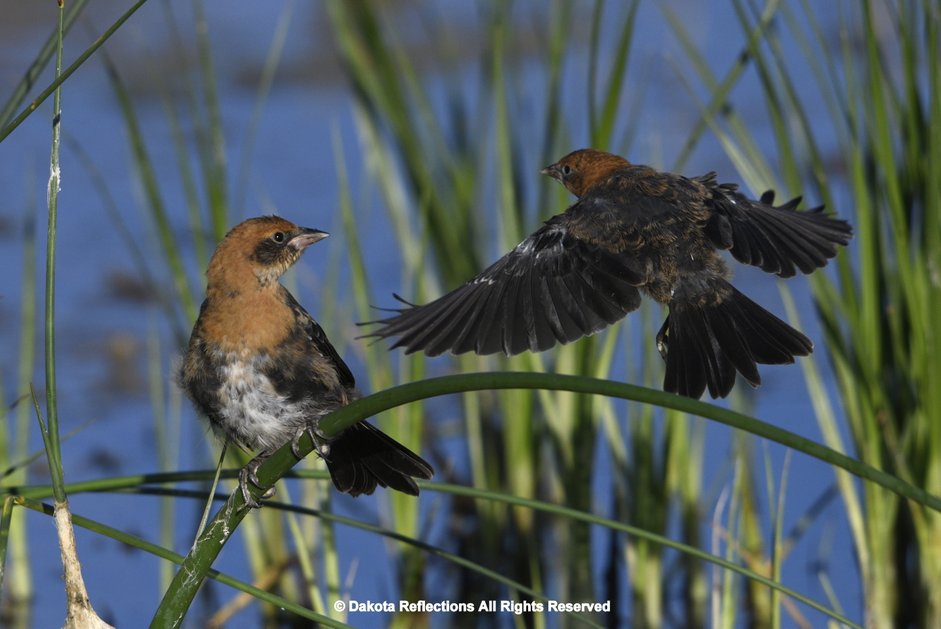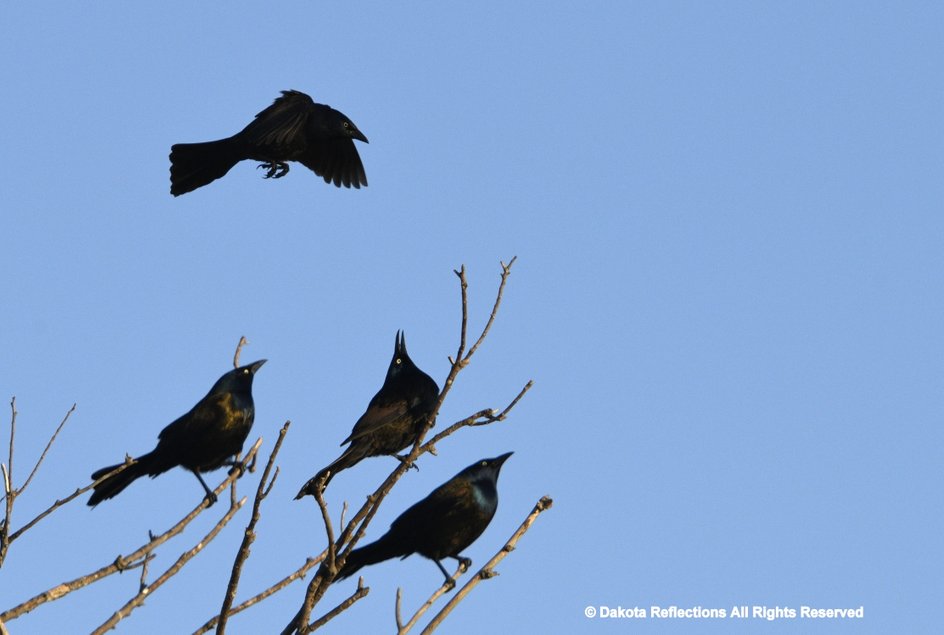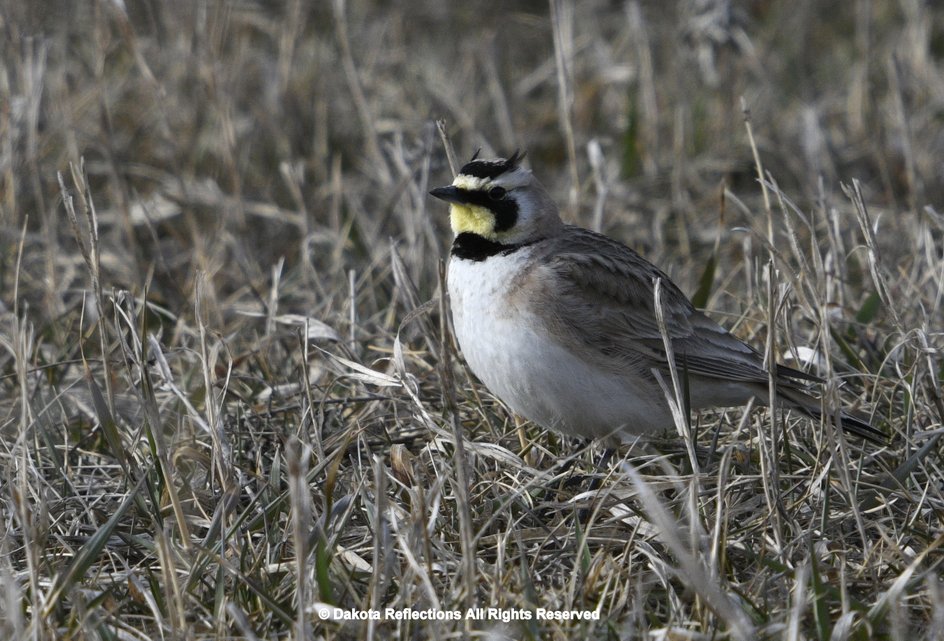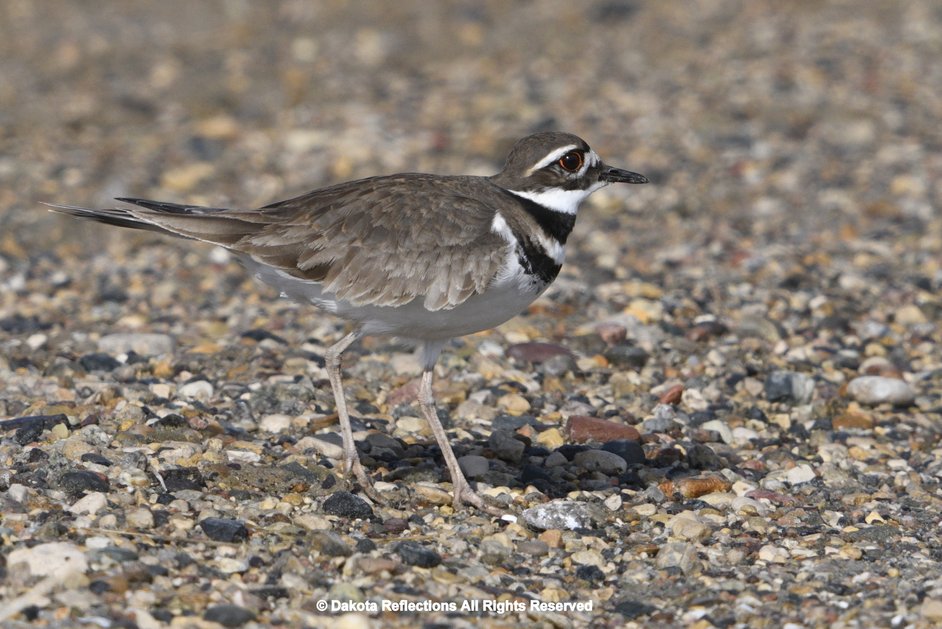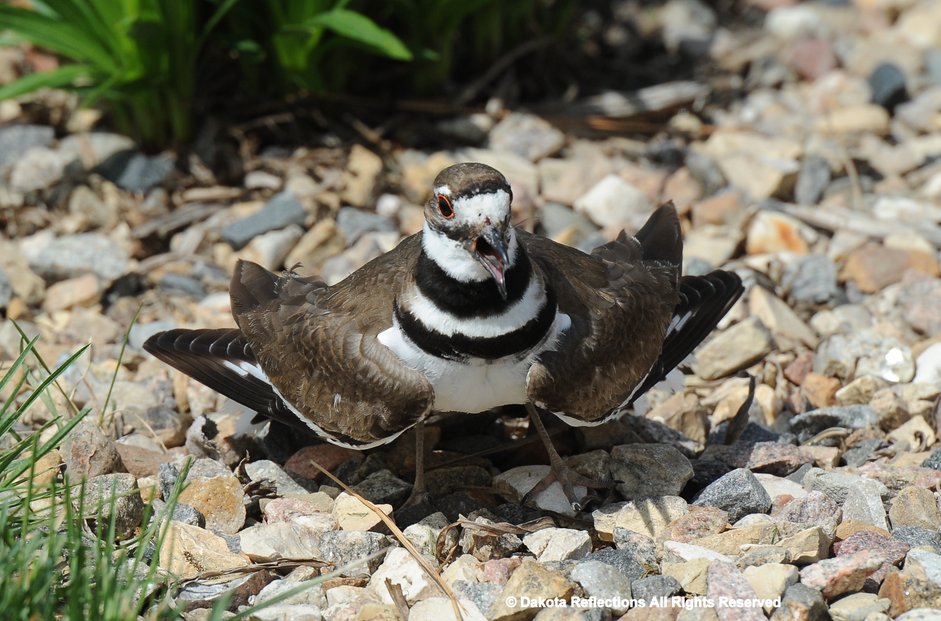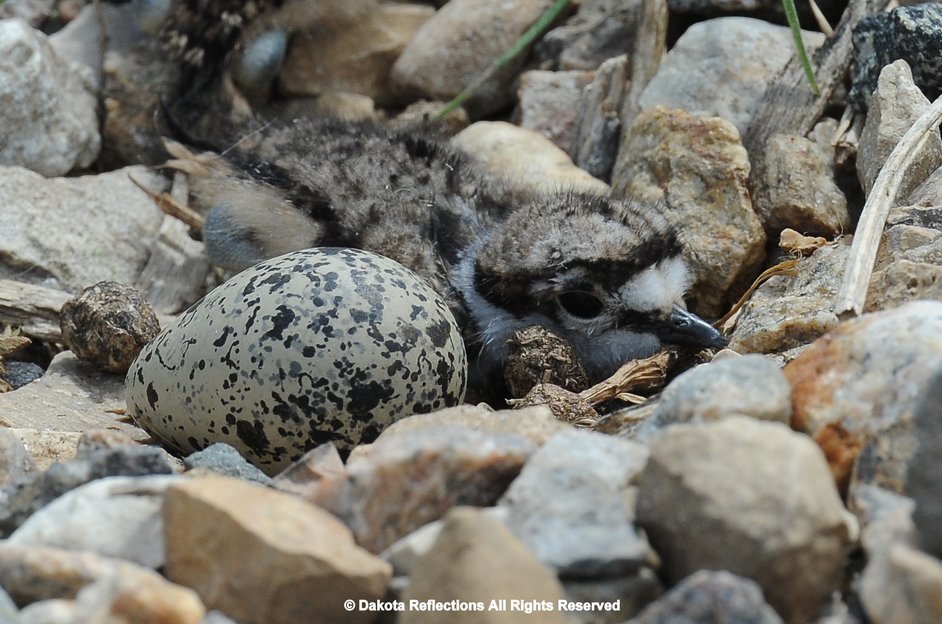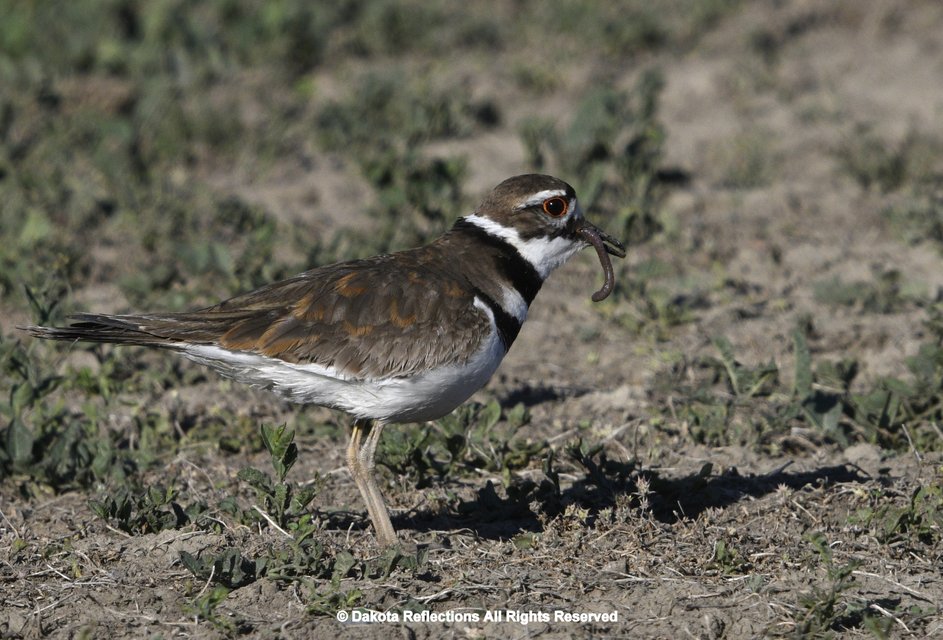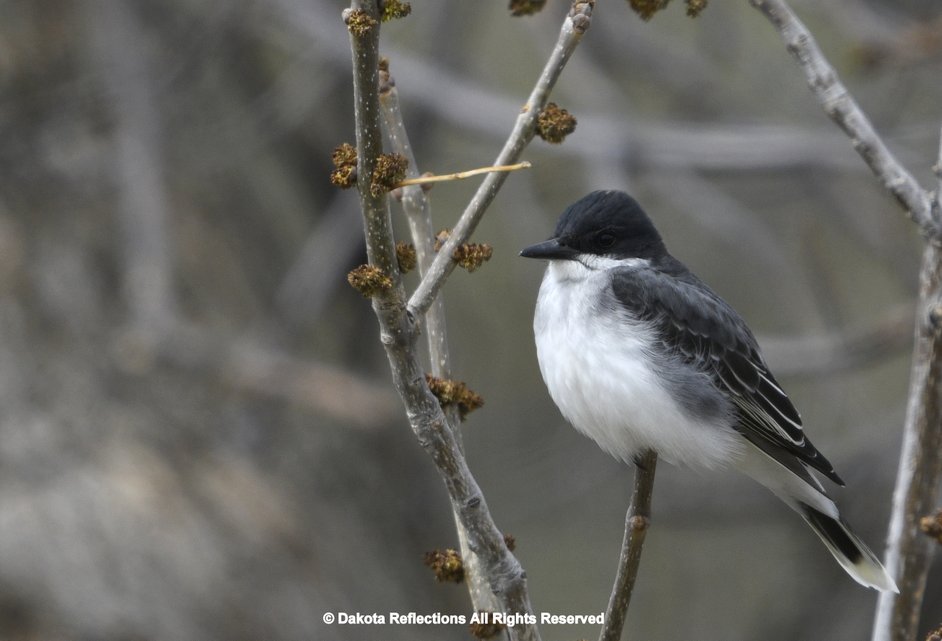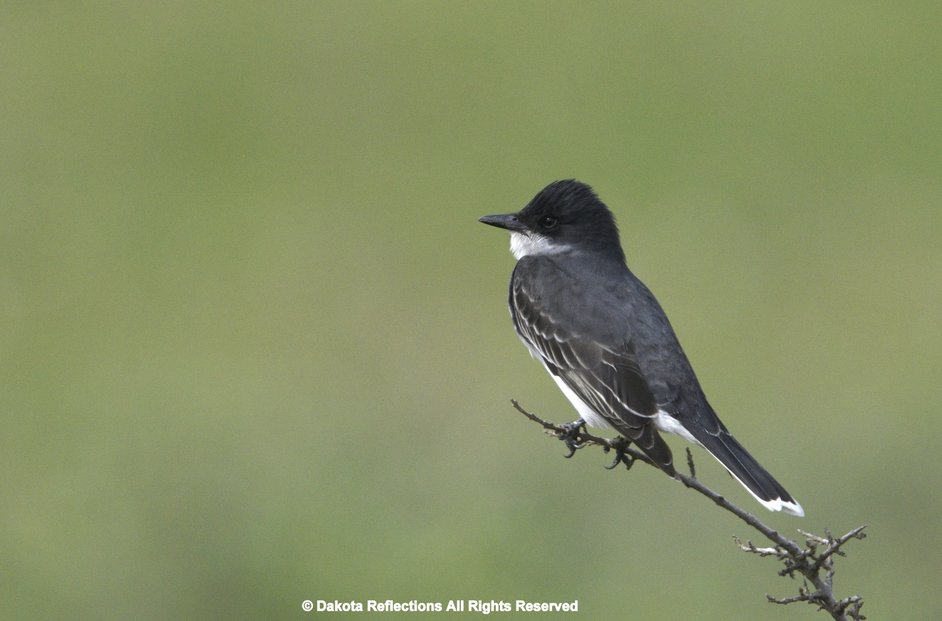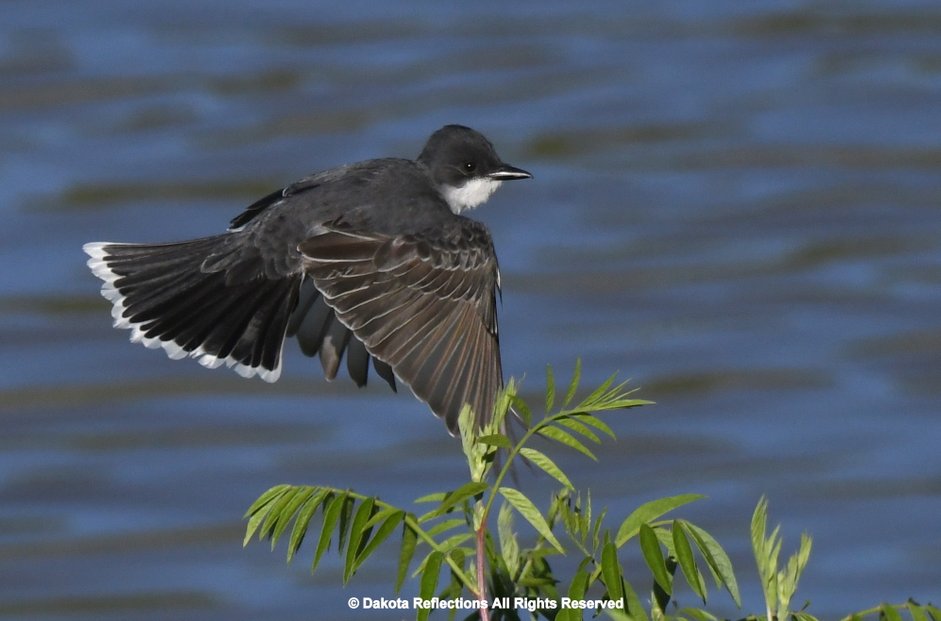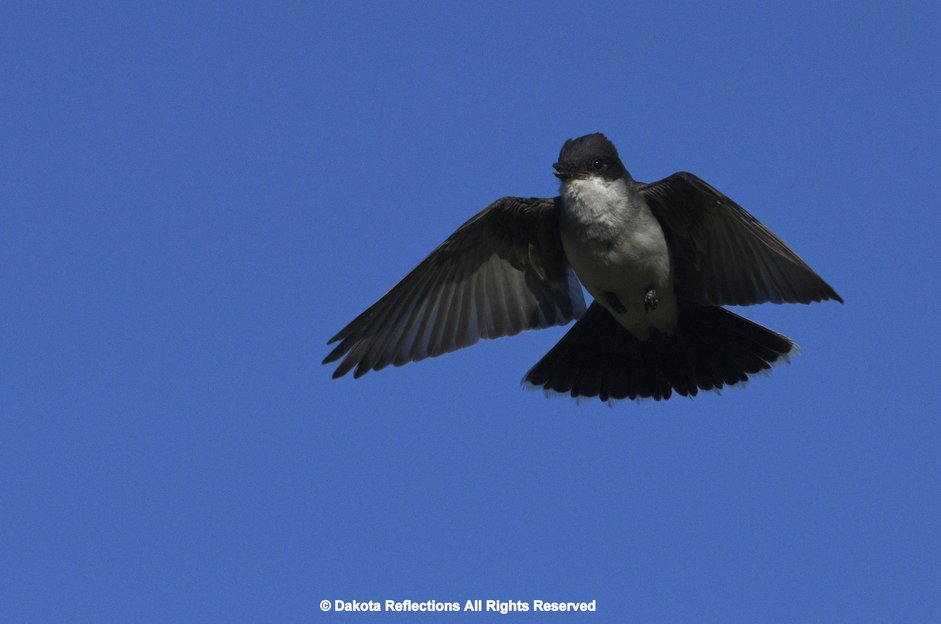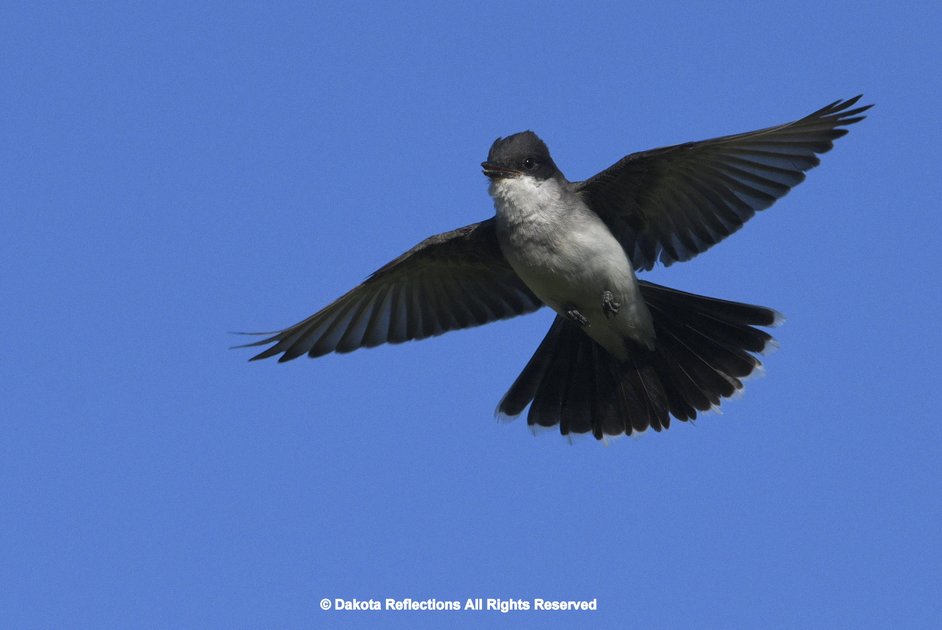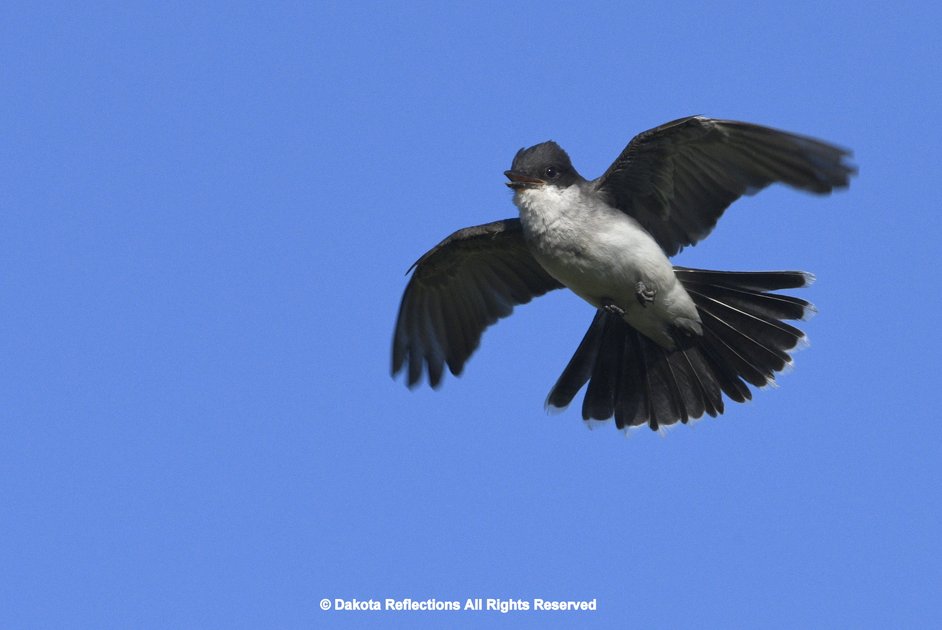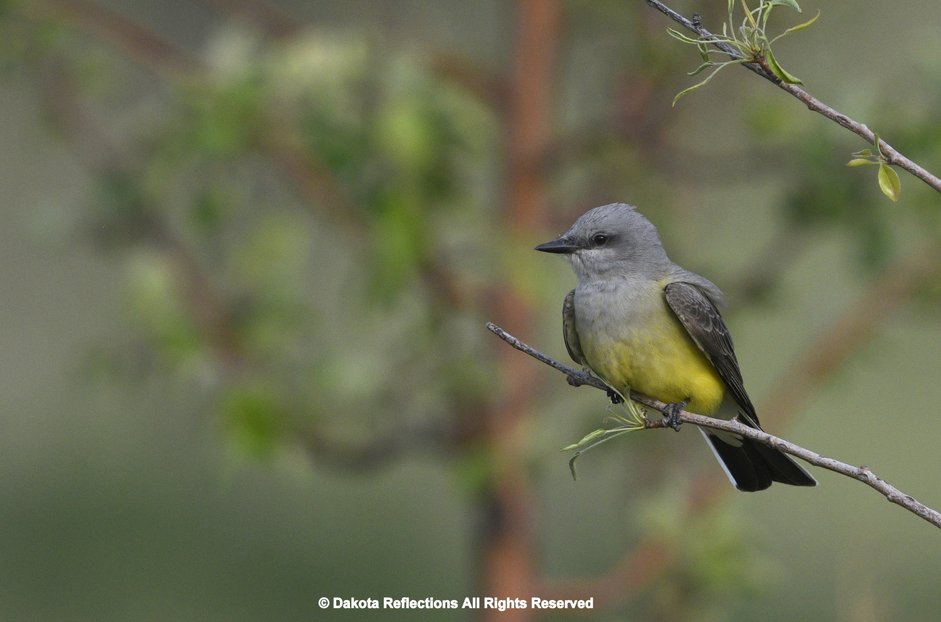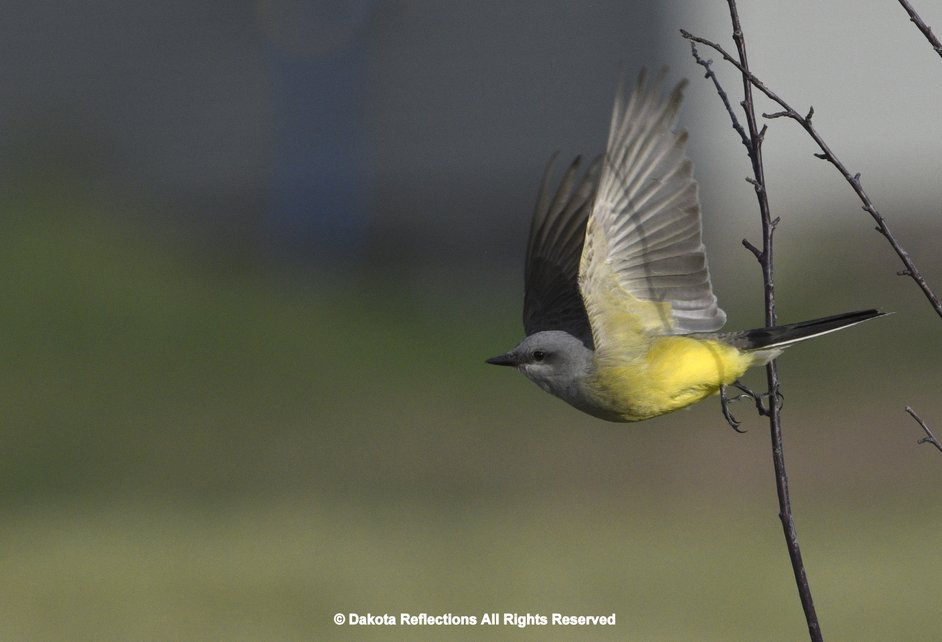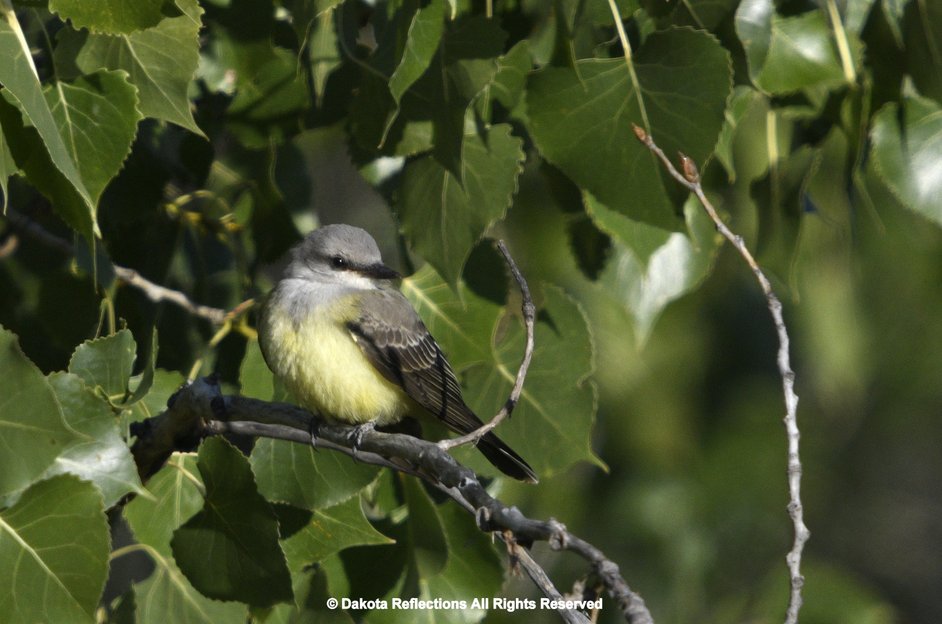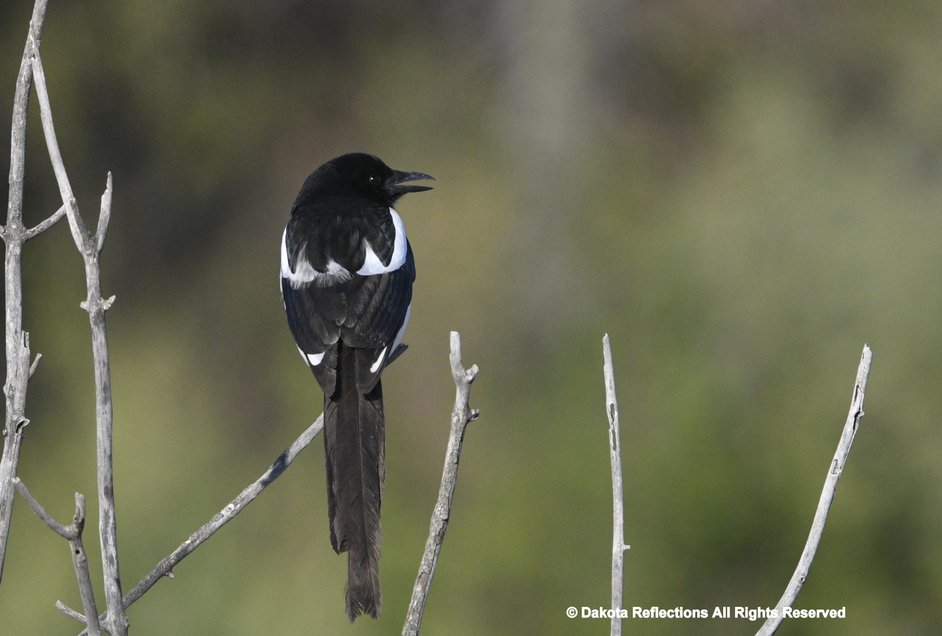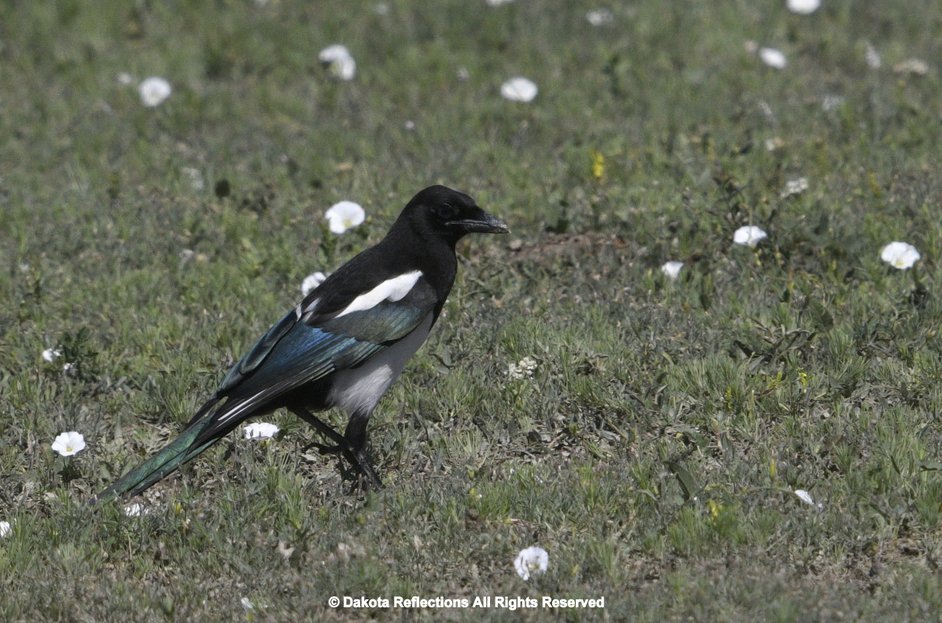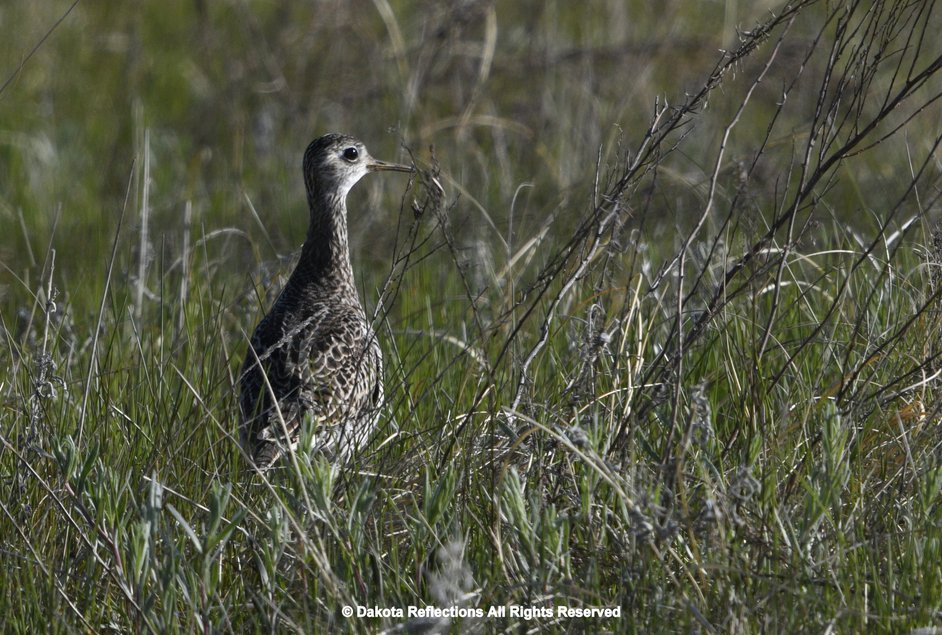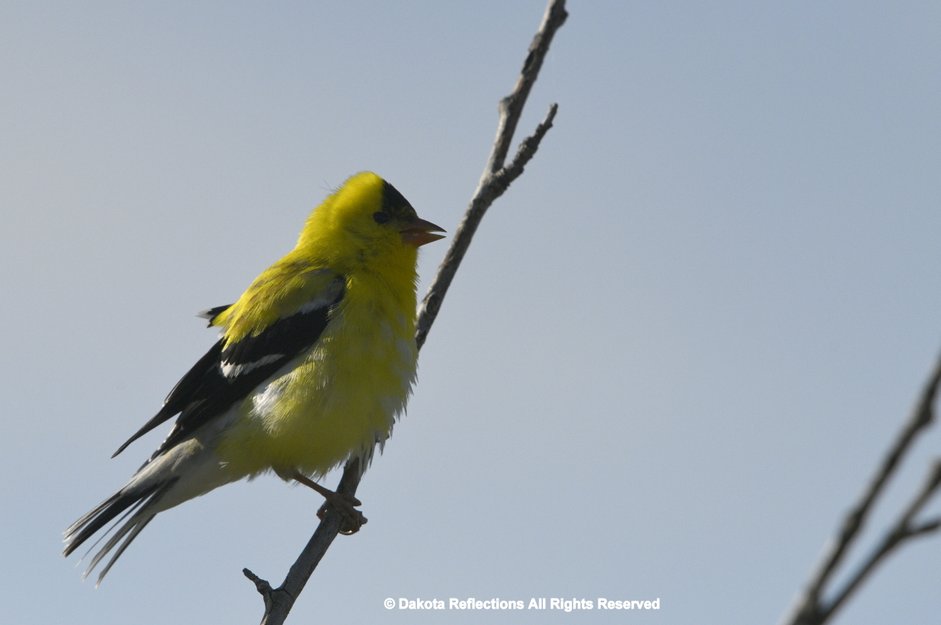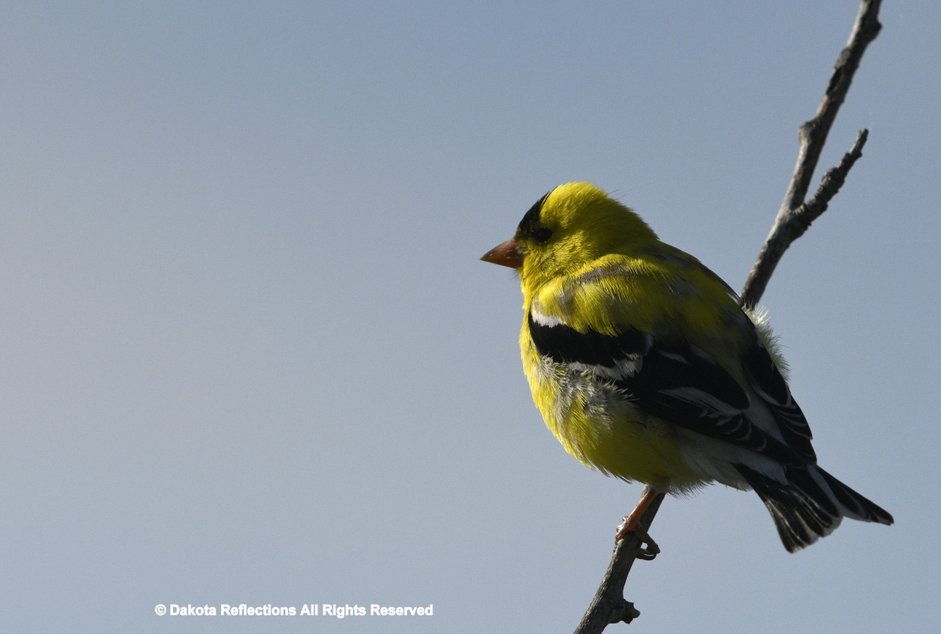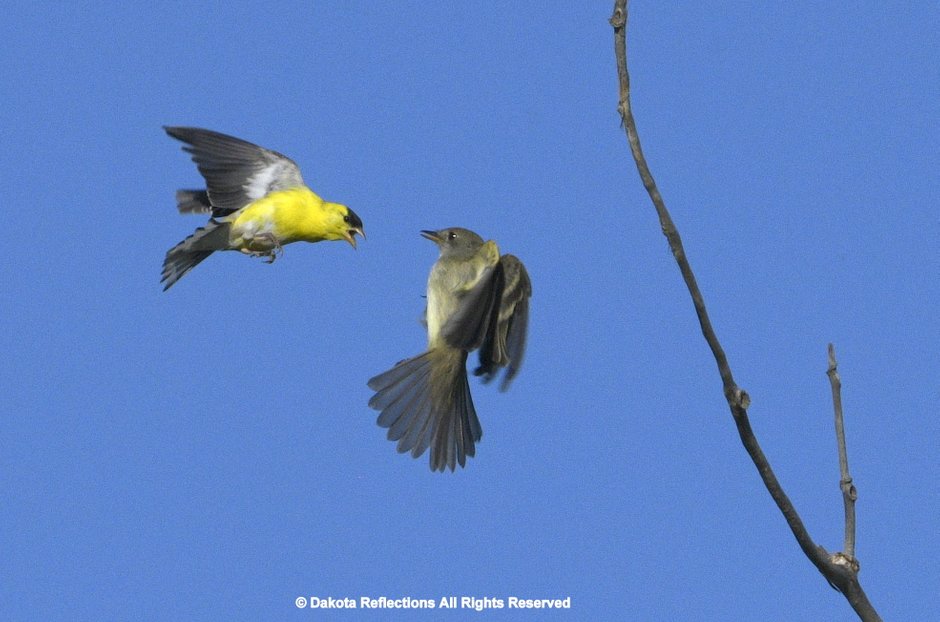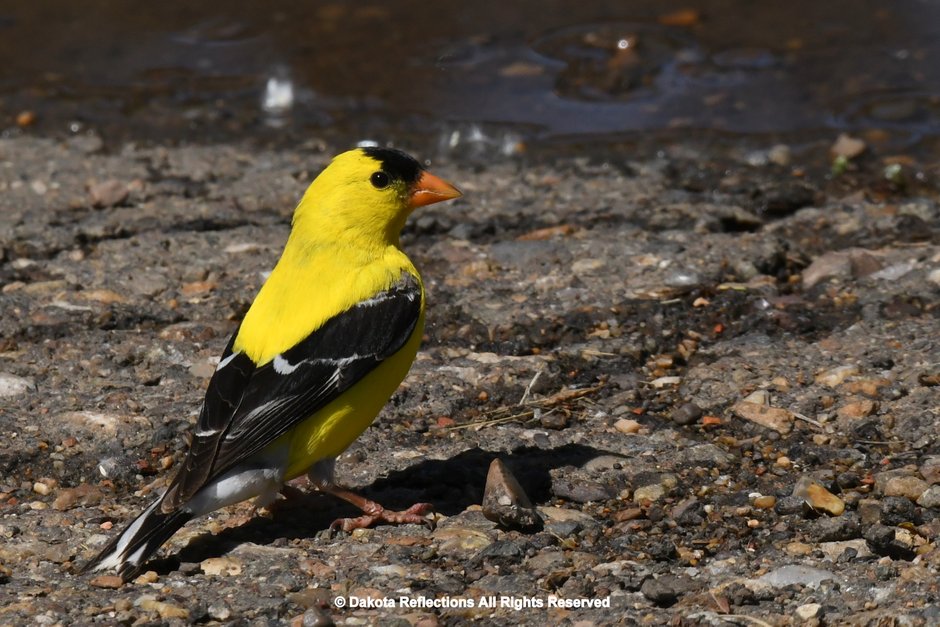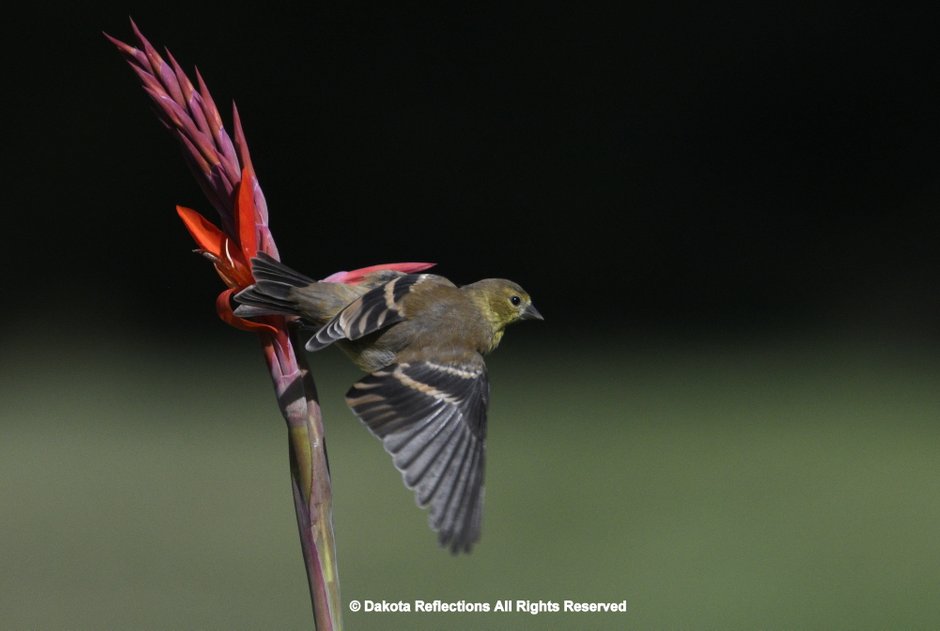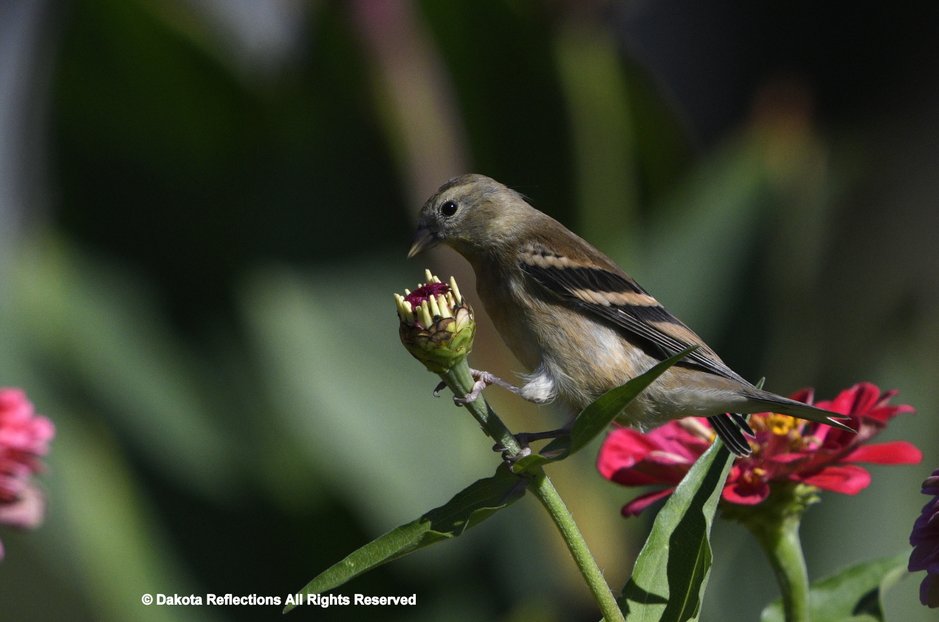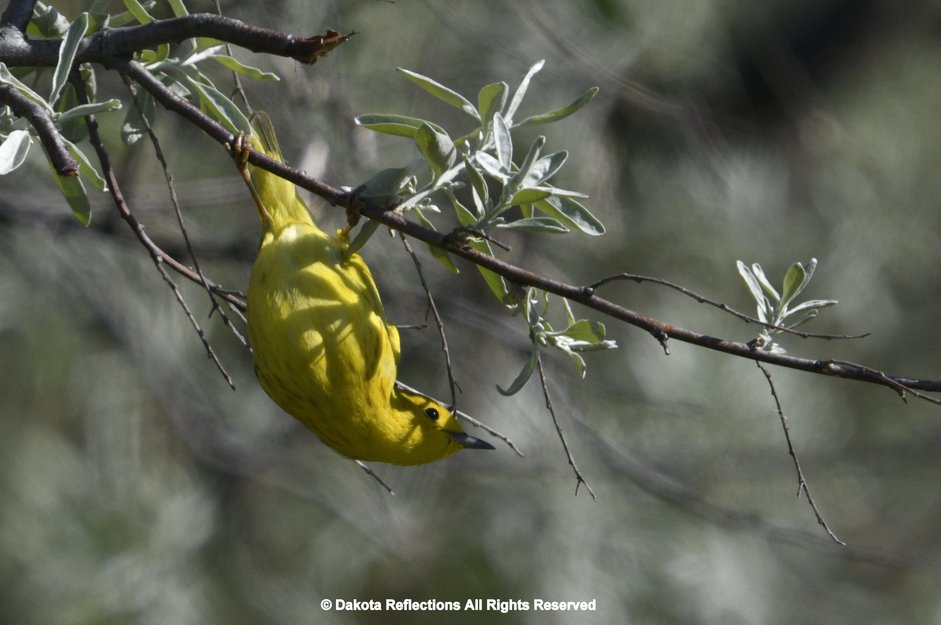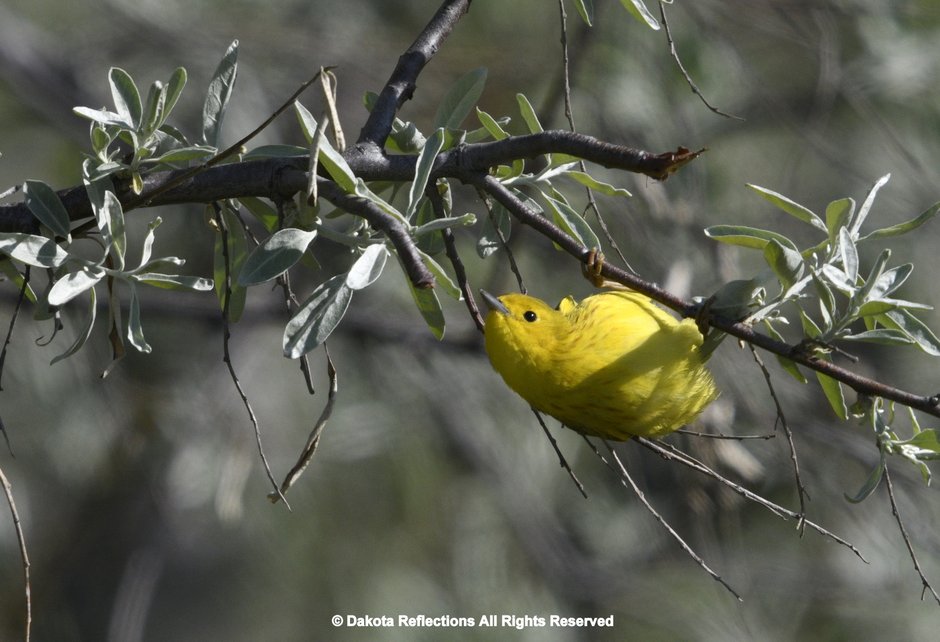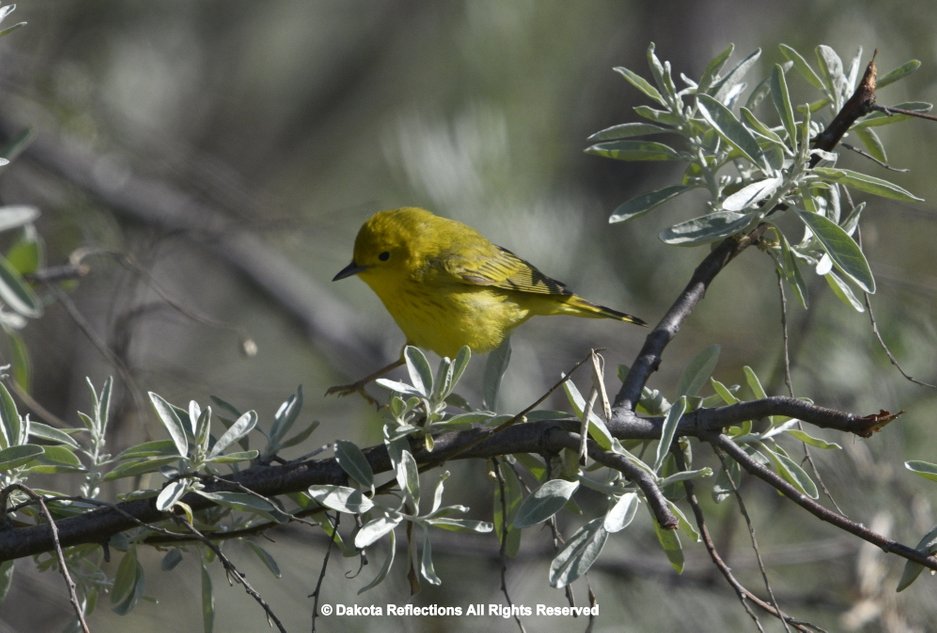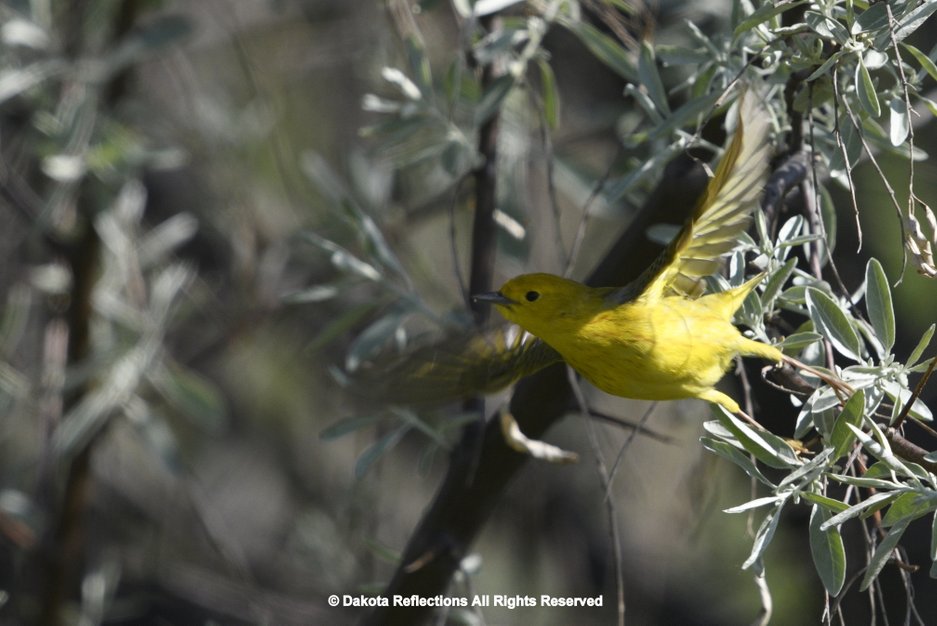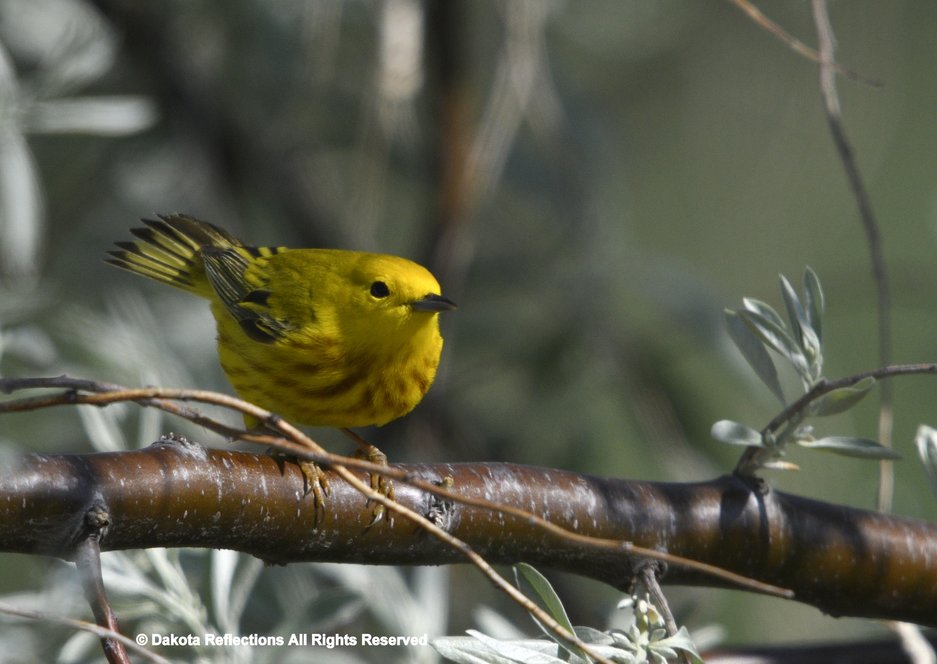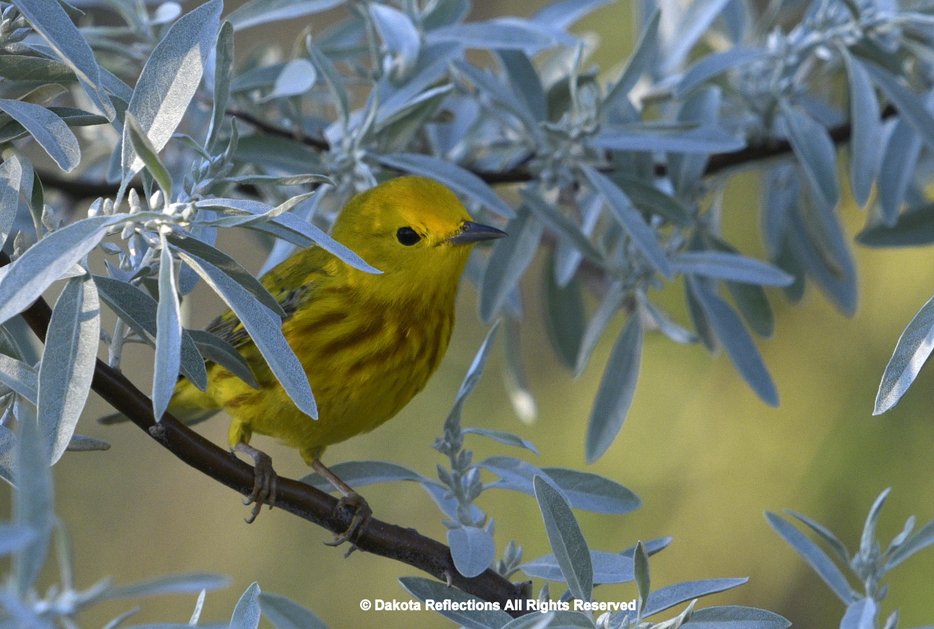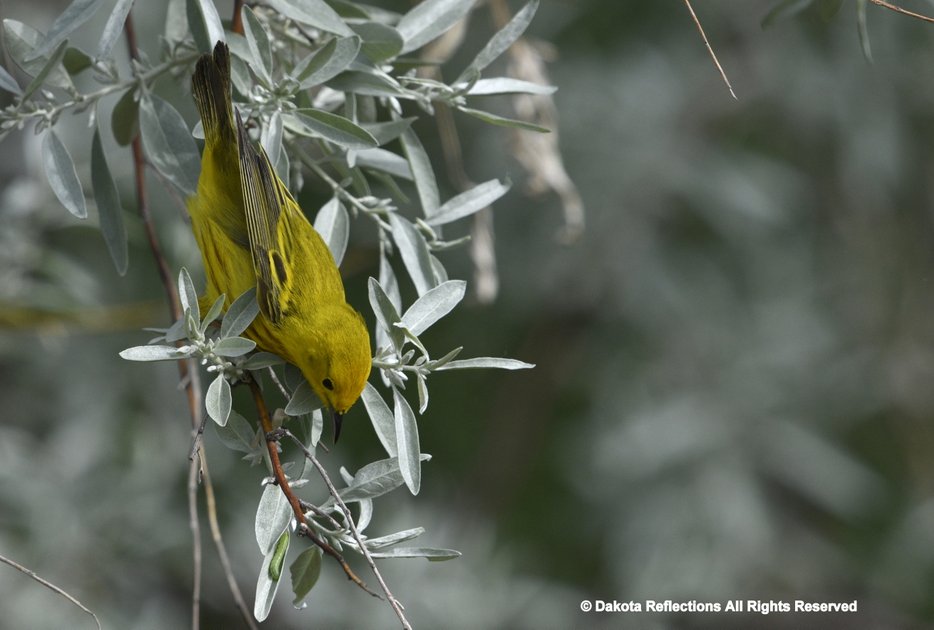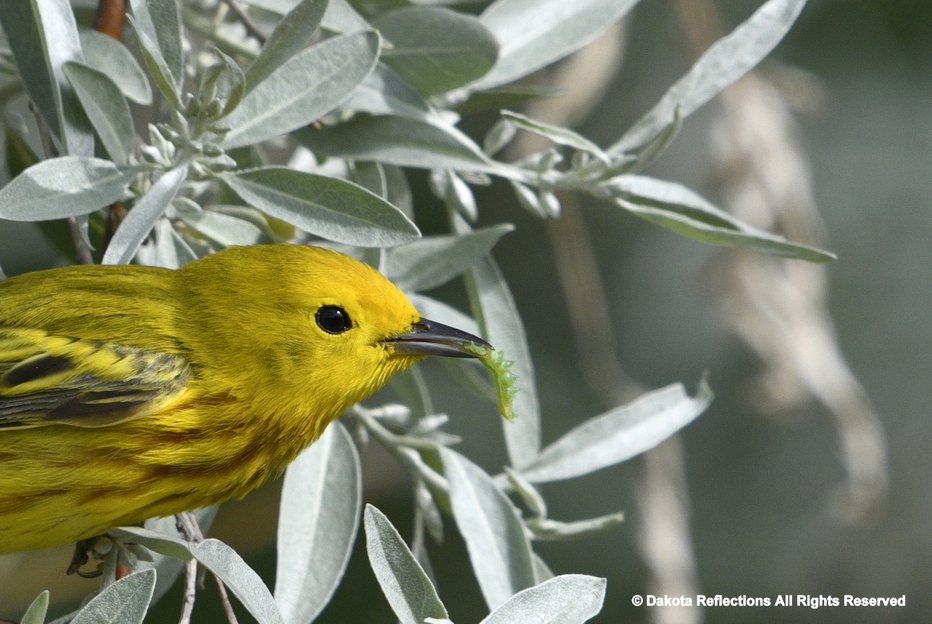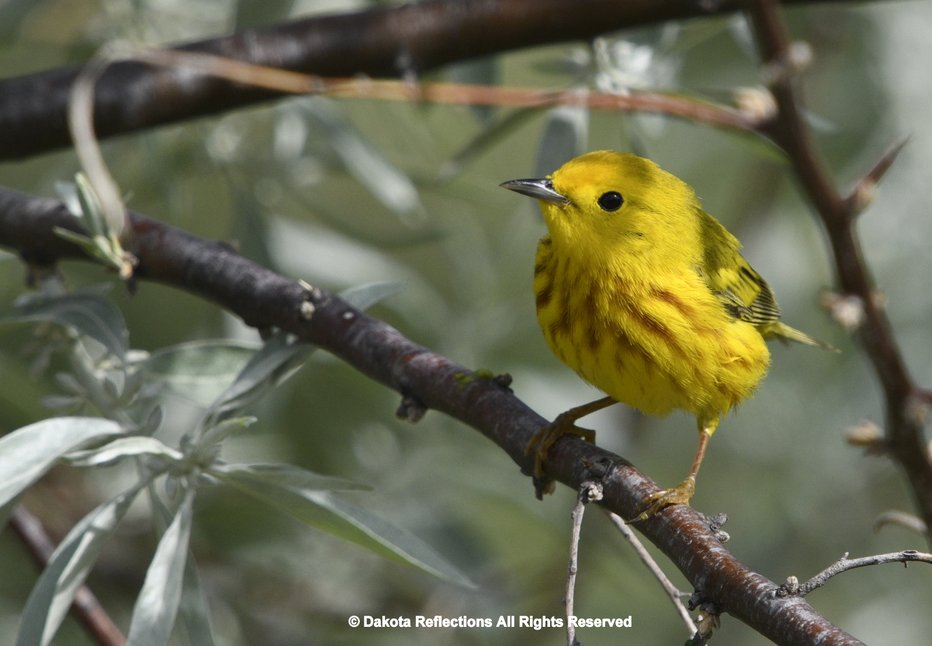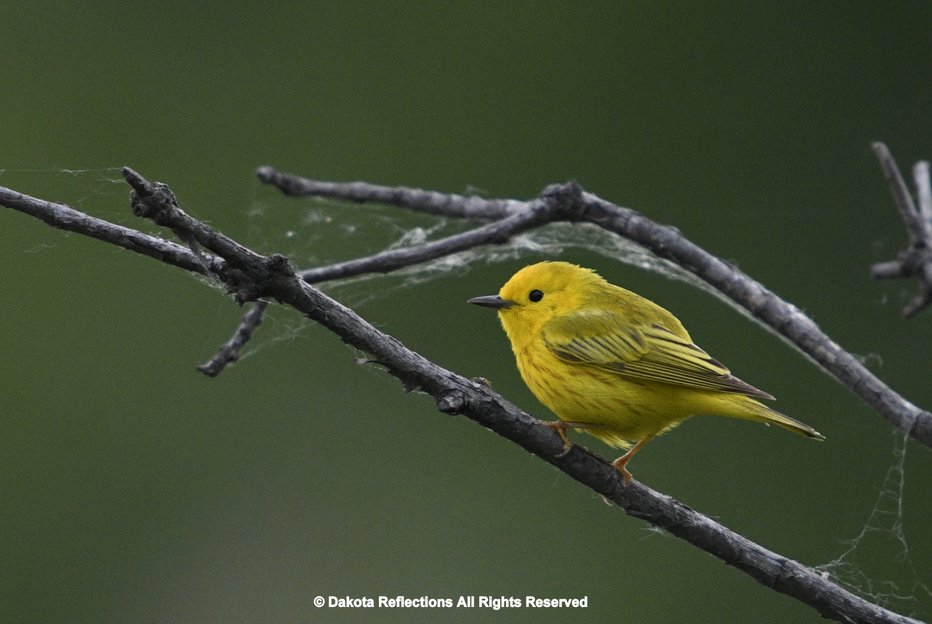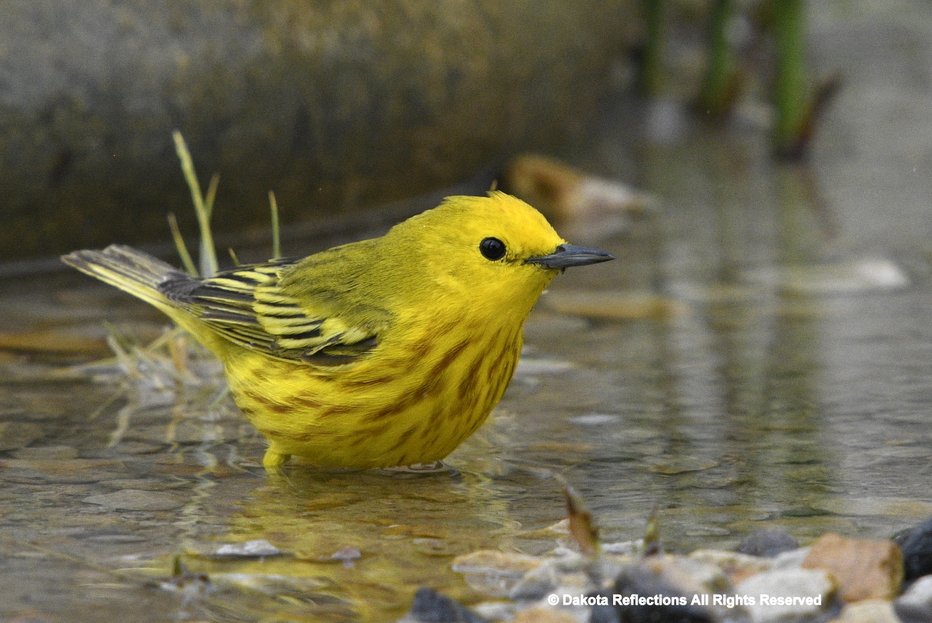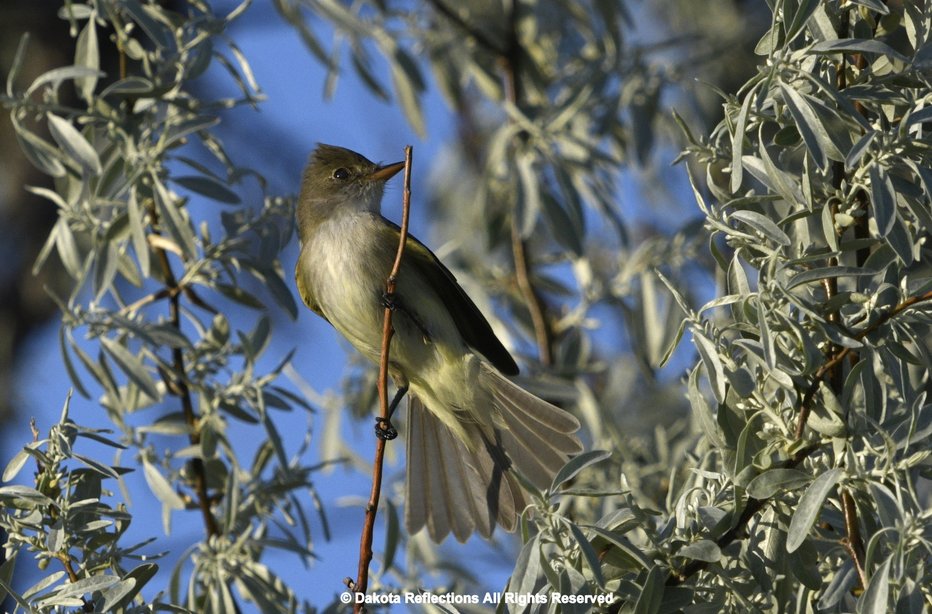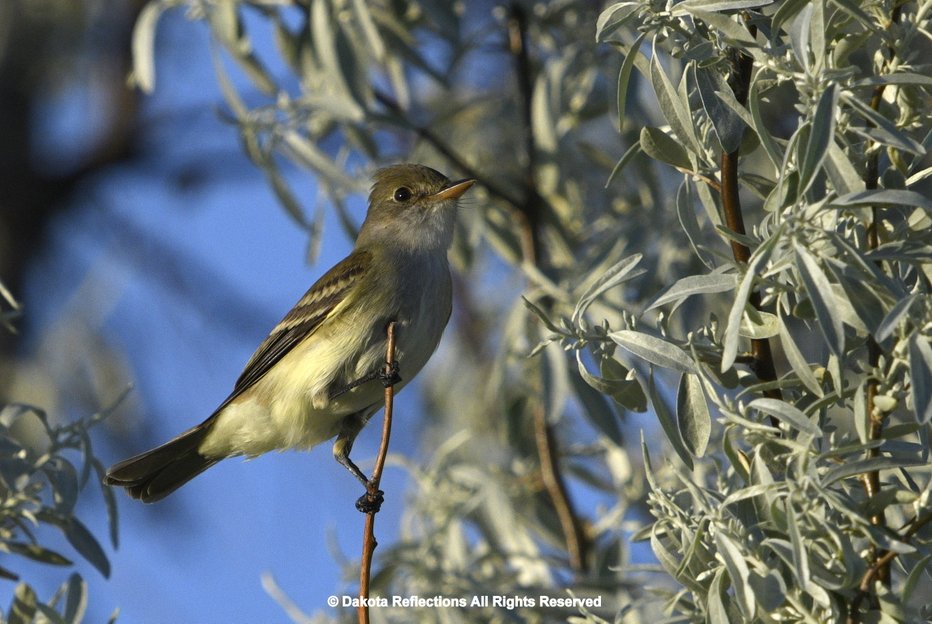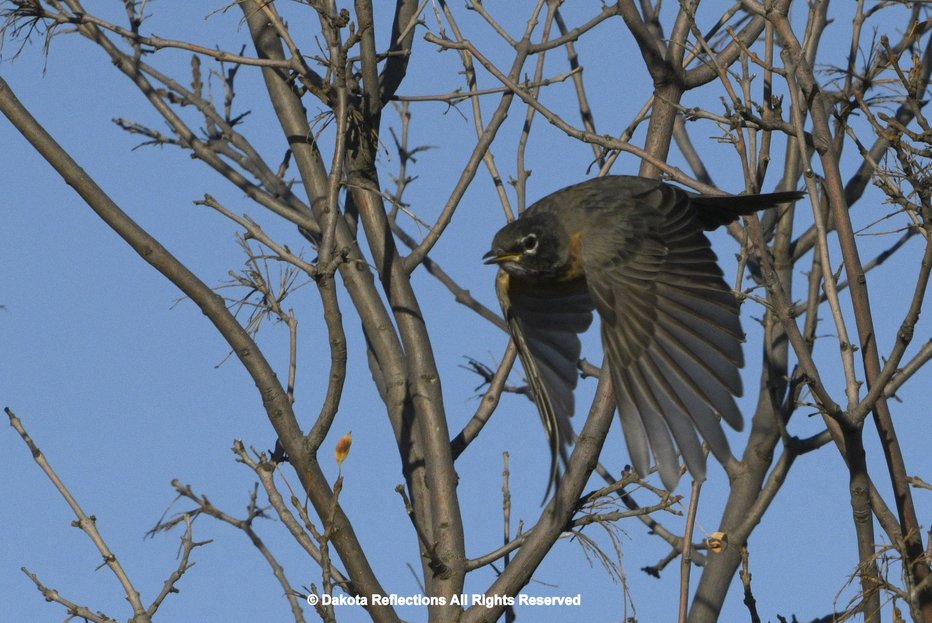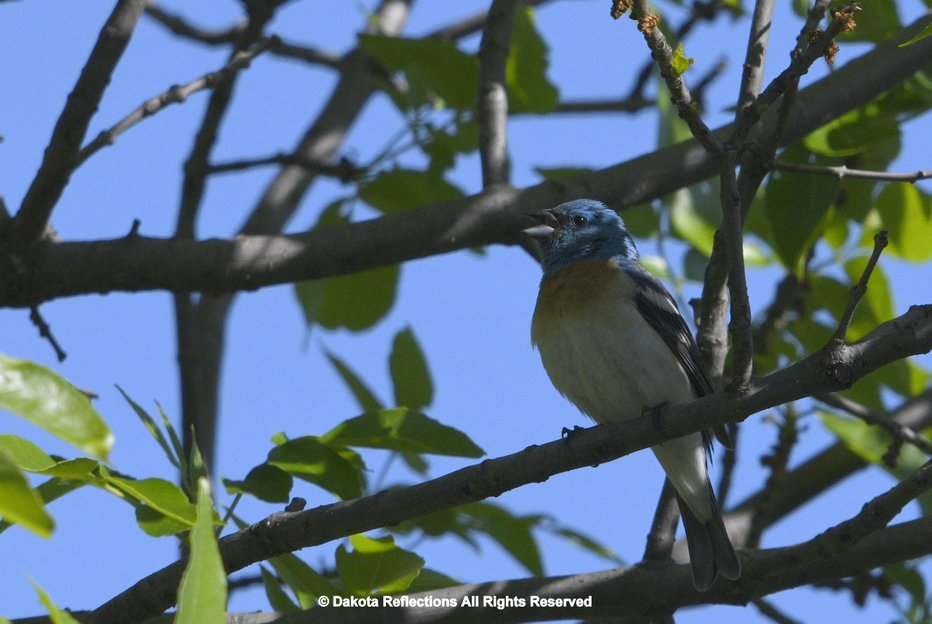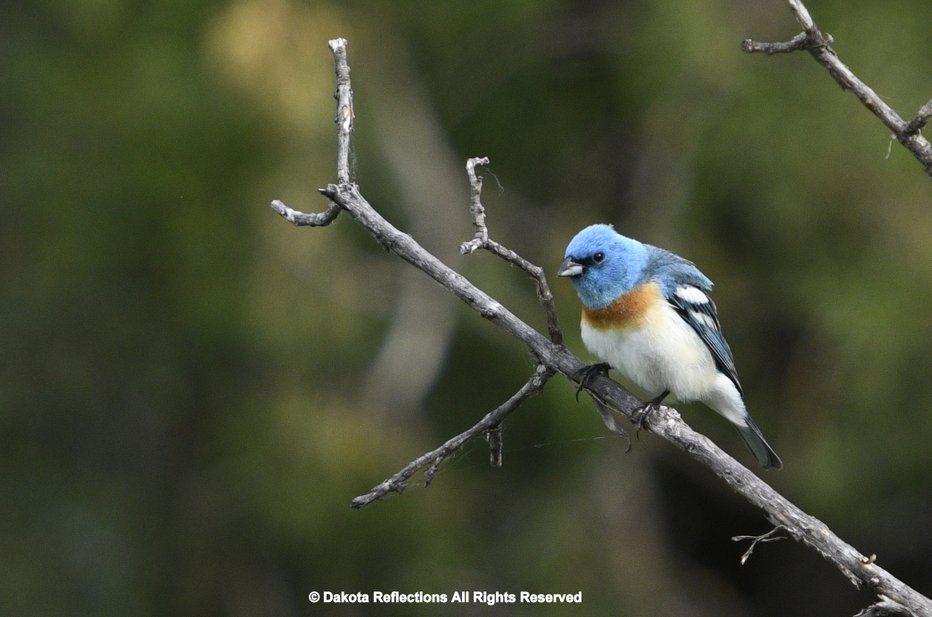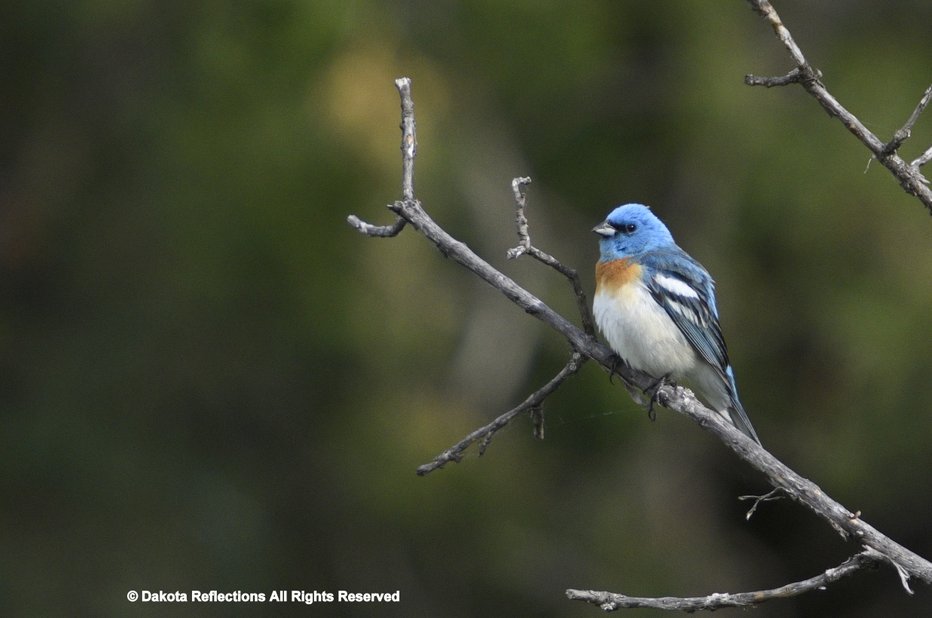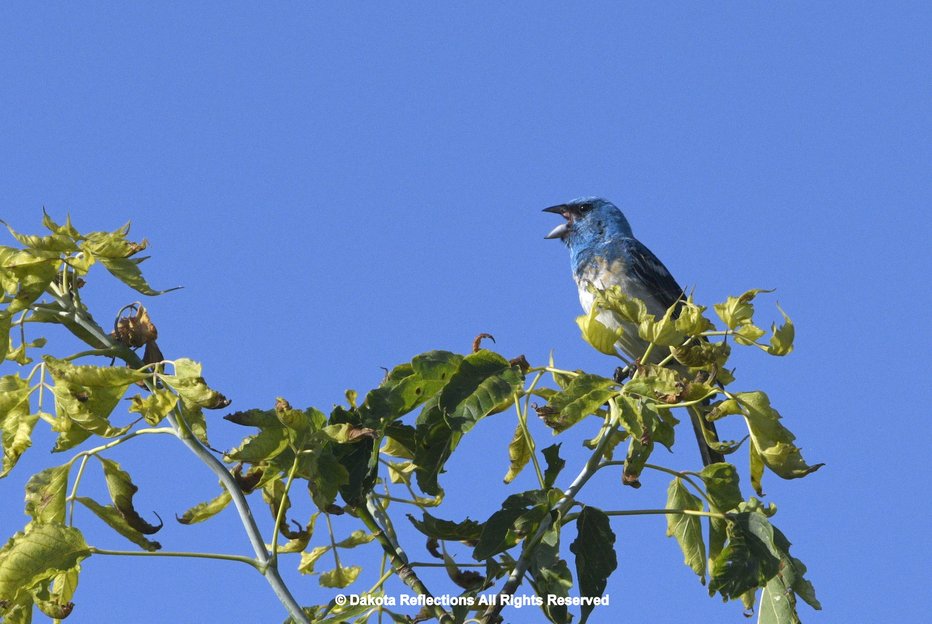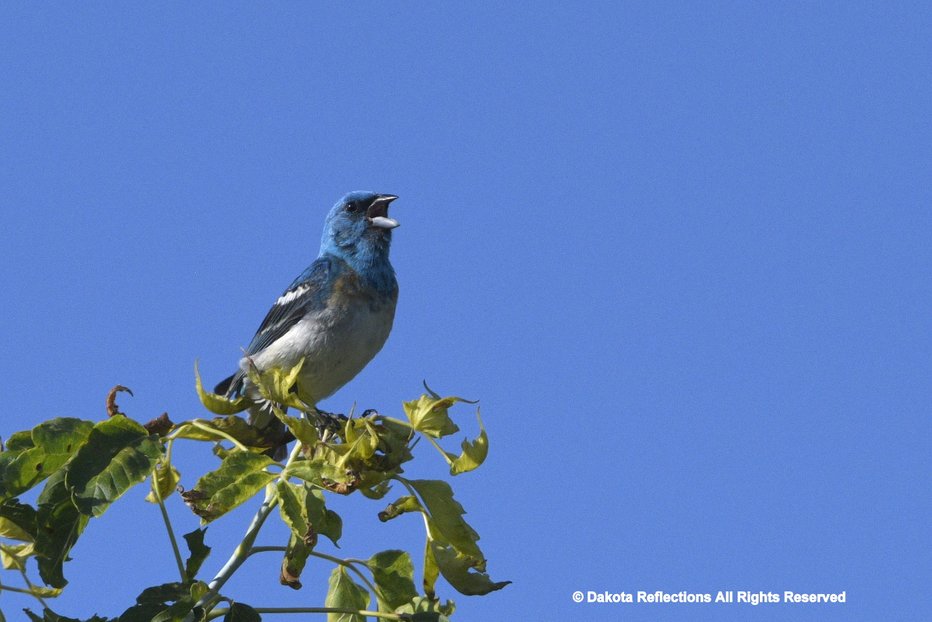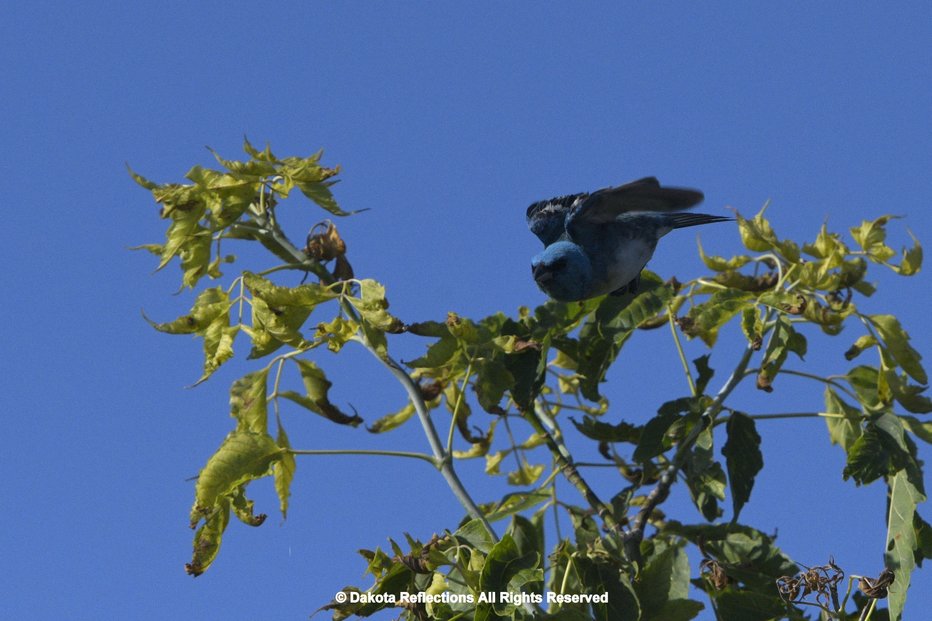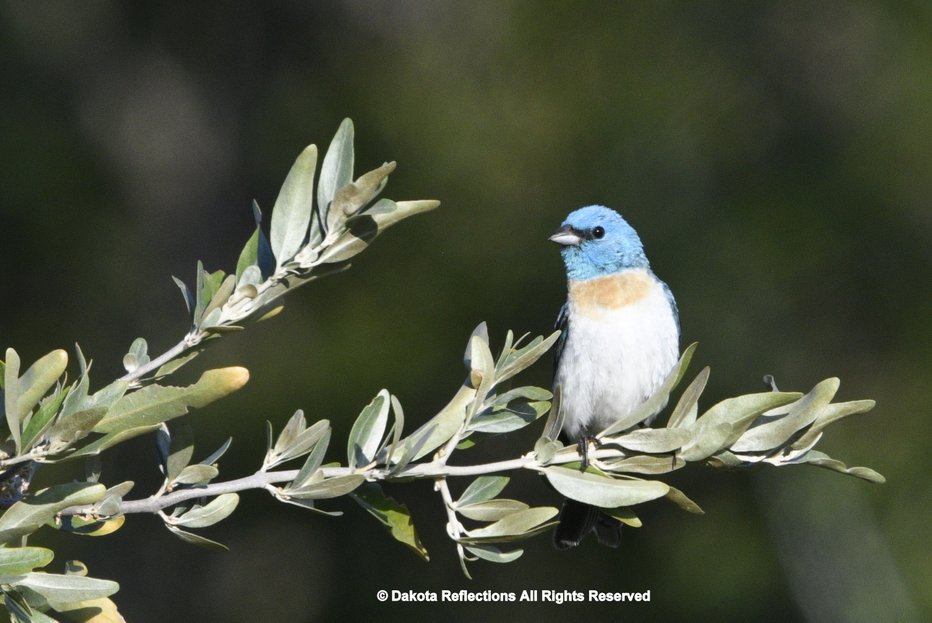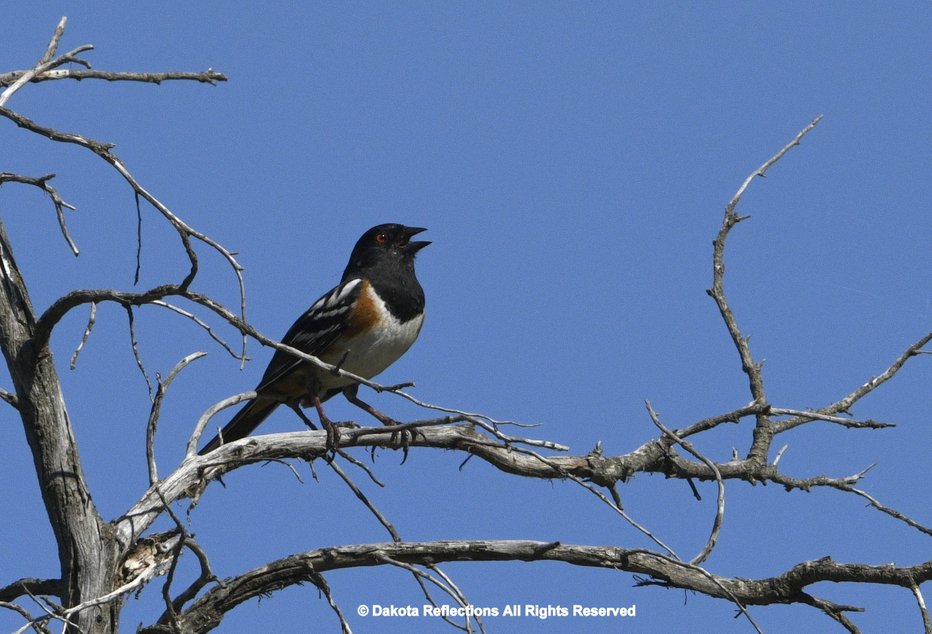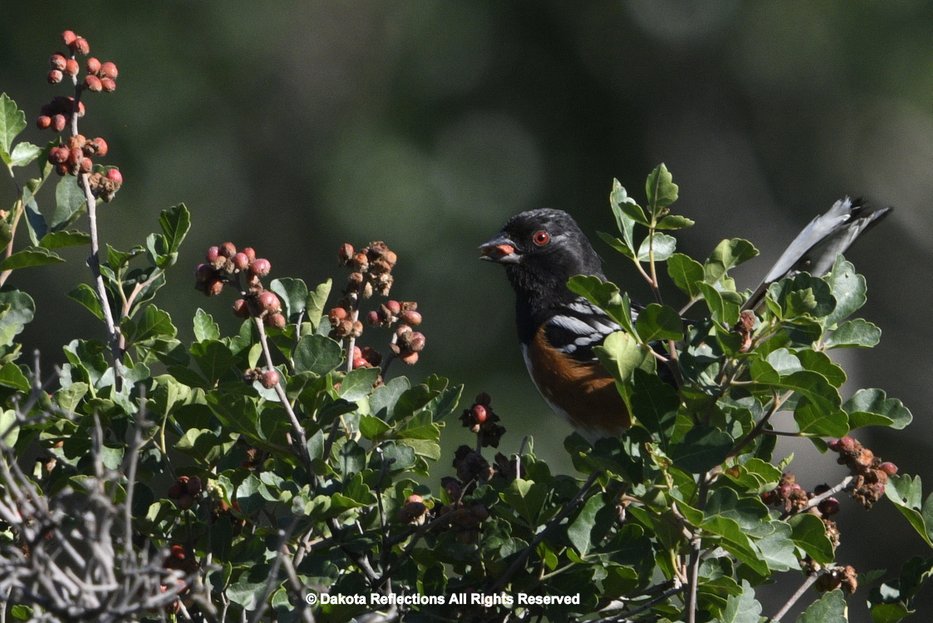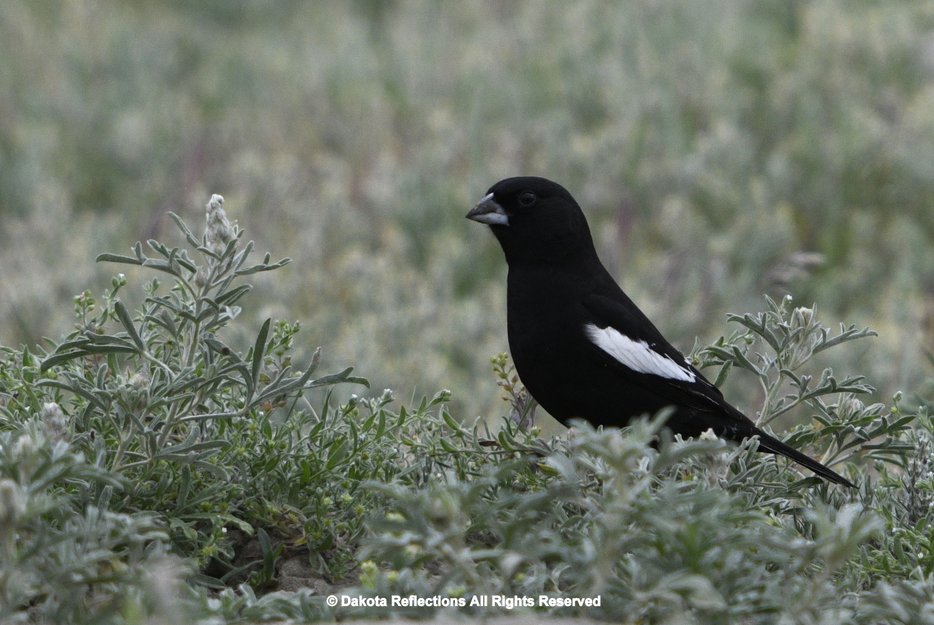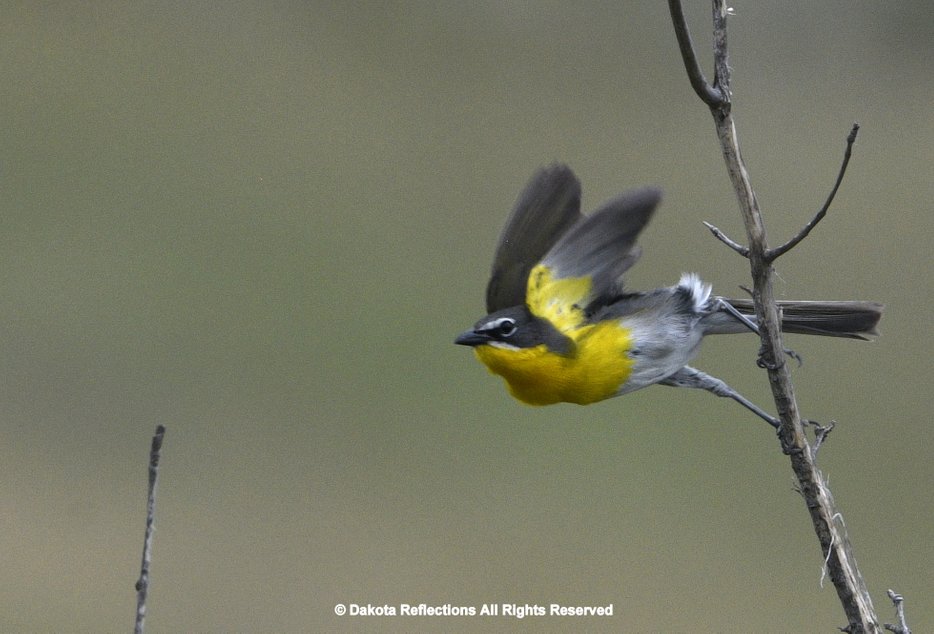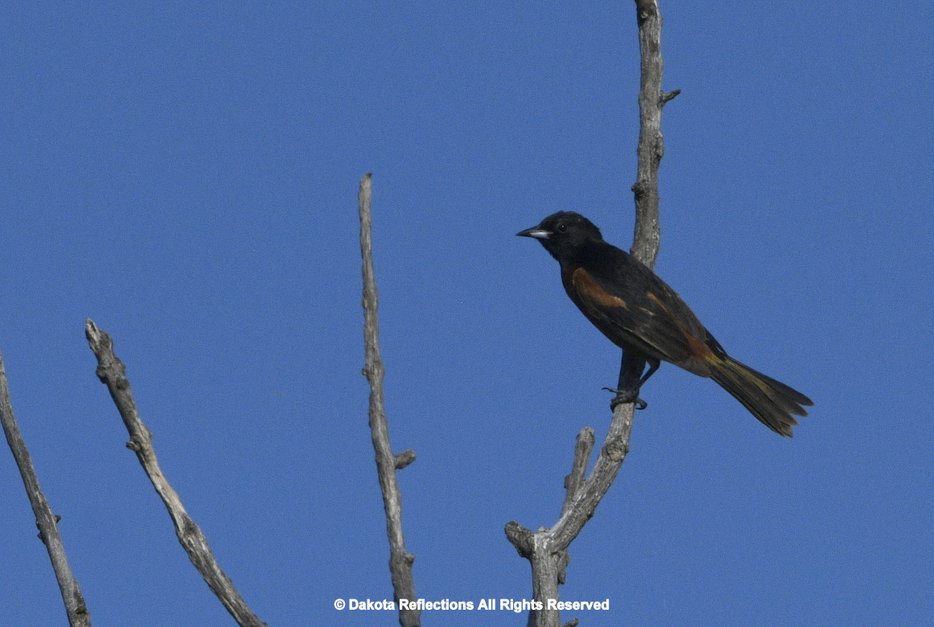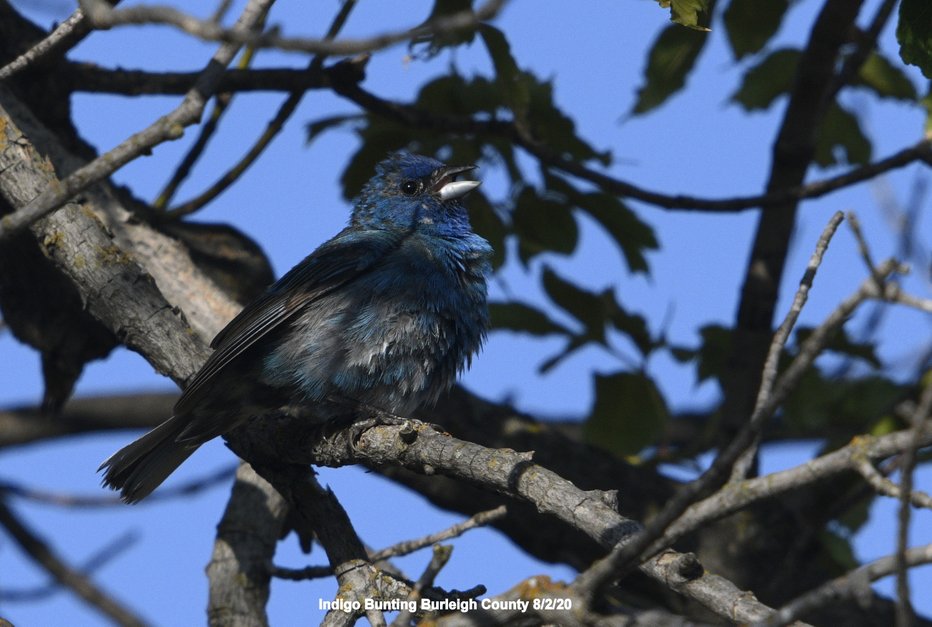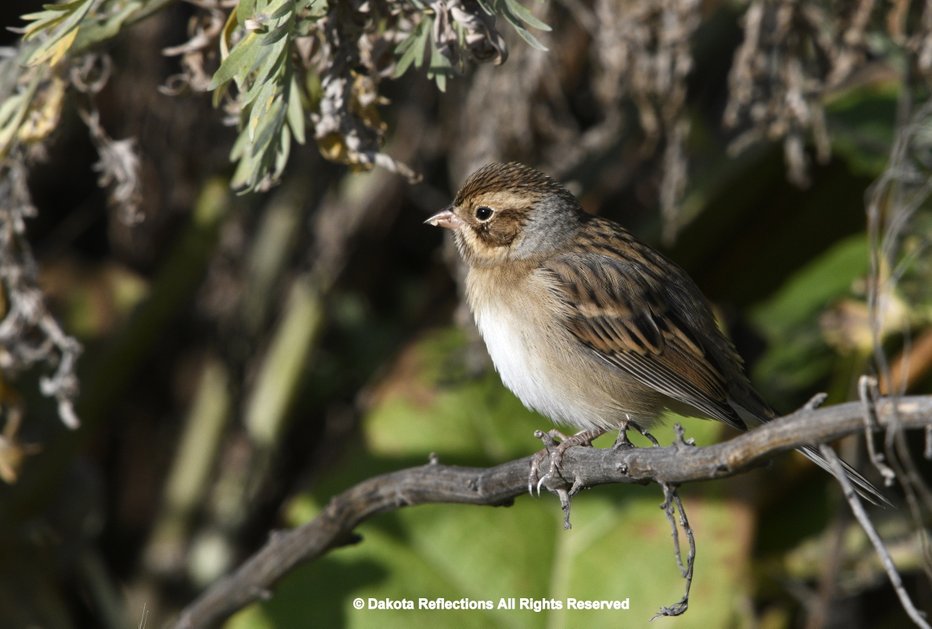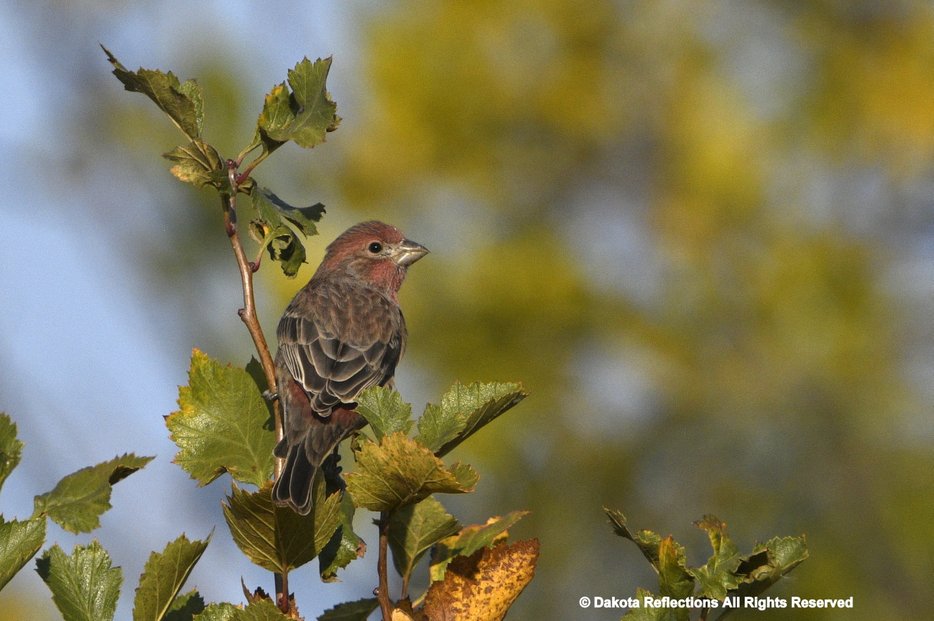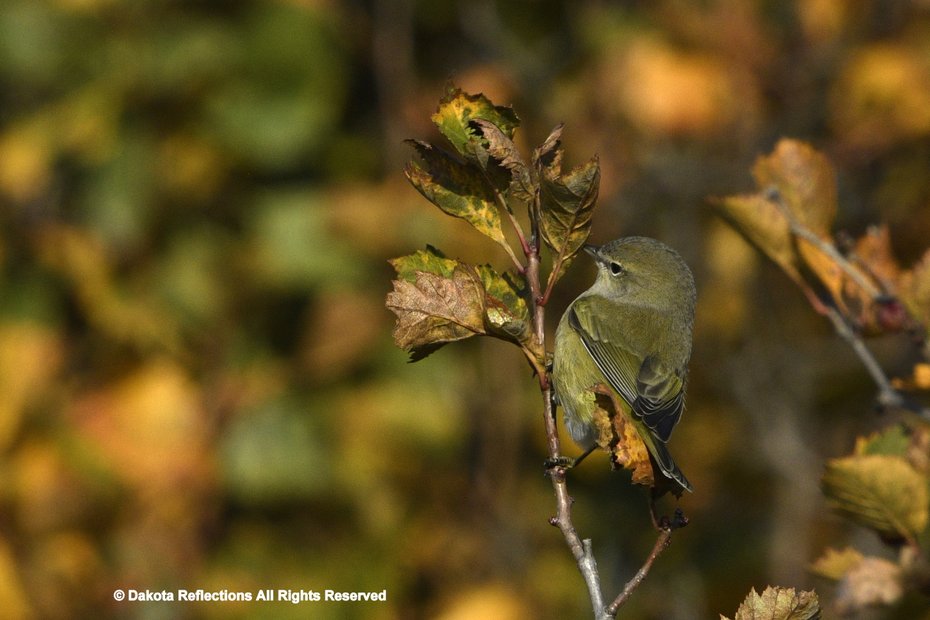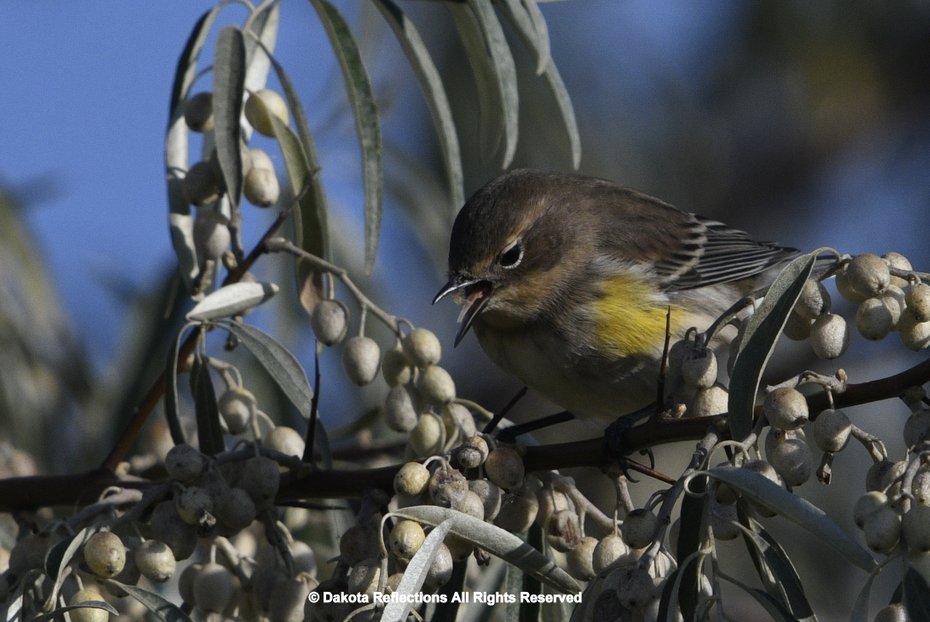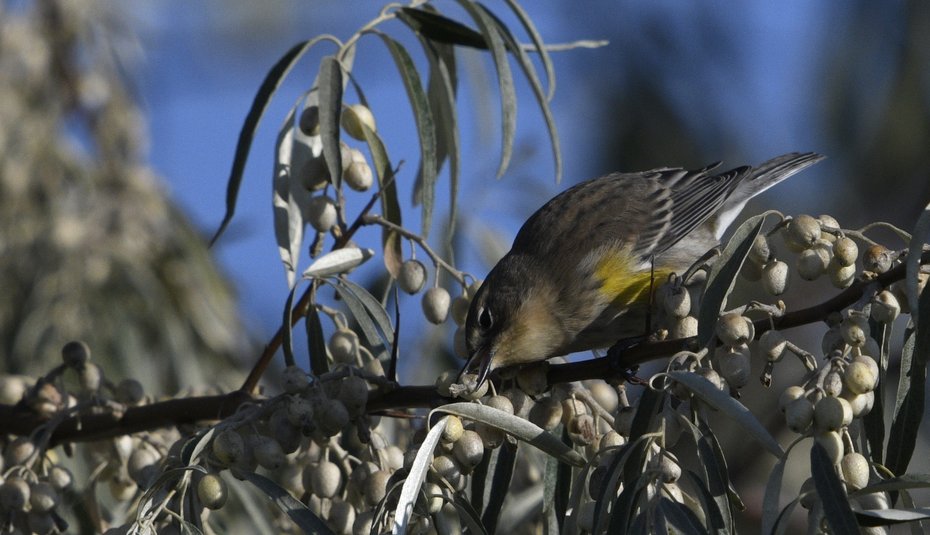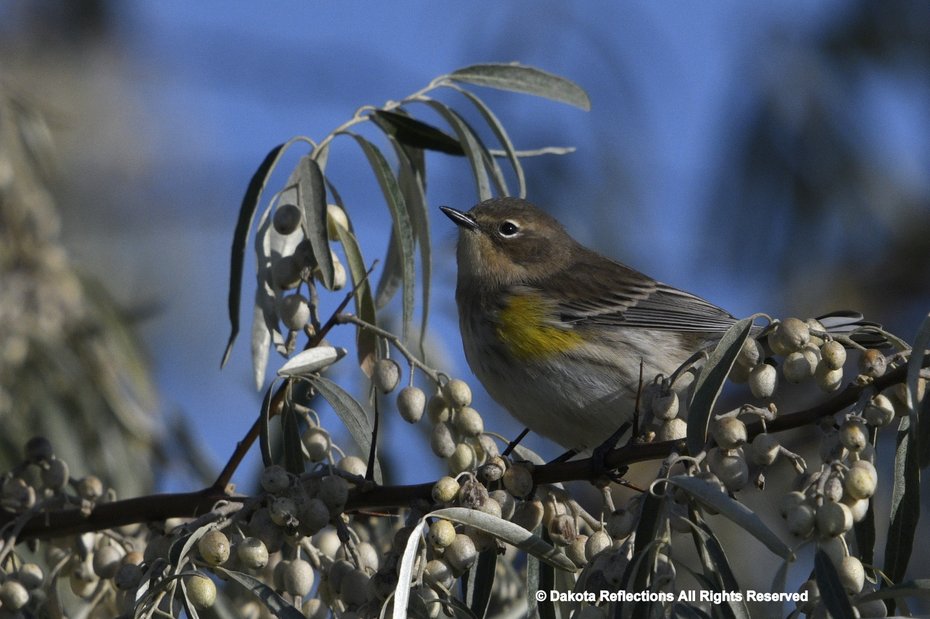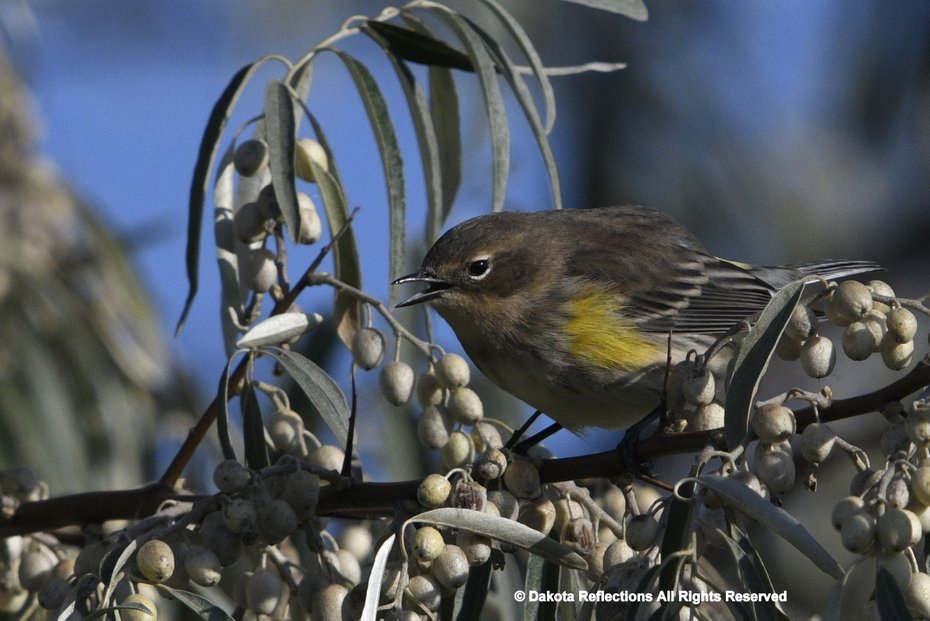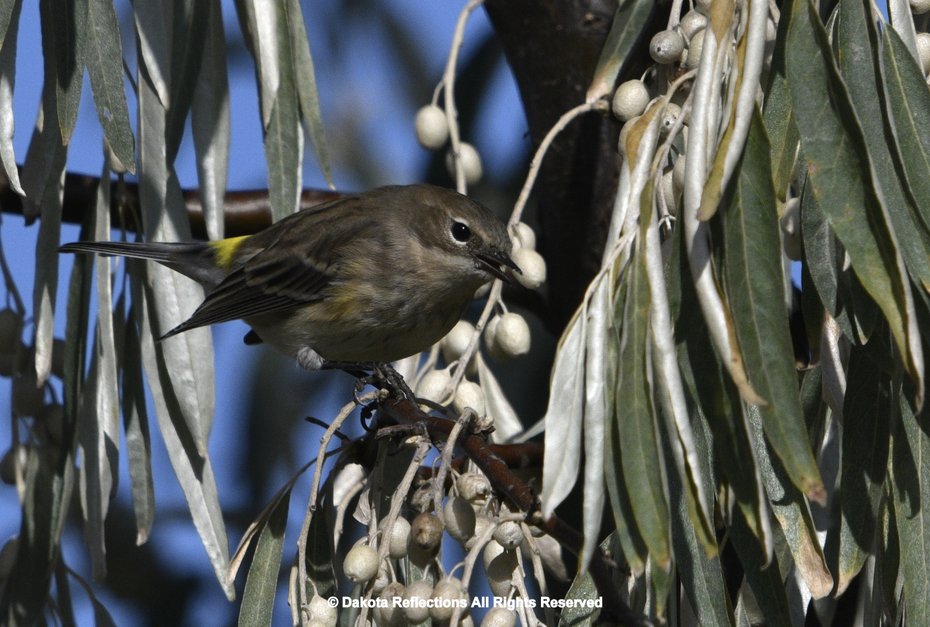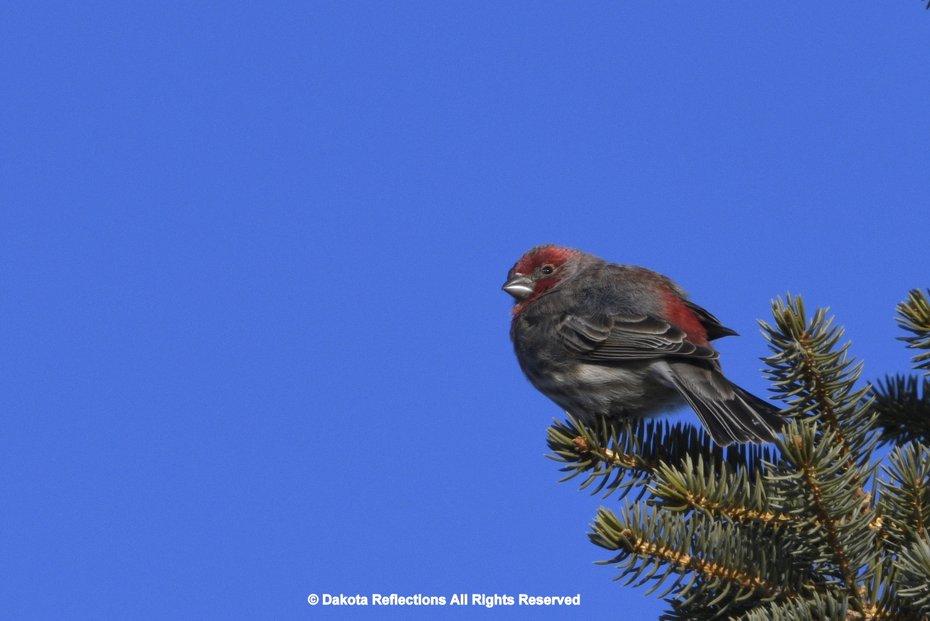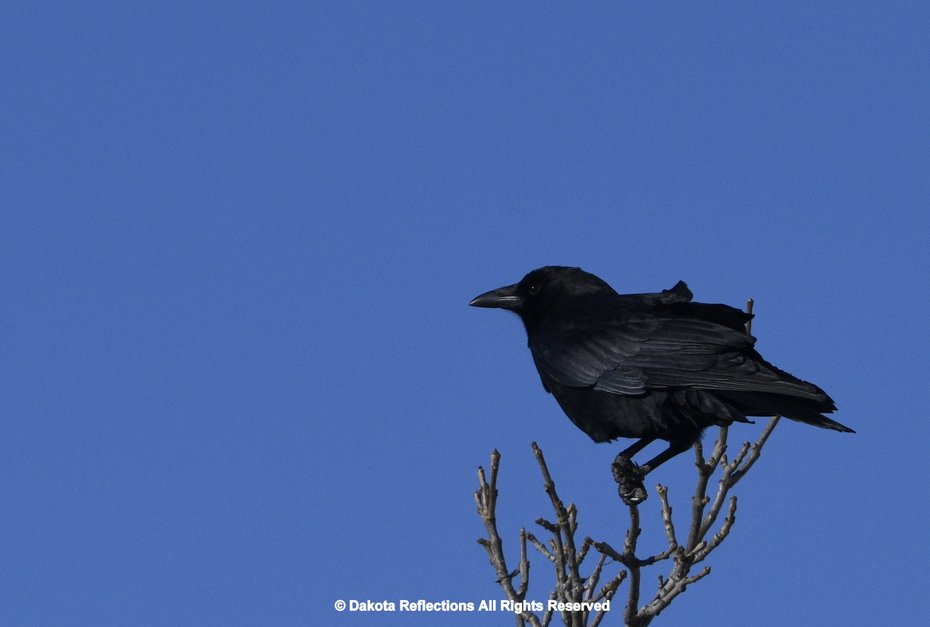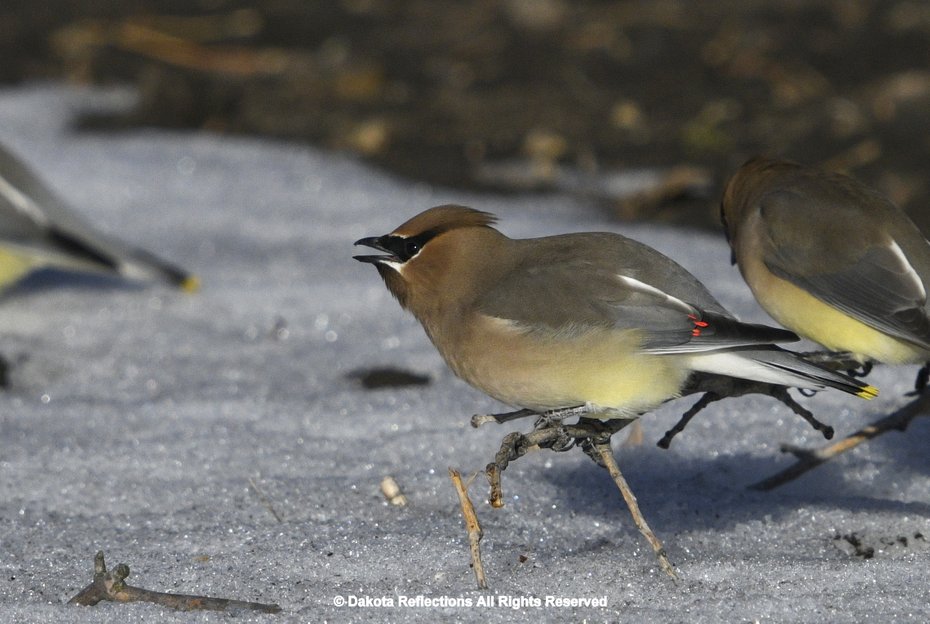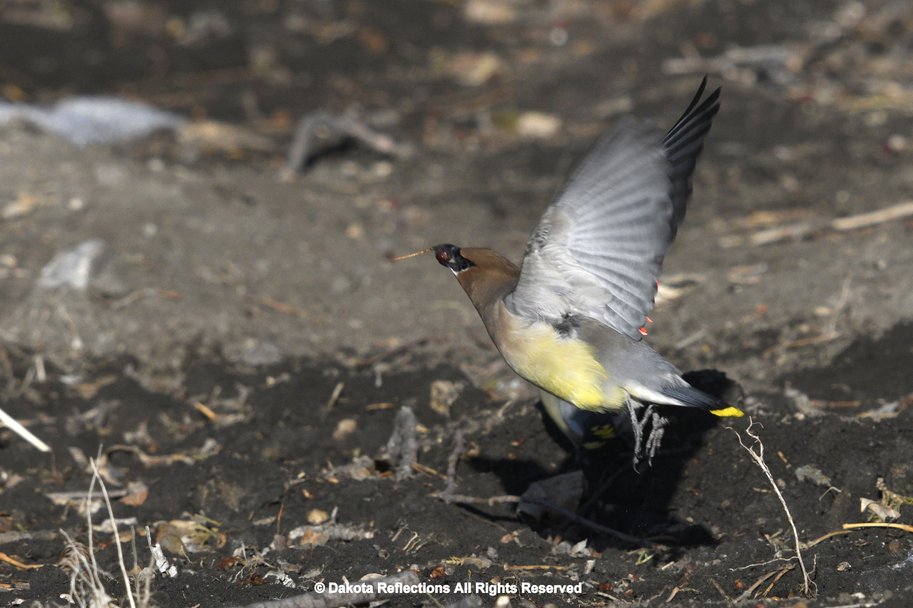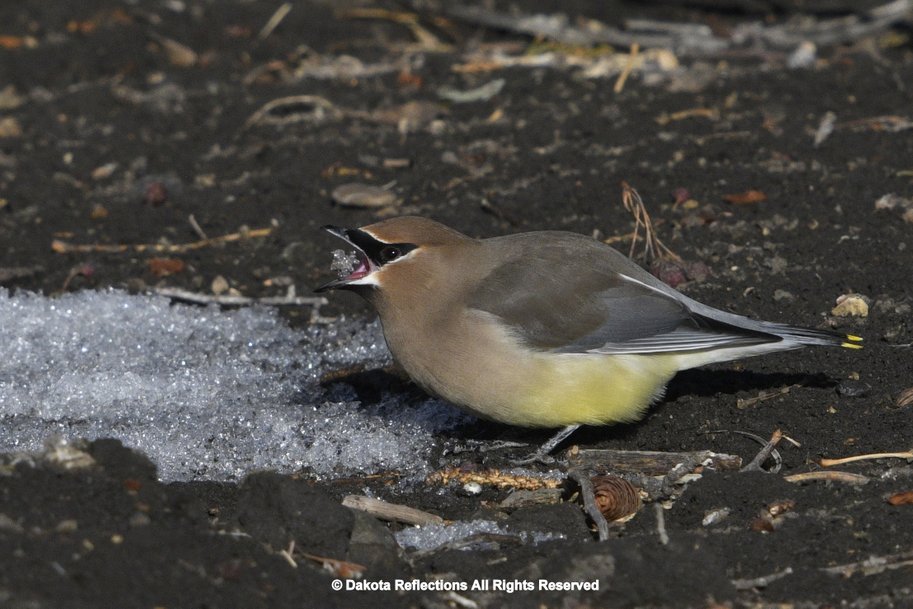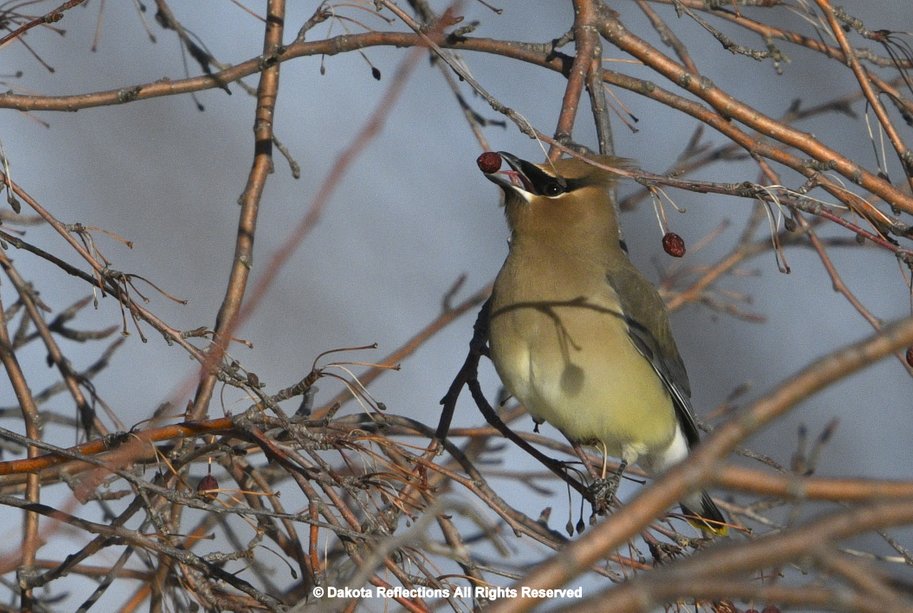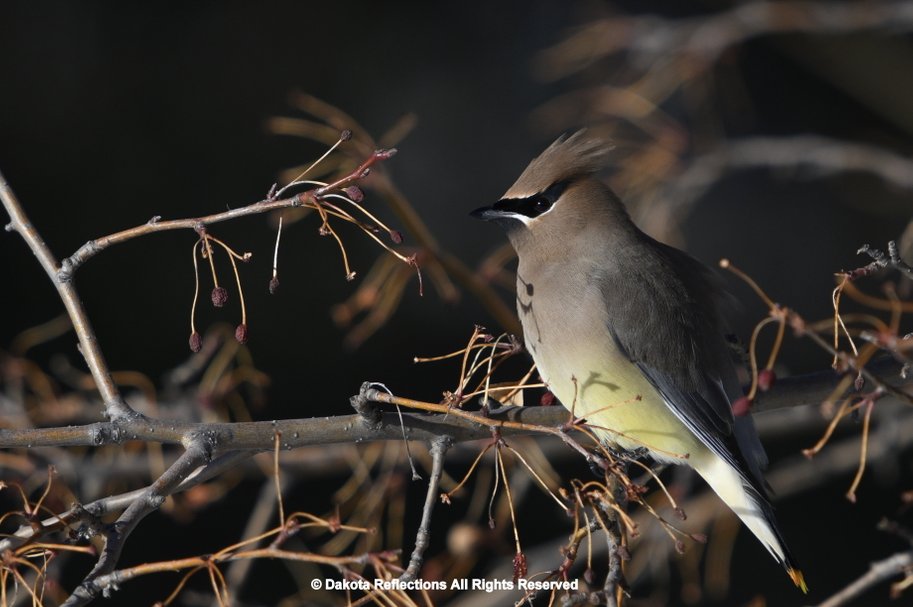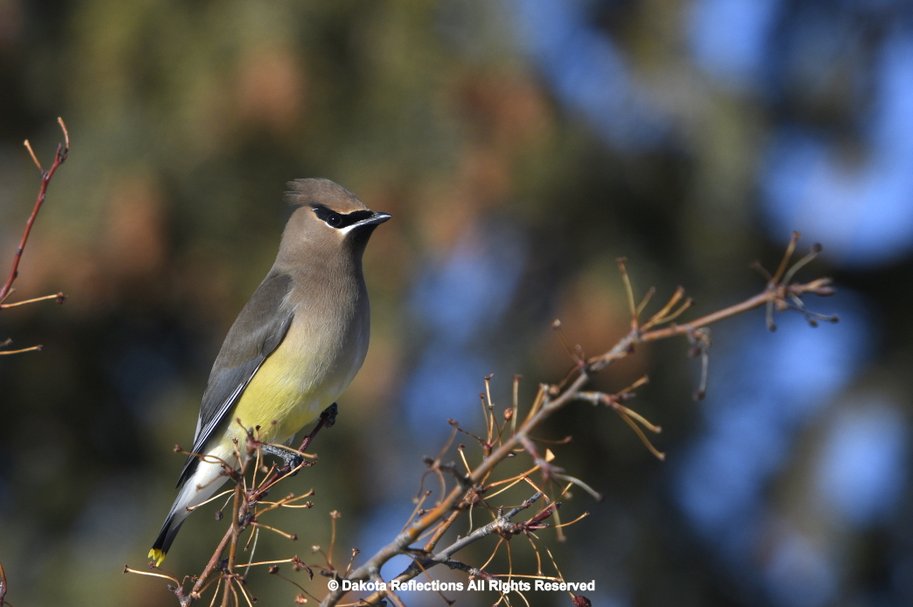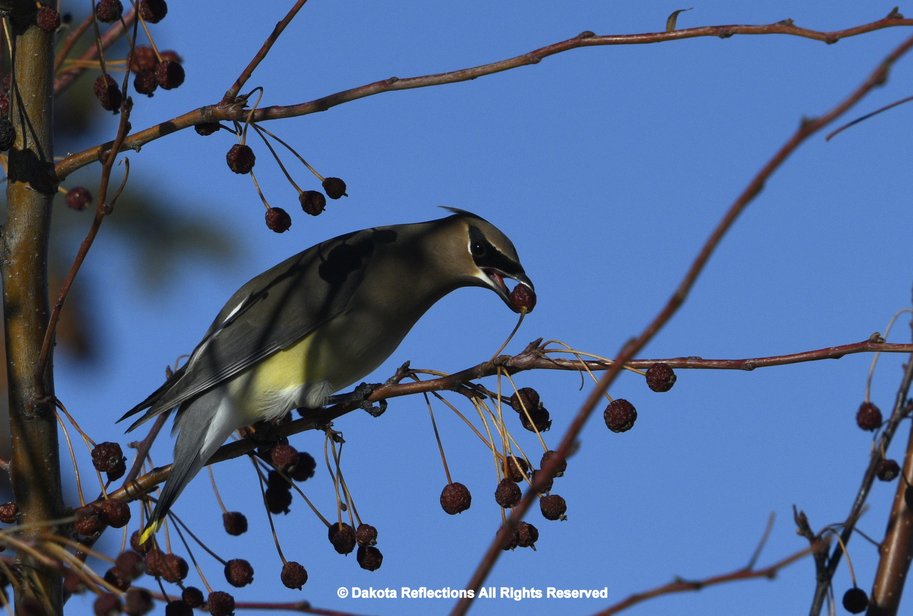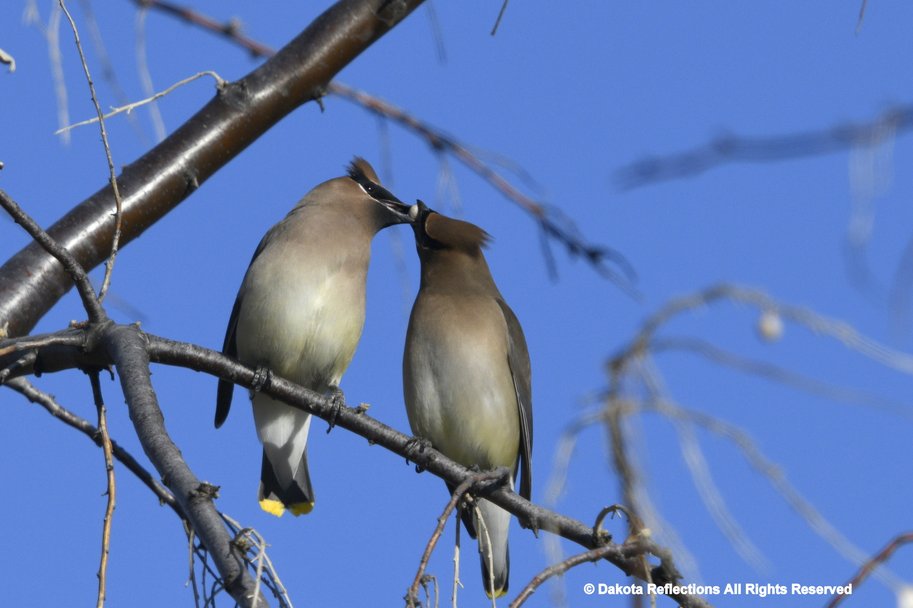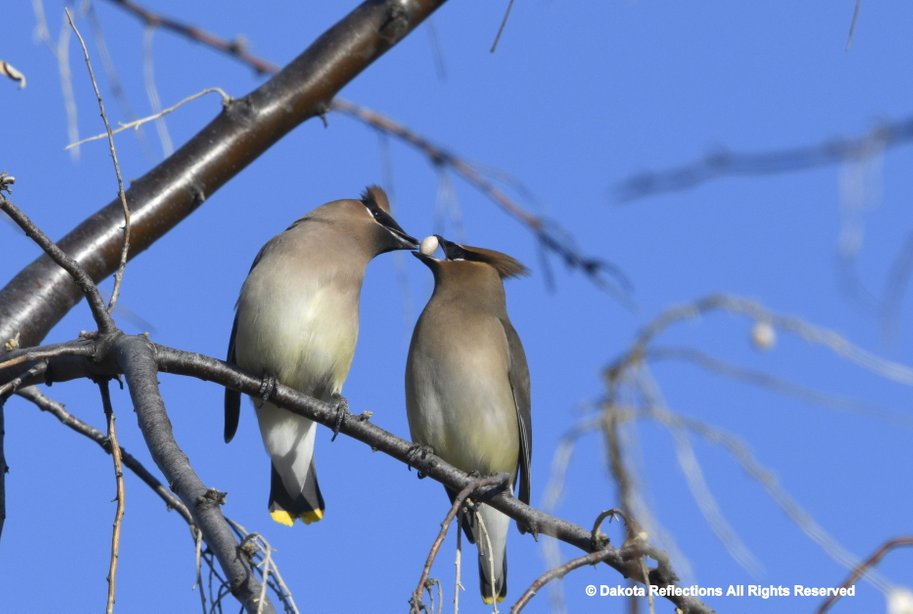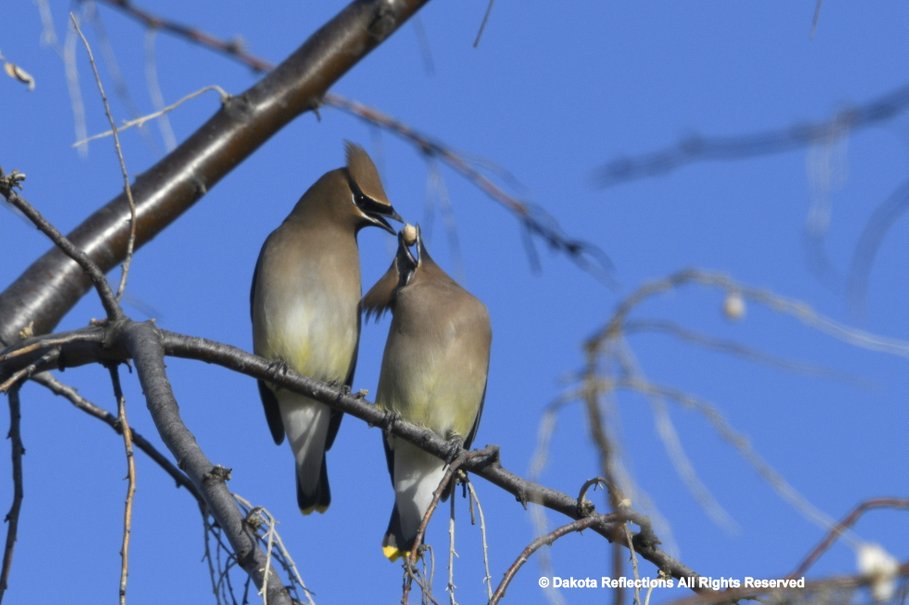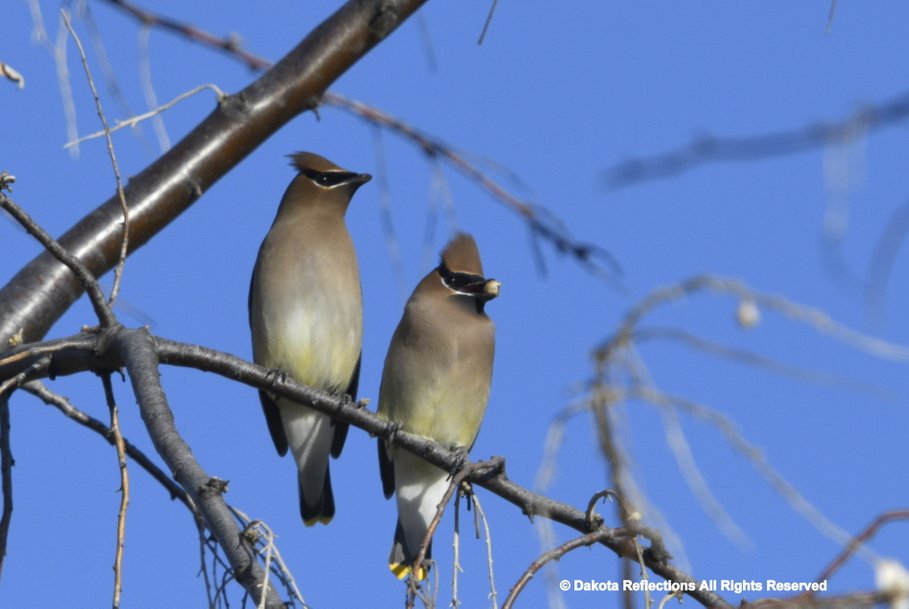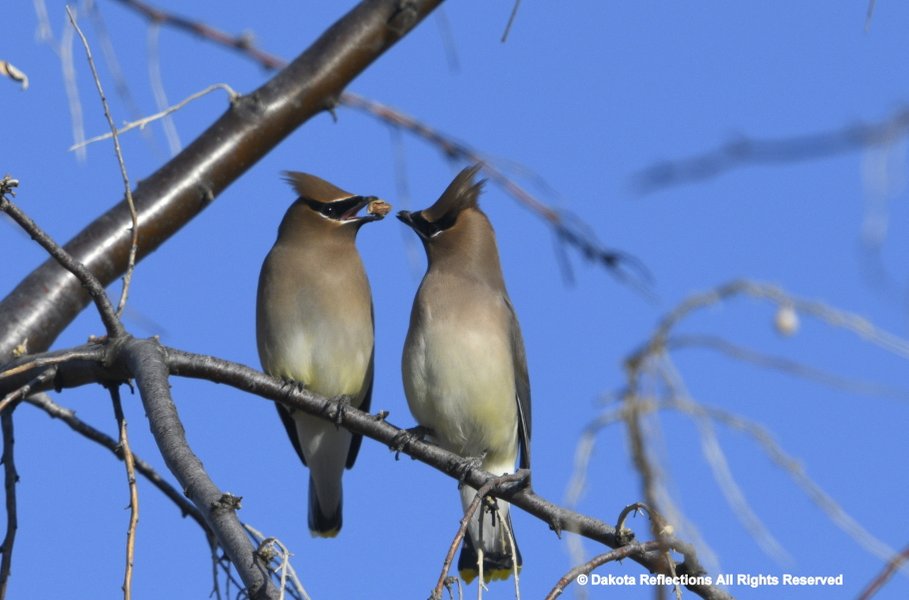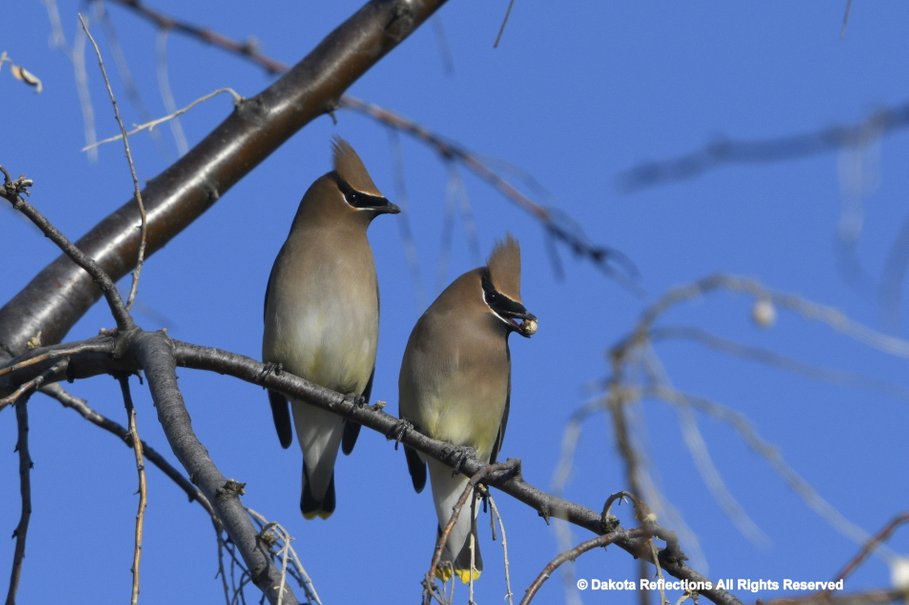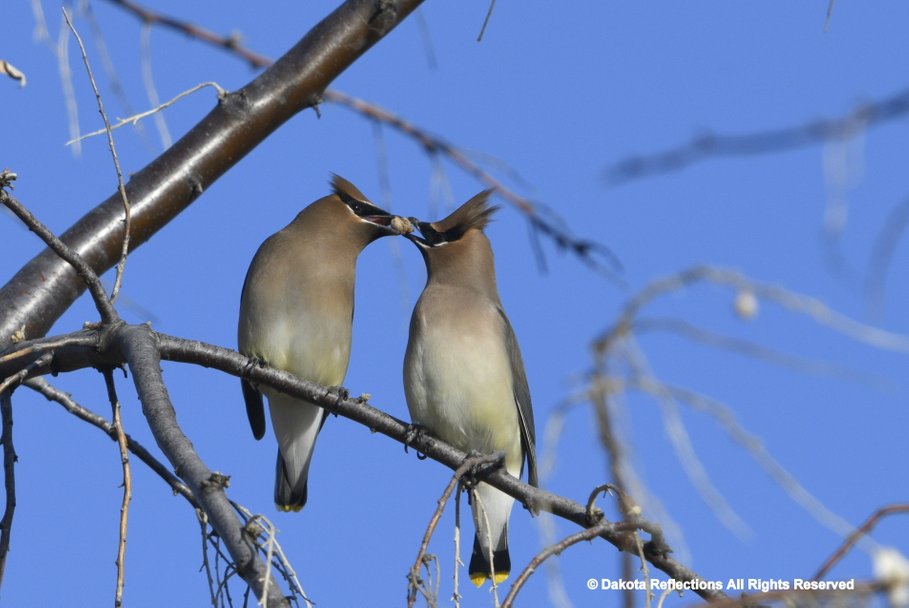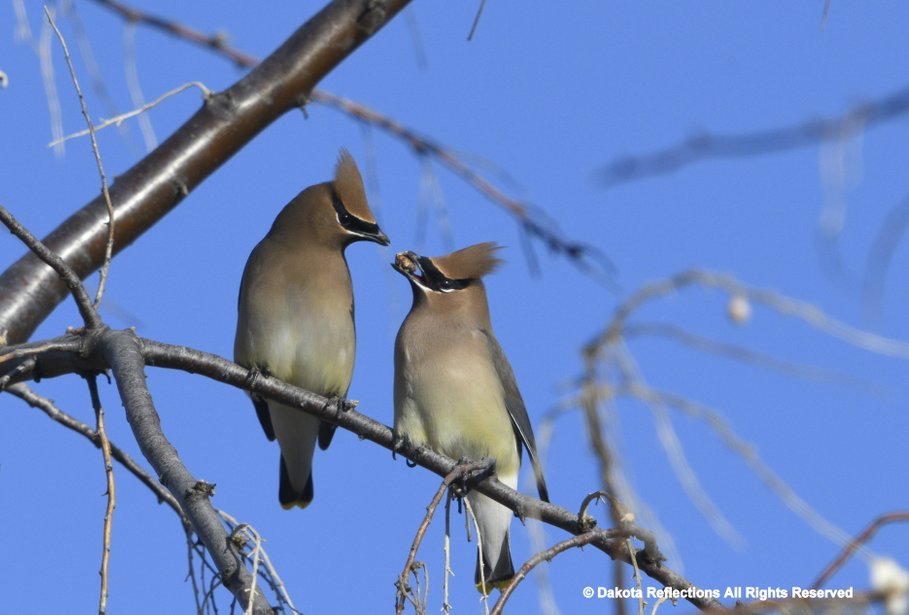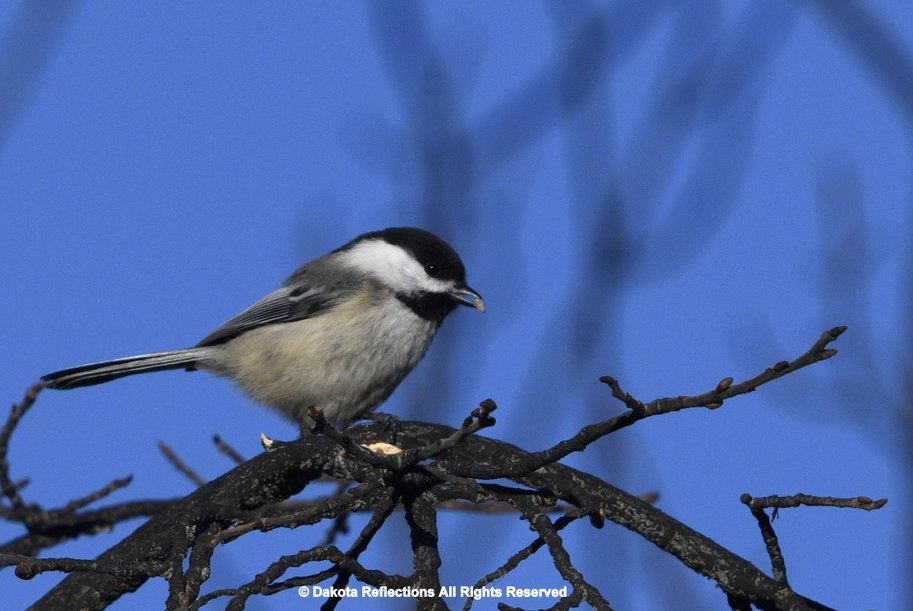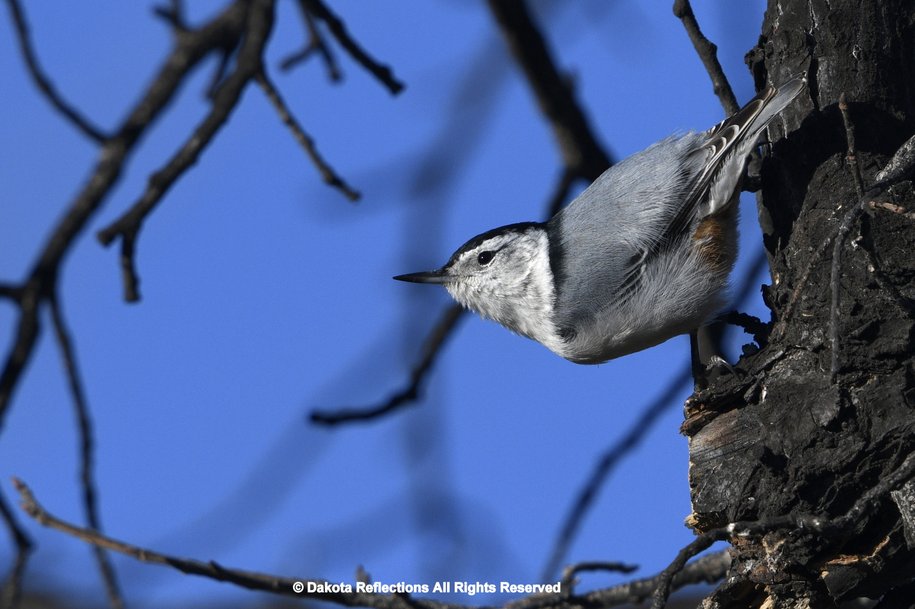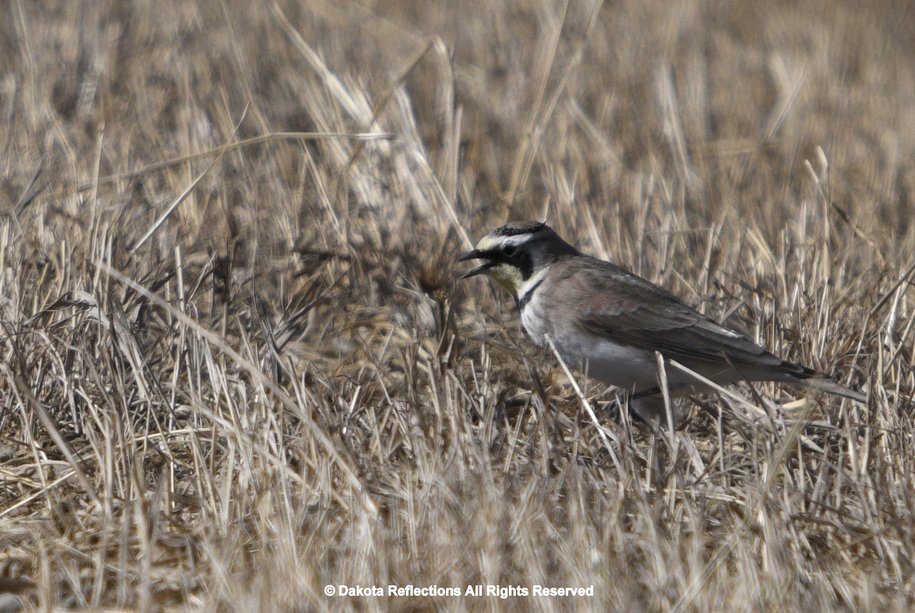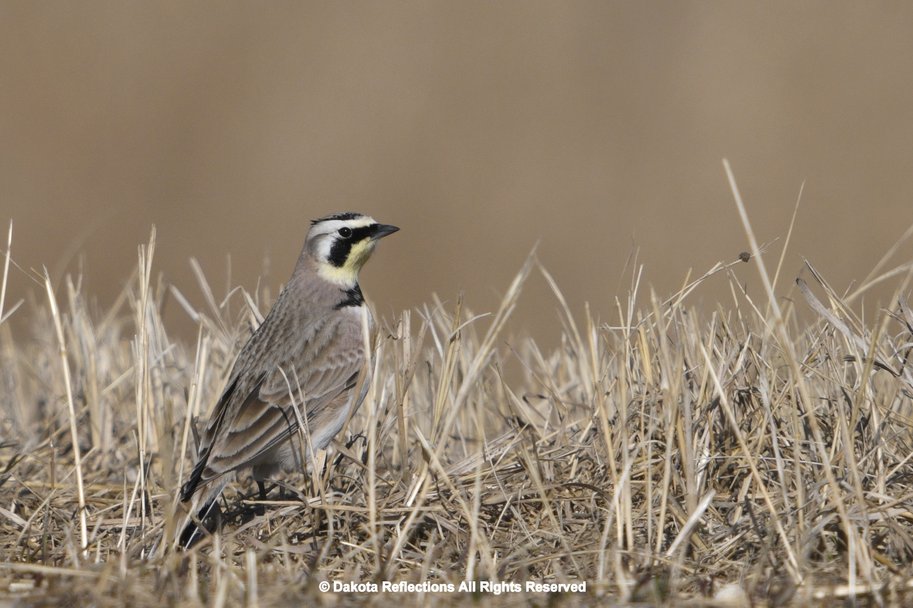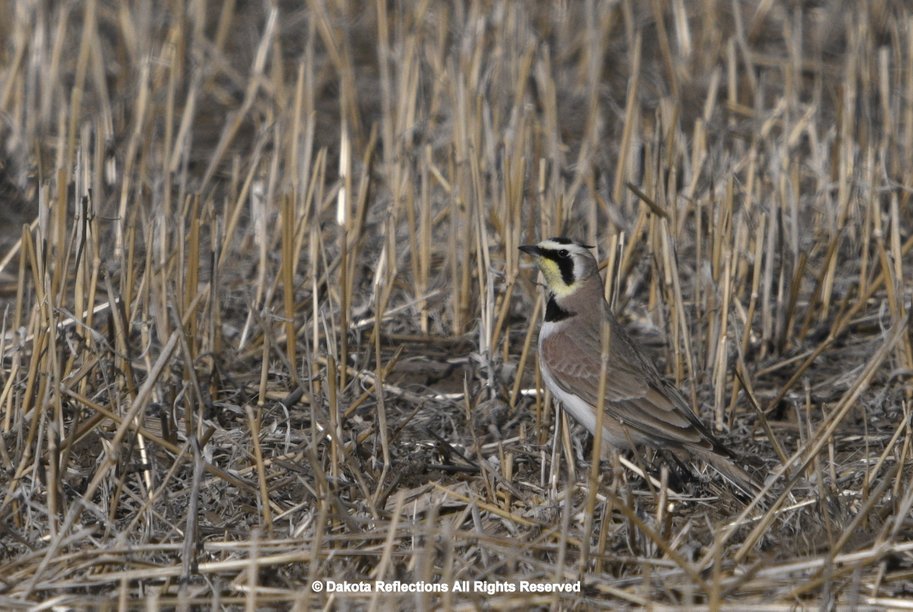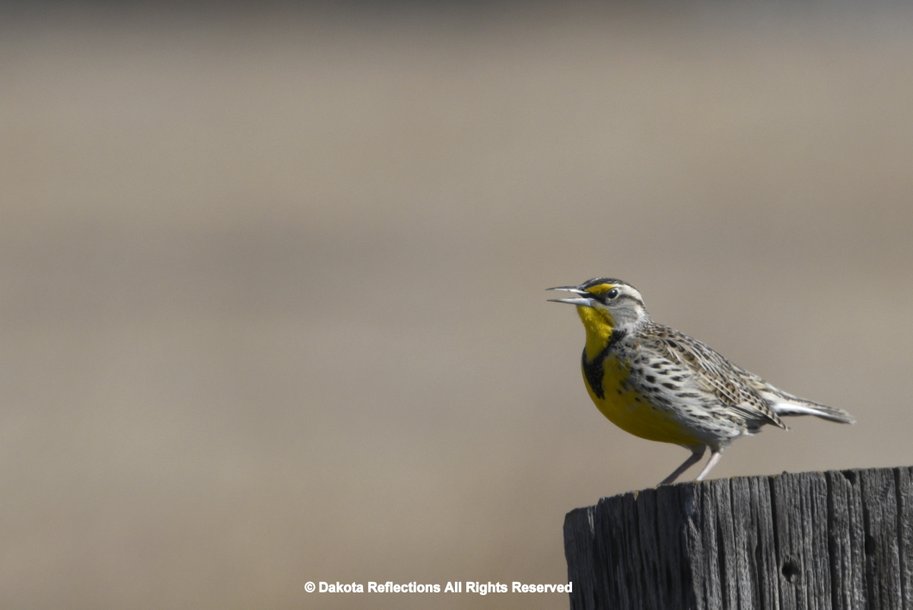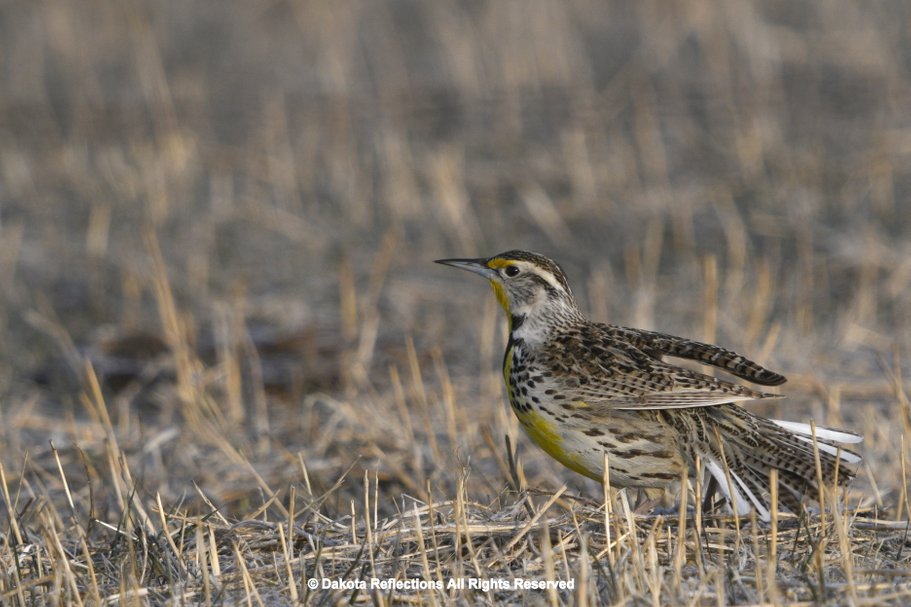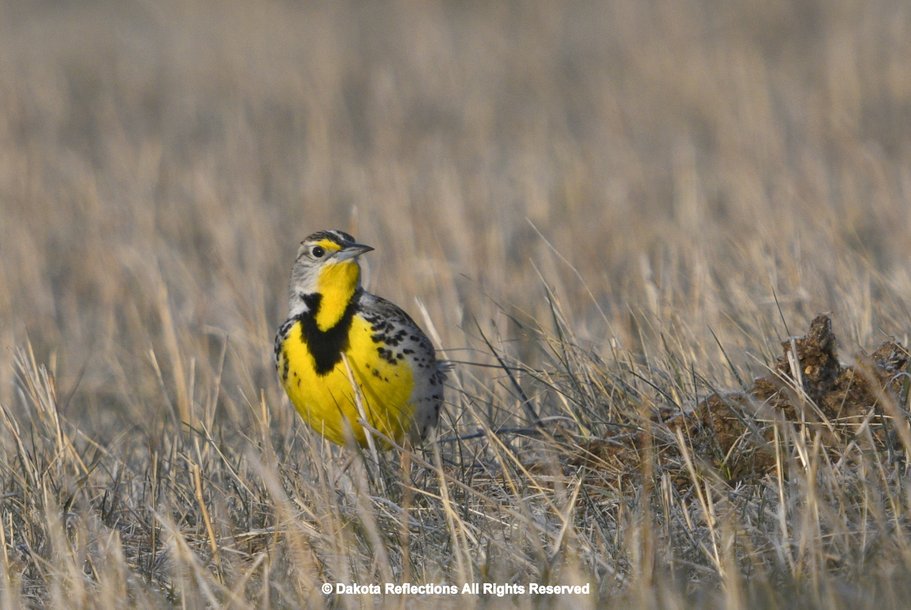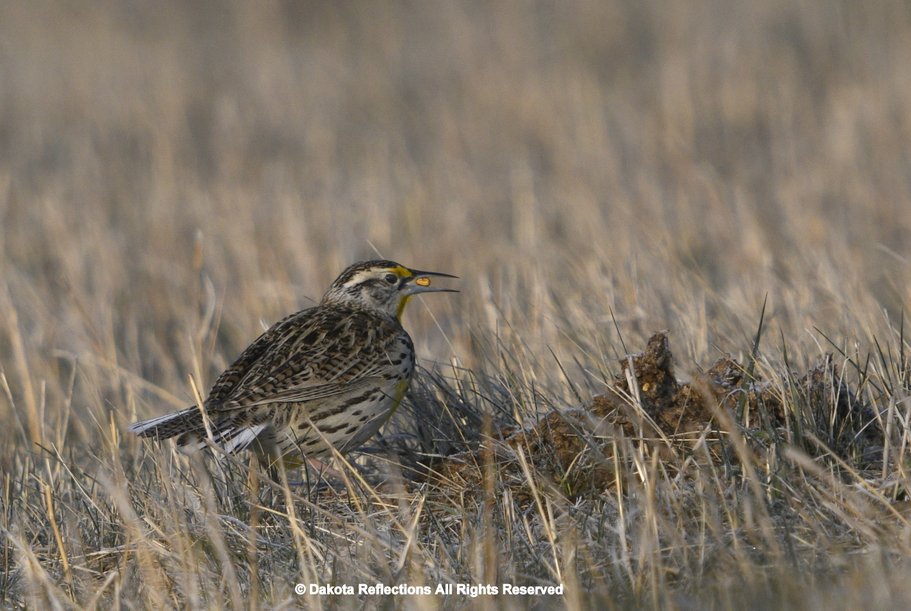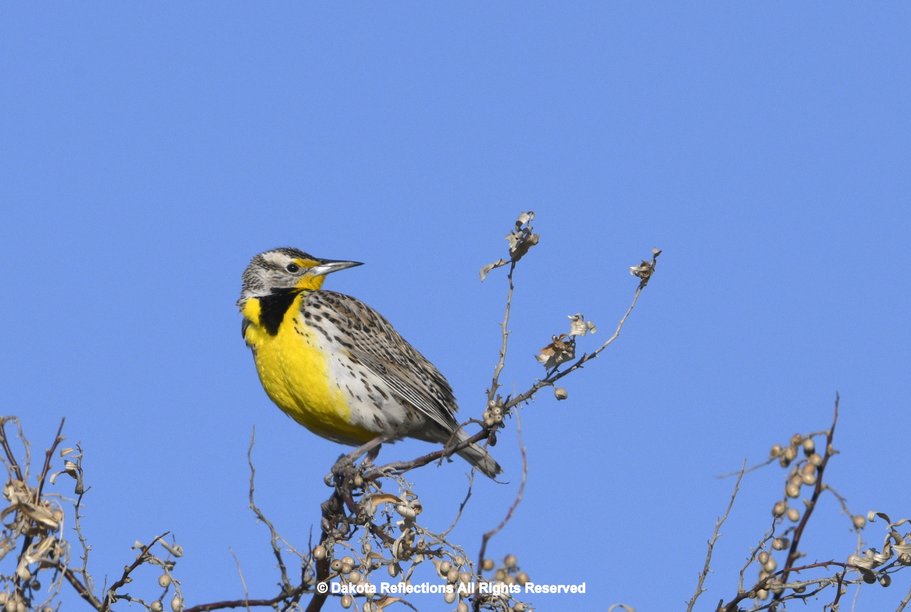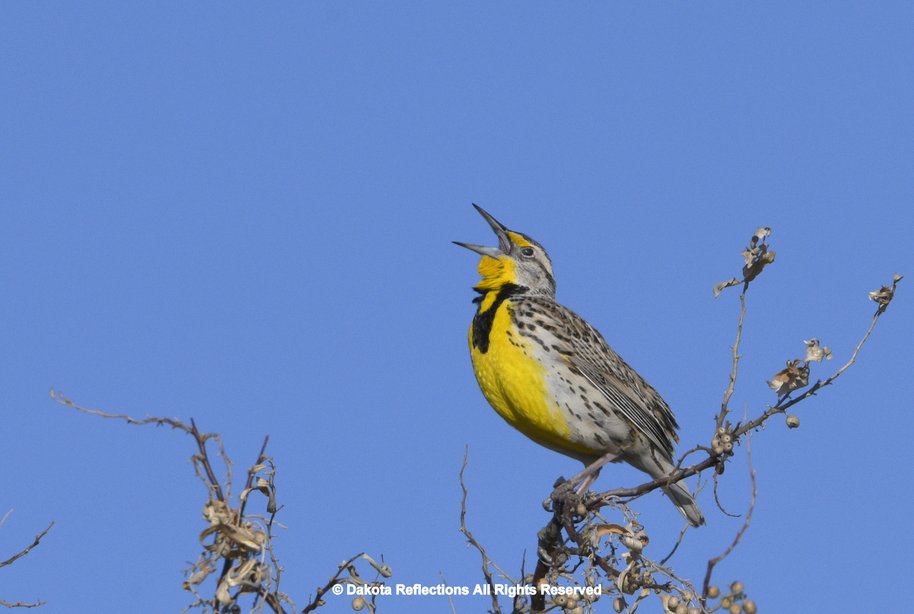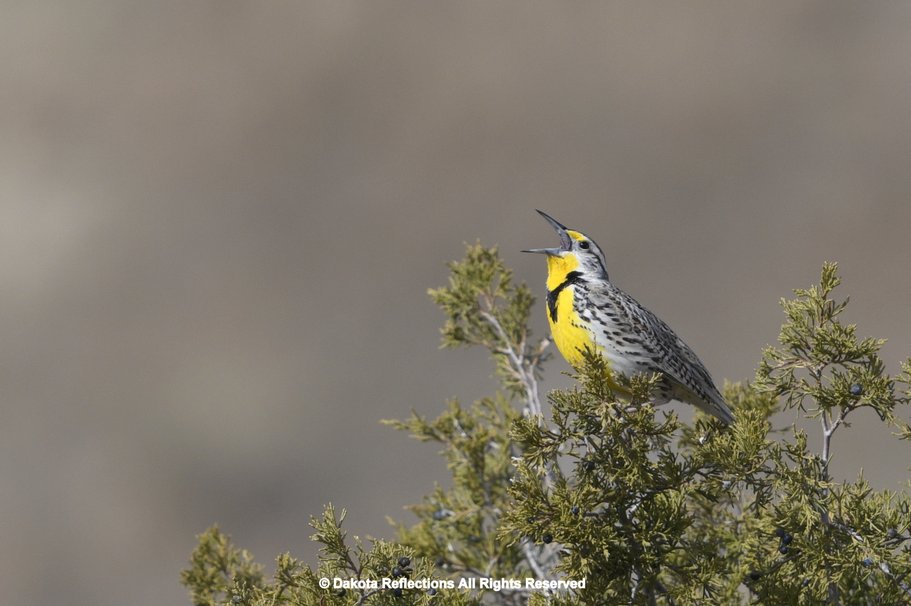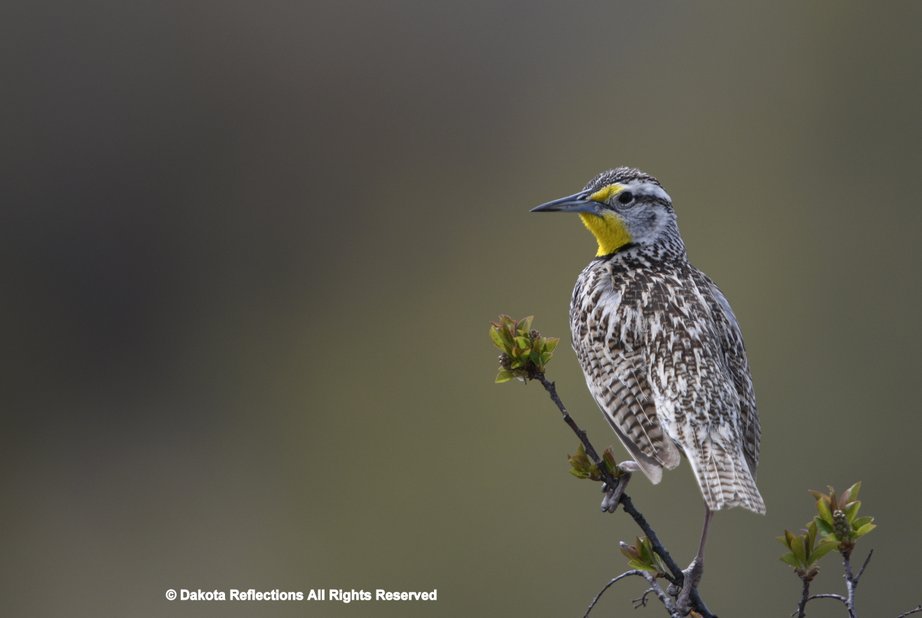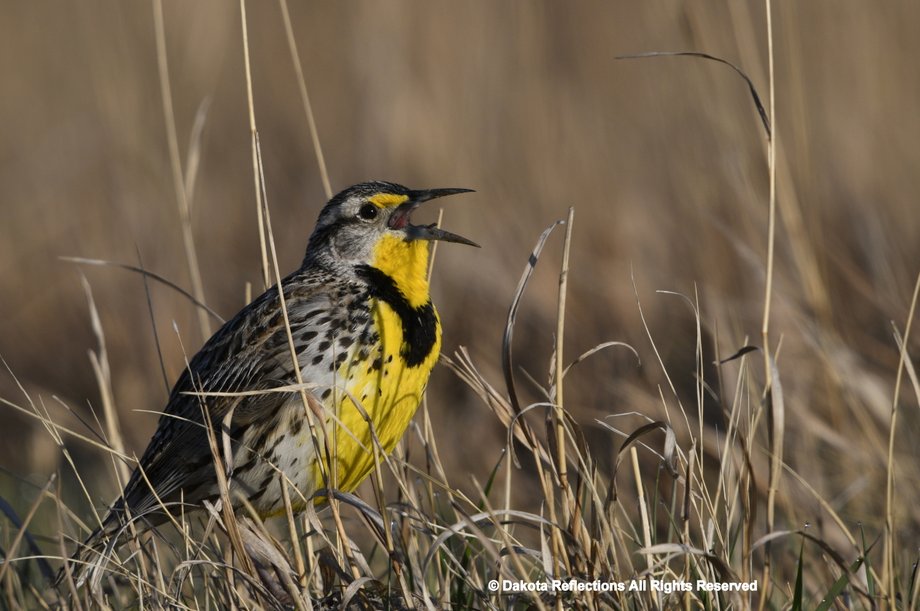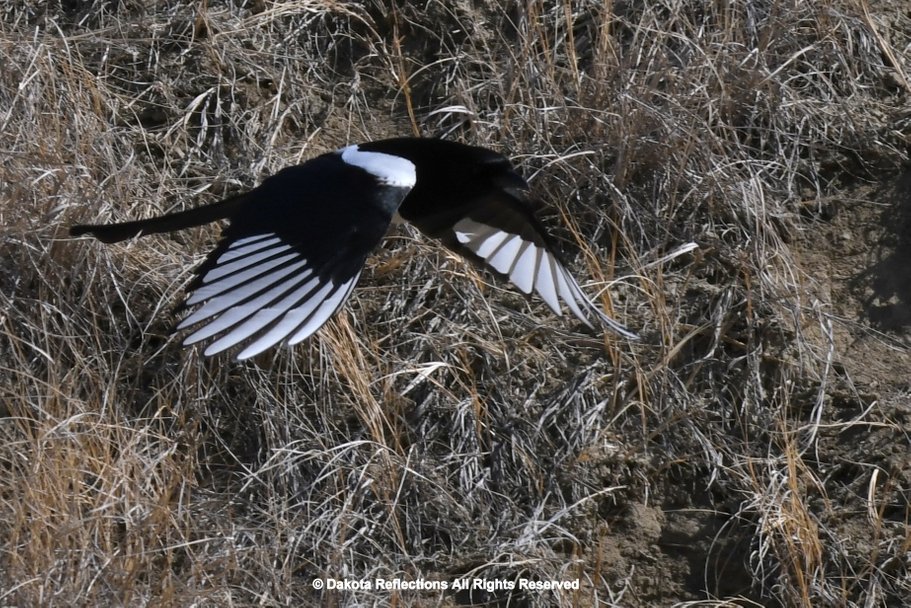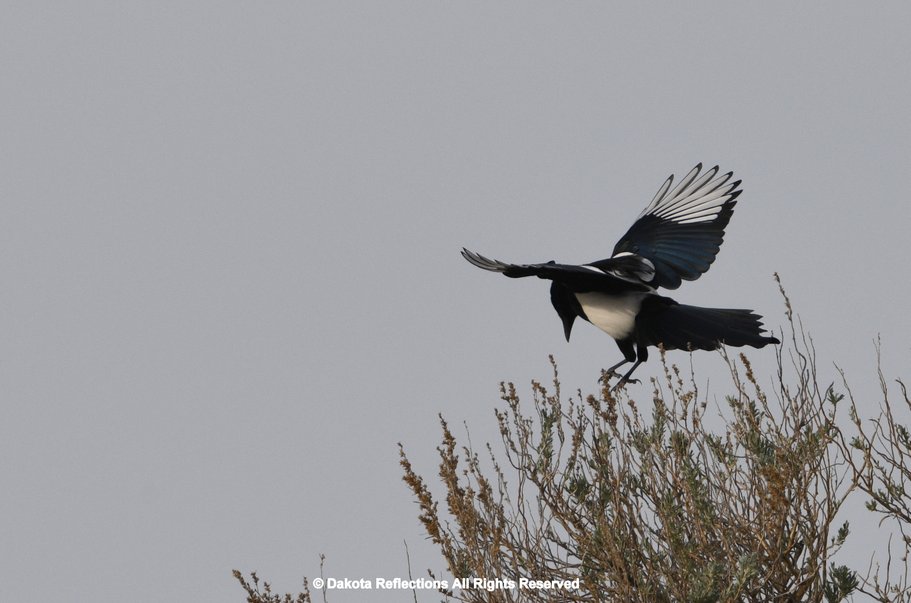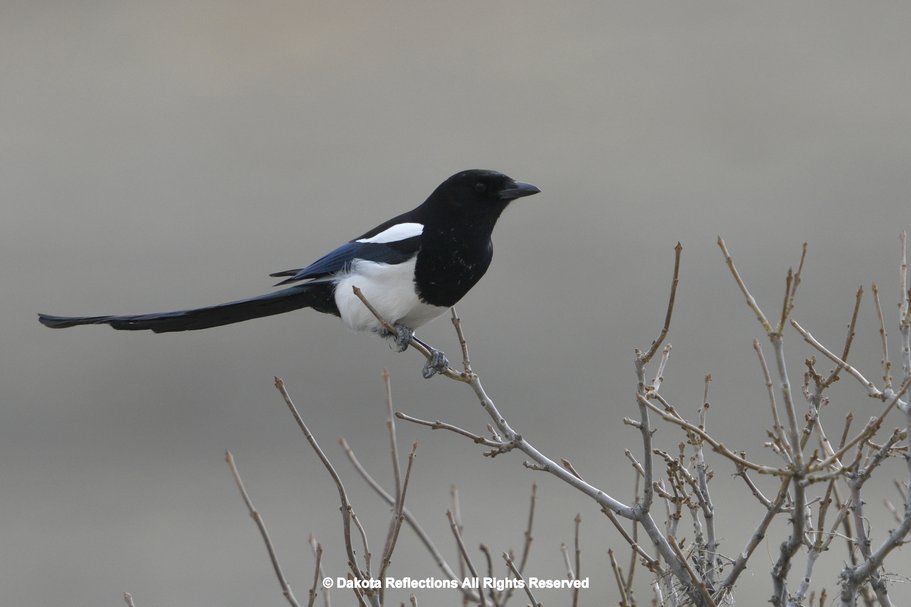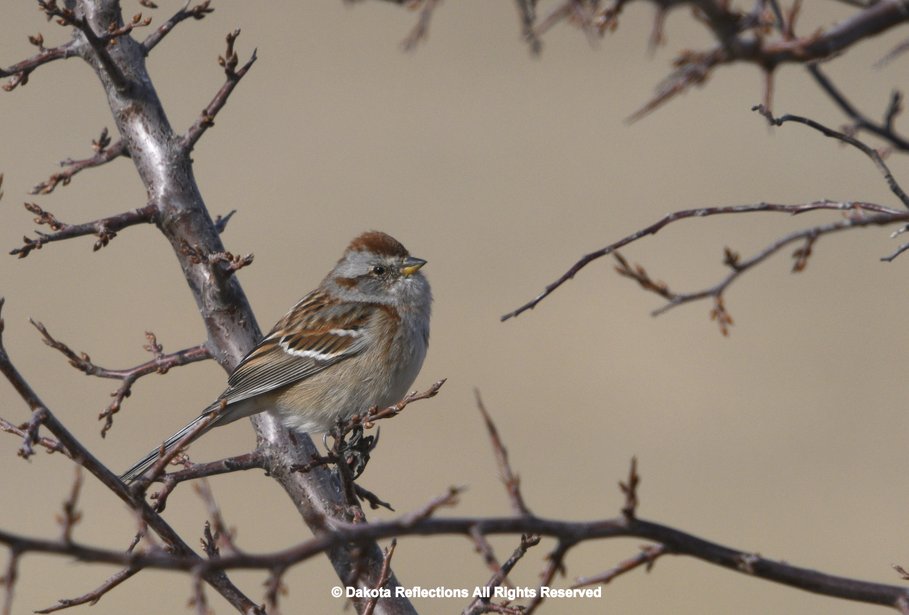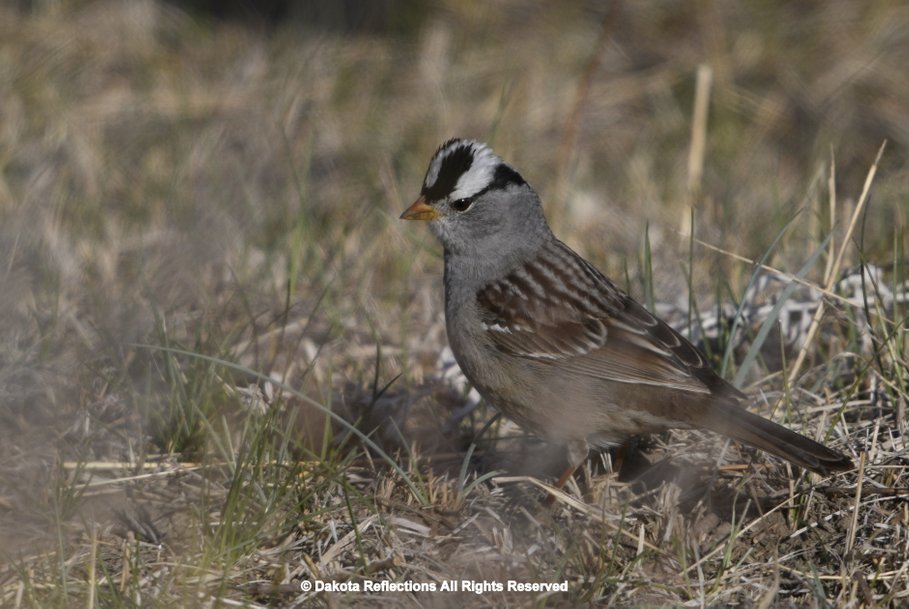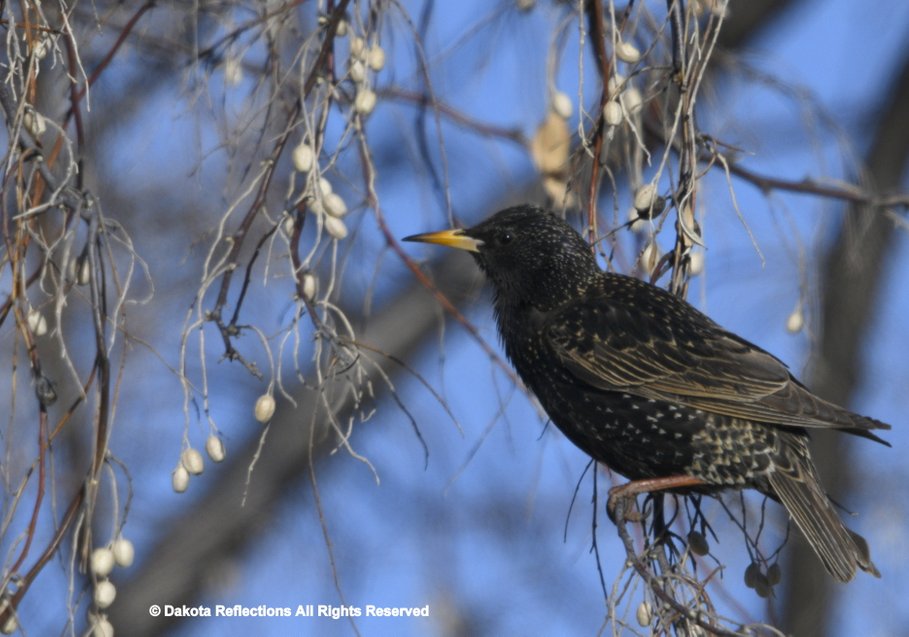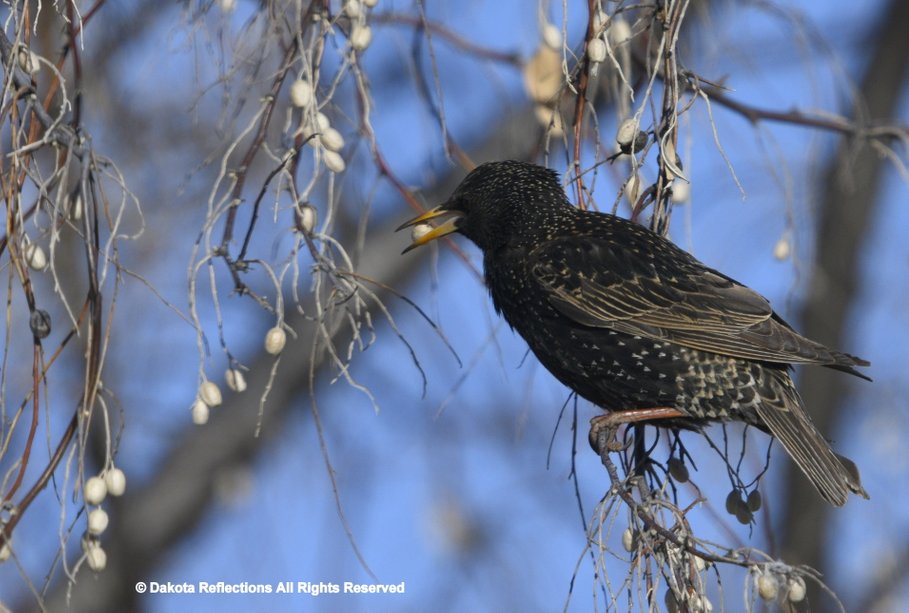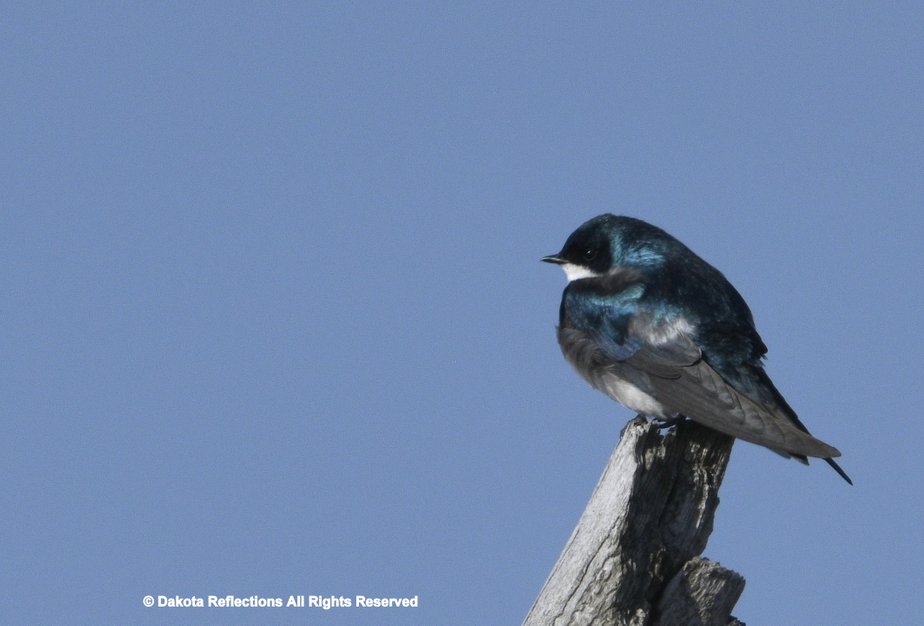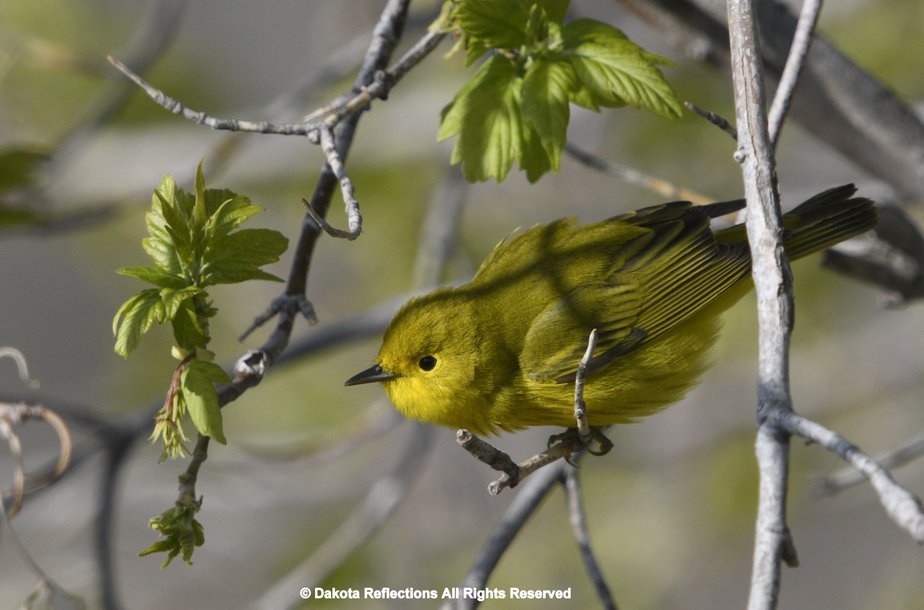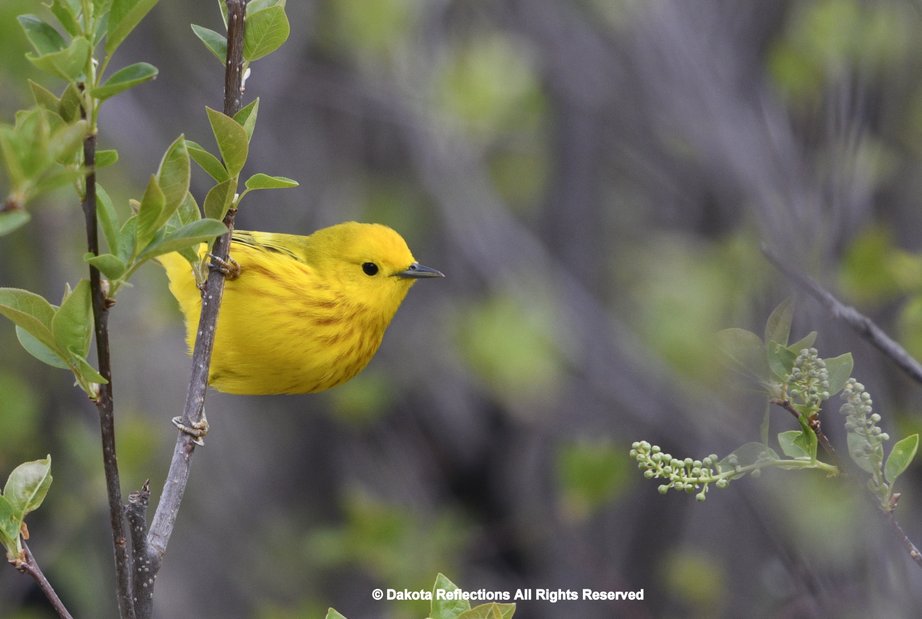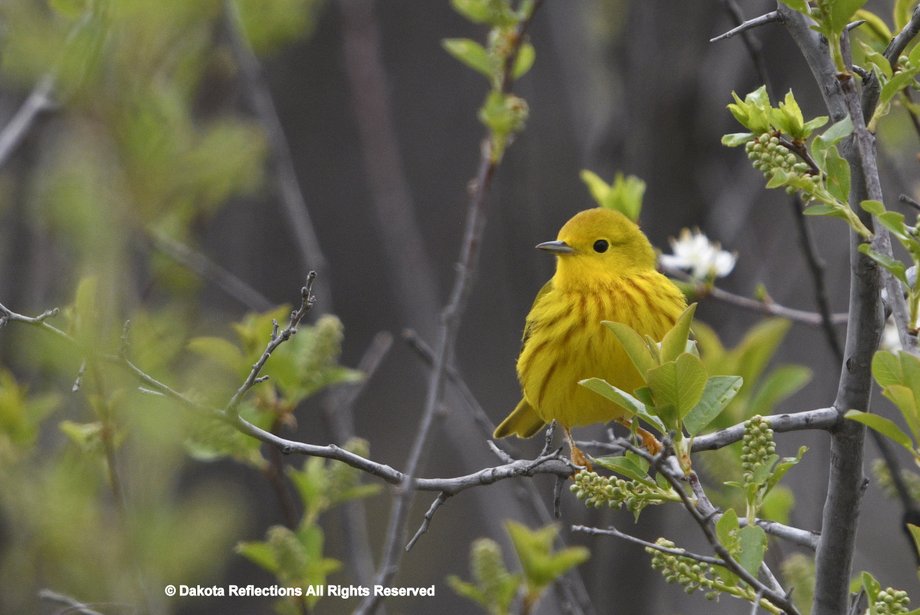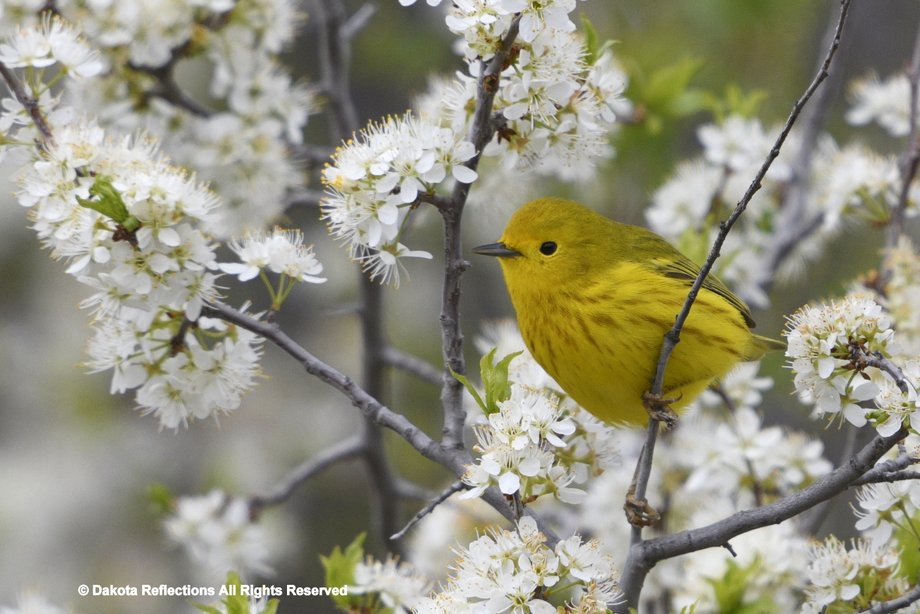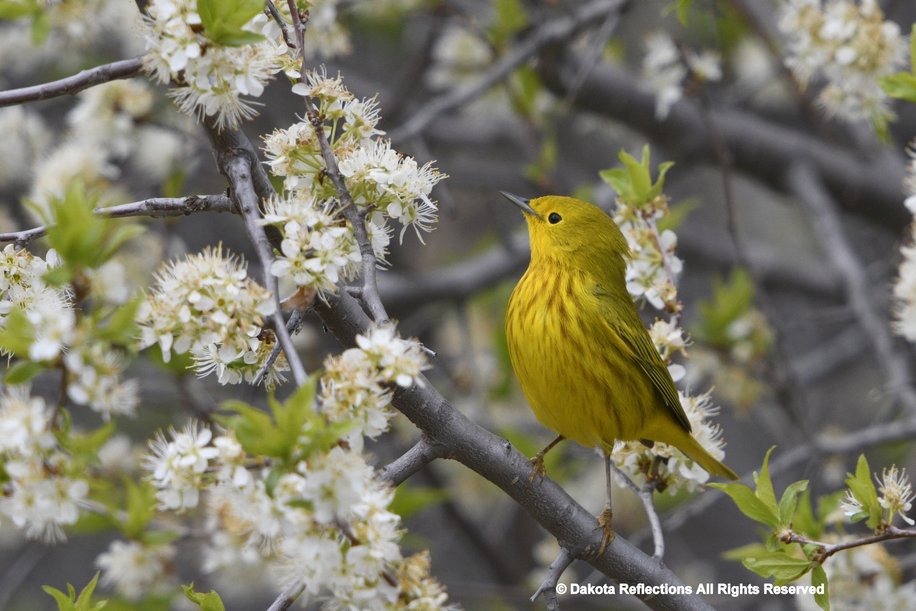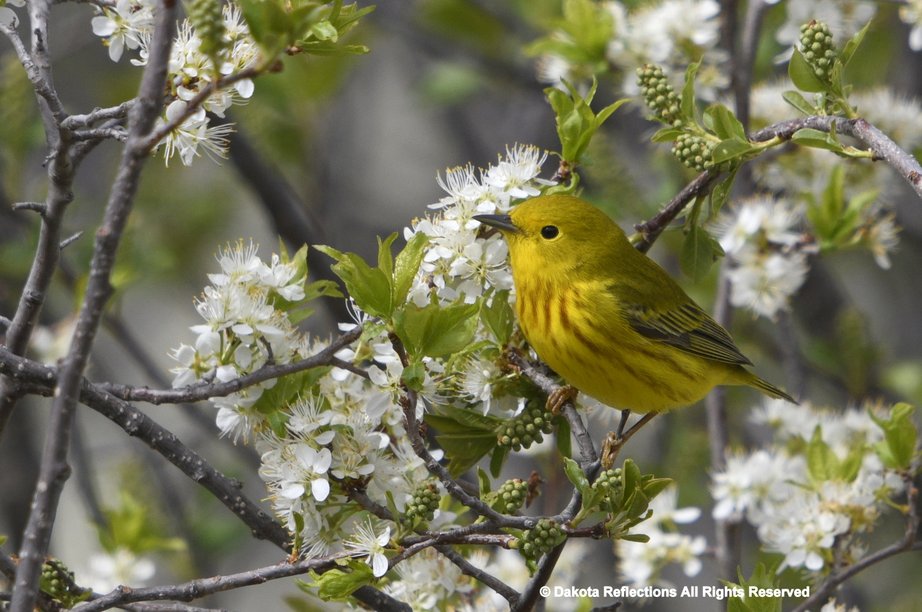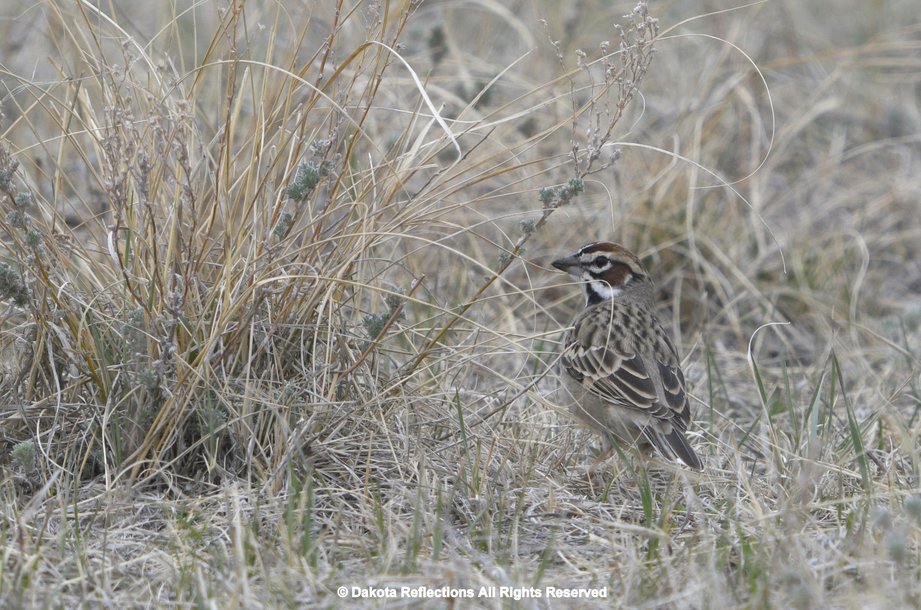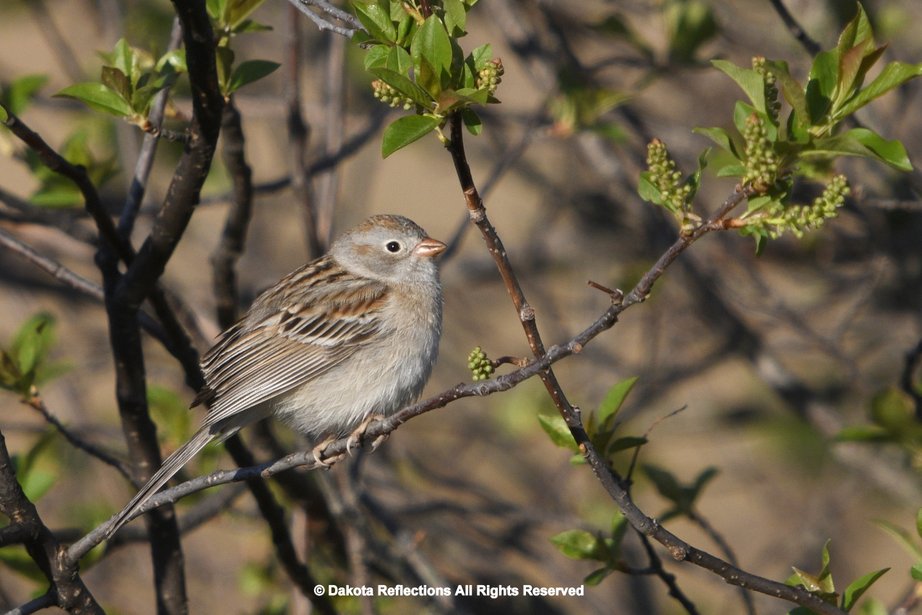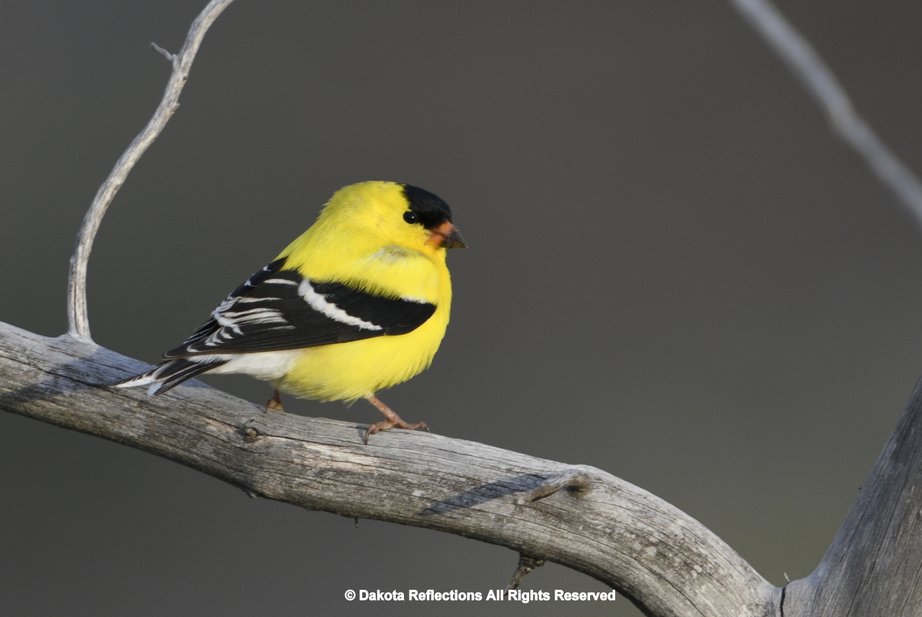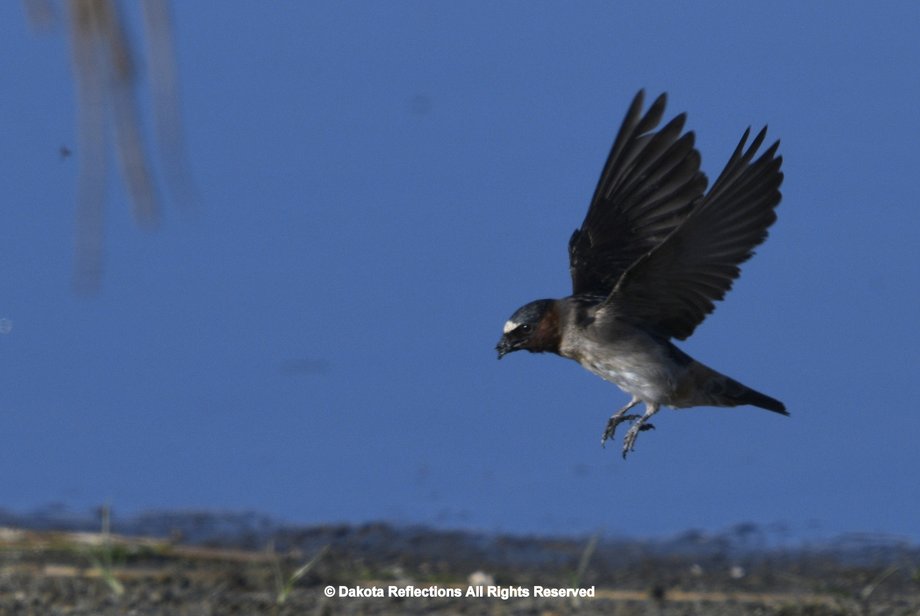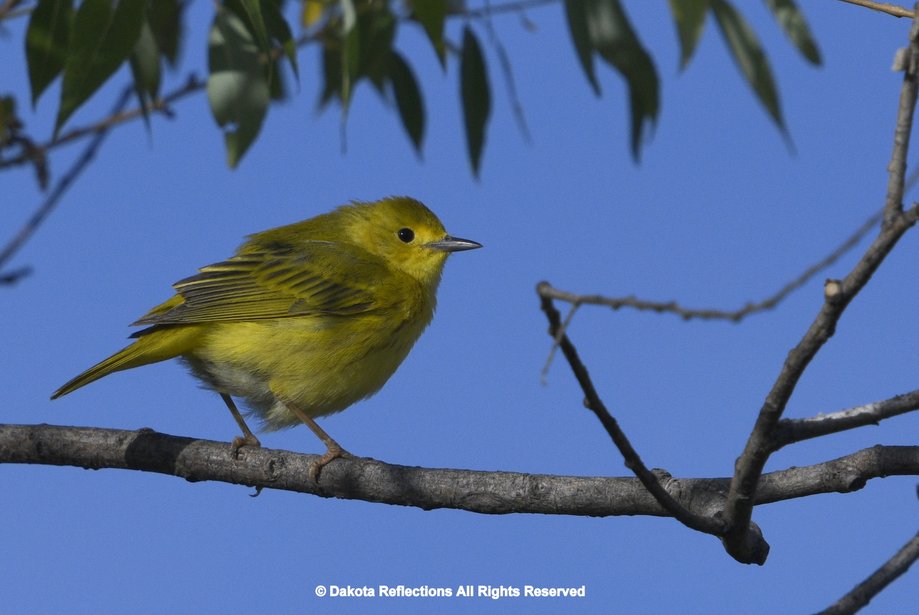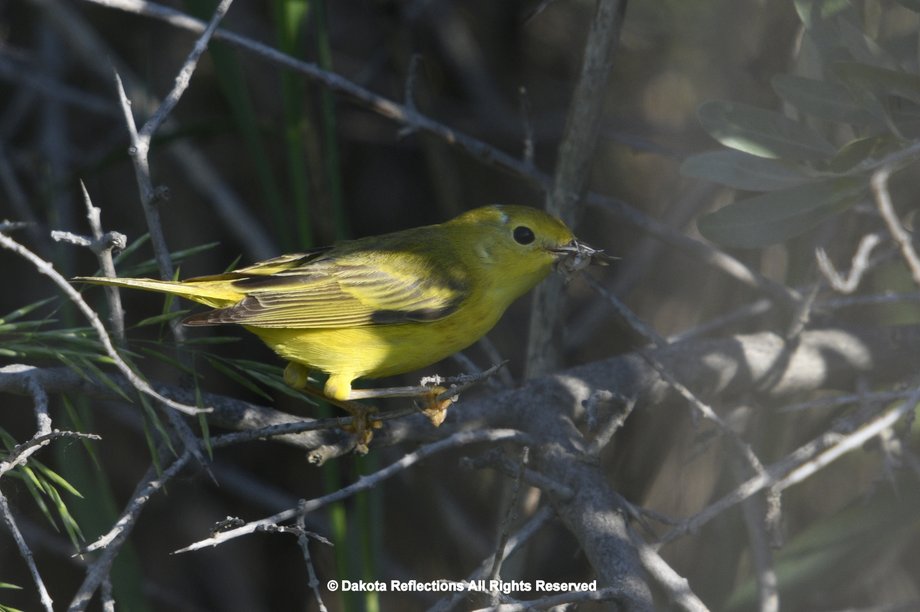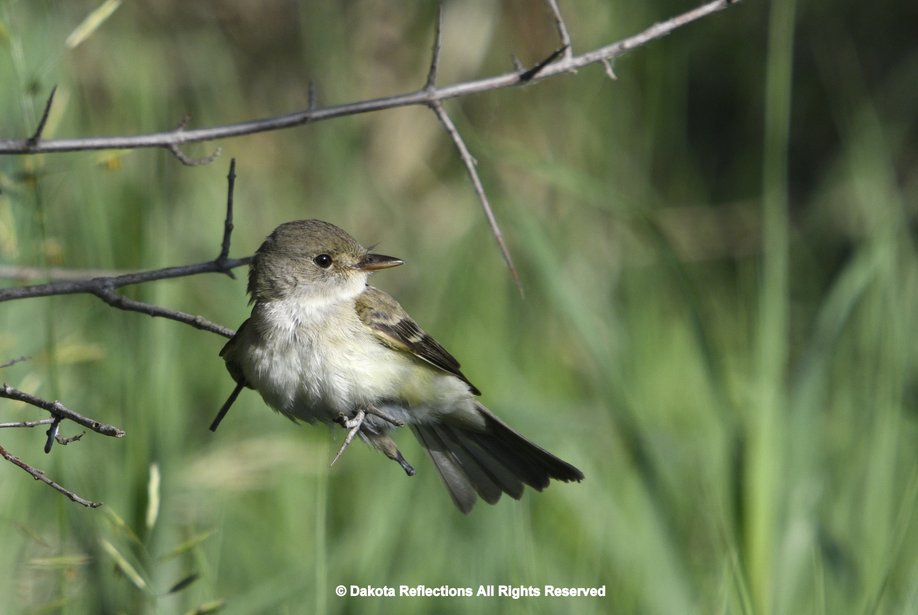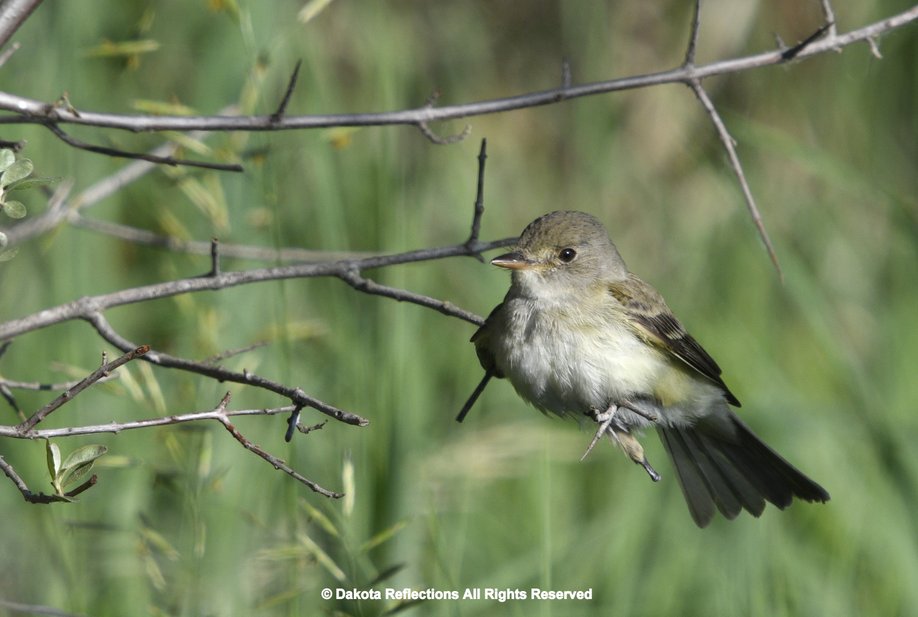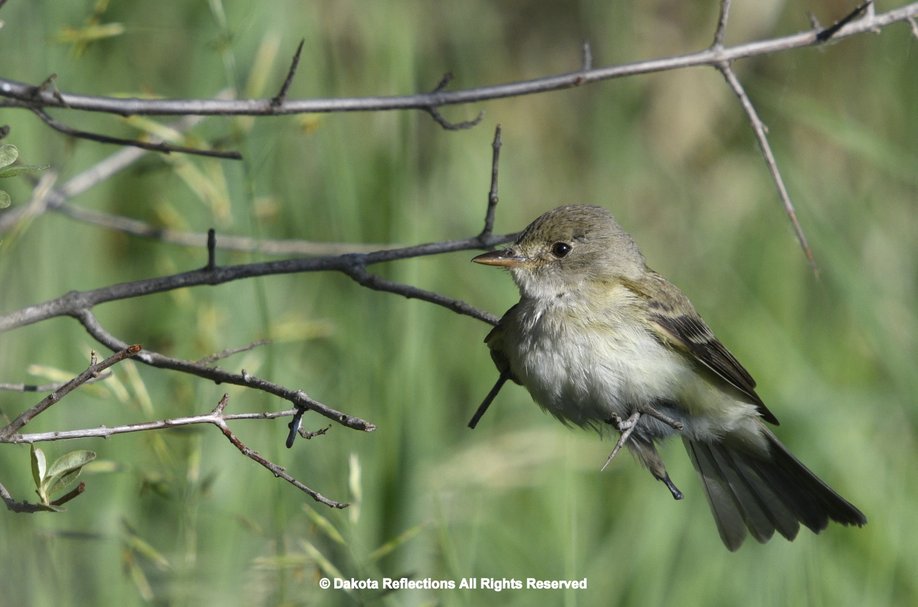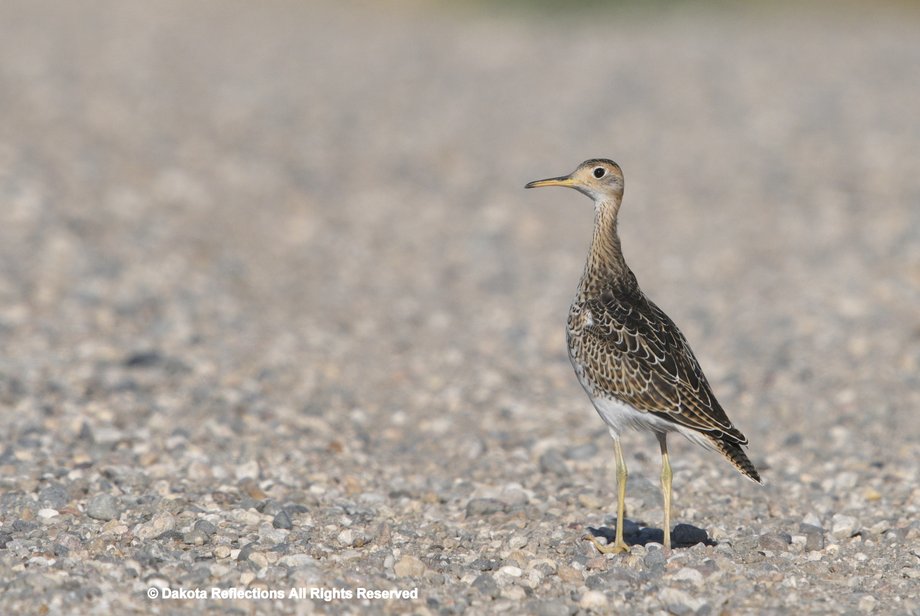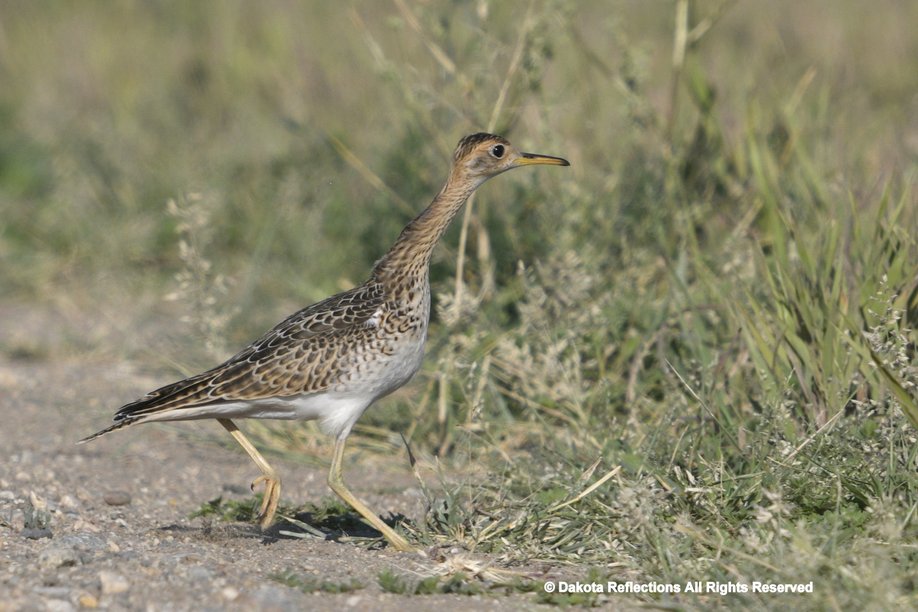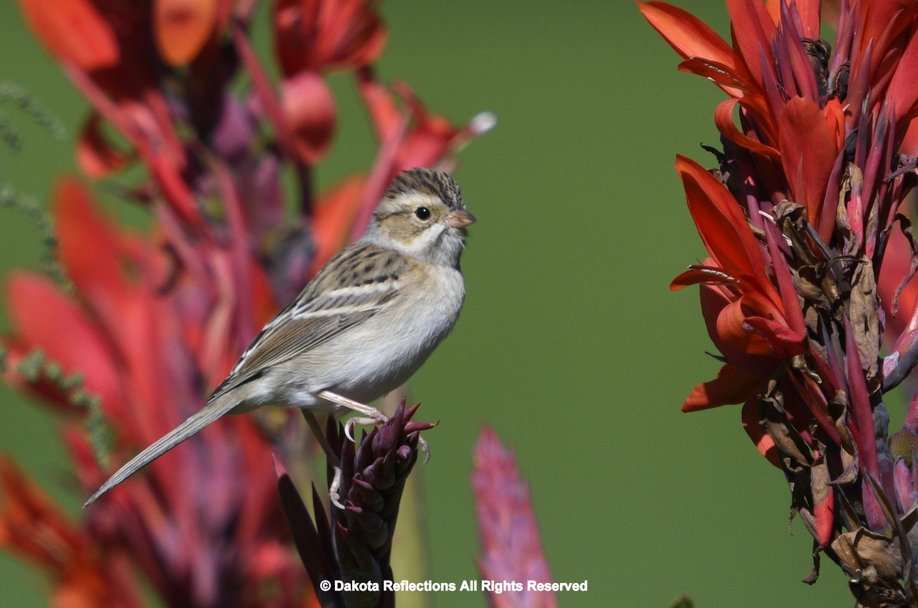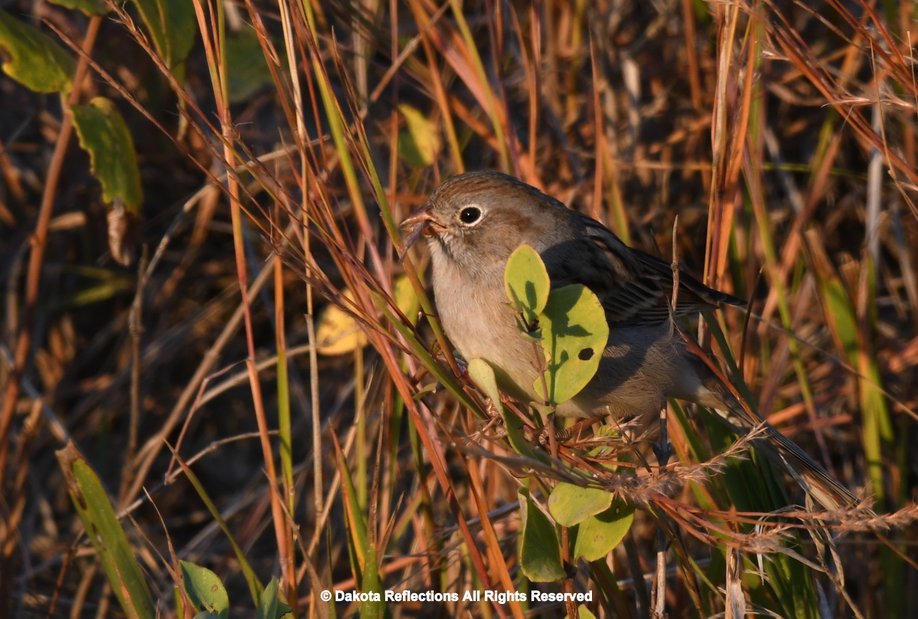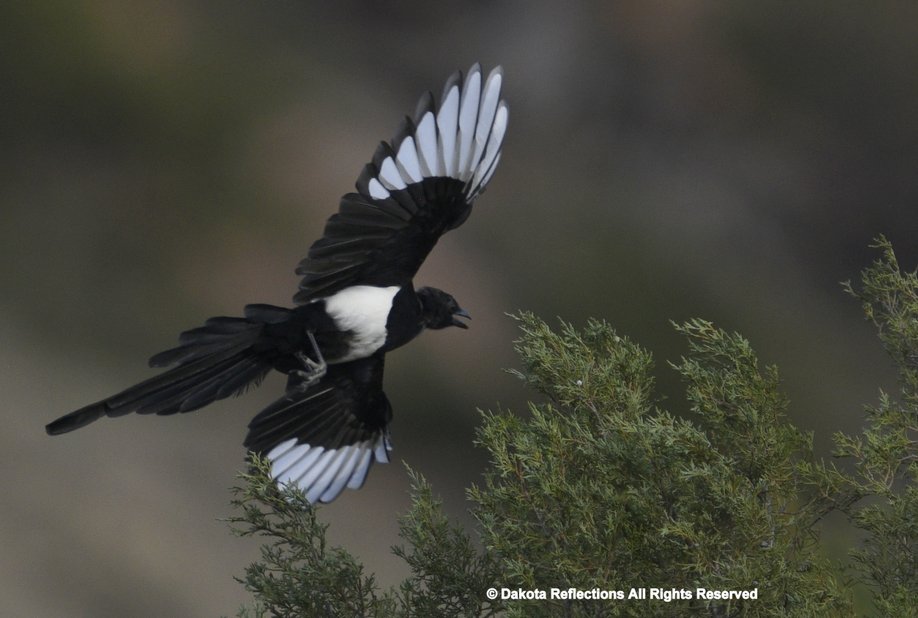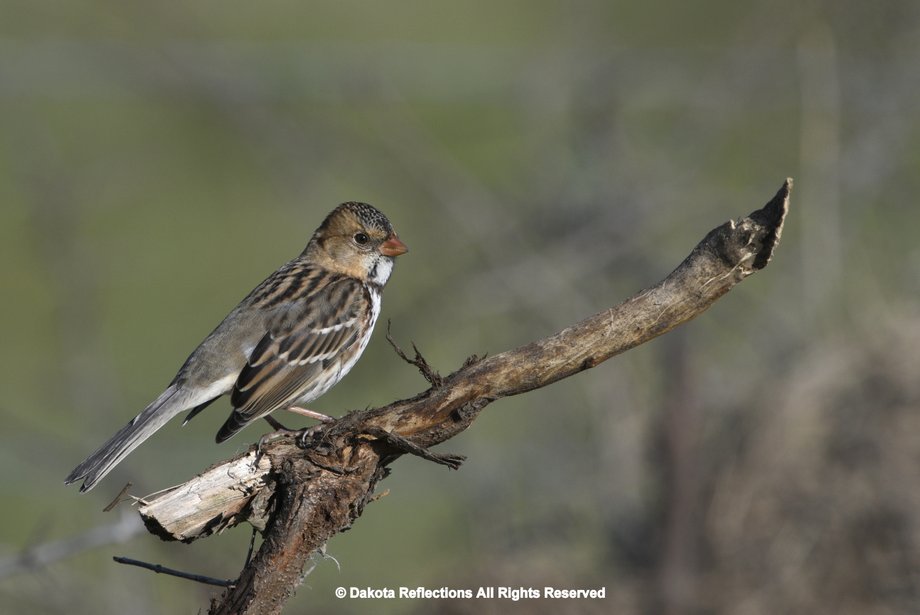Dakota Reflections
The songbirds most commonly seen in North Dakota include the state bird (western meadowlark), American robin, red-winged blackbird, American goldfinch, red-breasted nuthatch and the black-capped chickadee.
North Dakota Songbirds
Western Meadowlark
American Goldfinch
Upland Sandpiper
Red-winged Blackbird
Pine Sisken
Dickcissel
Western Kingbird
Northern Cardinal
House Sparrow
Say's Phoebe
American Goldfinch
Cedar Waxwing
Yellow-headed Blackbird
Pine Sisken
Western Meadowlark
Brown Thrasher
American Robin
Chipping Sparrow
Common Redpoll
American Goldfinch
Mountain Bluebird
Yellow Warbler
Western Kingbirds
American Crow Lifting Bison Chip to Find Worms
American Crow with Worm
2020 Photographs
Black-capped Chickadee!
The black-capped chickadee is a small, nonmigratory, North American songbird that lives in deciduous and mixed forests. It is the state bird of Massachusetts and of Maine in the United States, and the provincial bird of New Brunswick in Canada. It is well known for its capability to lower its body temperature during cold winter nights as well as its good spatial memory to relocate the caches where it stores food, and its boldness near humans (sometimes feeding from the hand). The vocalizations of the black-capped chickadee are highly complex. Thirteen distinct types of vocalizations have been classified, many of which are complex and can communicate different types of information. Chickadees' complex vocalizations are likely an evolutionary adaptation to their habitat: they live and feed in dense vegetation, and even when the flock is close together, individual birds tend to be out of each other's visual range. Insects (especially caterpillars) form a large part of their diet in summer. The birds hop along tree branches searching for food, sometimes hanging upside down or hovering; they may make short flights to catch insects in the air. Seeds and berries become more important in winter, though insect eggs and pupae remain on the menu. Black oil sunflower seeds are readily taken from bird feeders. The birds take a seed in their beak and commonly fly from the feeder to a tree, where they proceed to hammer the seed on a branch to open it. On cold winter nights, these birds can reduce their body temperature by as much as 10 to 12 °C (from their normal temperature of about 42 °C) to conserve energy. The black-capped chickadee nests in a hole in a tree, 1–7 m (3.3–23.0 ft) above ground. The pair either excavate the hole together, or use a natural cavity, or sometimes an old woodpecker nest. This species will also nest in a nesting box. The nesting season is from late April through June. The nest is built by the female only. It consists of a base of coarse material such as moss or bark strips, and lining of finer material such as mammal hair. Eggs are white with fine dots of reddish brown concentrated at the larger end. On average, eggs are 1.52 cm × 1.22 cm (0.60 in × 0.48 in). Clutch size is 6–8 eggs. Incubation lasts 11–14 days and is by the female only, who is fed by the male. If there is an unusual disturbance at the nest entrance, the incubating female may utter an explosive hiss, like that of a snake, a probable adaptation to discourage nest predators. Hatchlings are altricial, naked with their eyes closed. Nestlings are fed by both sexes but are brooded by the female only (at which time the male brings food to her, which she passes on to the young). Young leave the nest 12–16 days post-hatching, in great part because the parents start presenting food only outside the nest hole. The young will still be fed by the parents for several weeks but are capable of catching food on their own within a week after leaving the nest.
https://en.wikipedia.org/wiki/Black-capped_chickadee
Black-capped Chickadee with a Seed!
This black-capped chickadee was photographed at the Mandan Cemetery in Morton County, North Dakota. They are cheerful and friendly!
Photo of the Day for March 13. 2020
Pine Siskins
The pine siskin is a North American bird in the finch family. It is a migratory bird with an extremely sporadic winter range. These birds are fairly small, being around the same size as the widespread American goldfinch. In both sexes, total length can range from 11–14 cm (4.3–5.5 in), with a wingspan of 18–22 cm (7.1–8.7 in) and weight of 12–18 g (0.42–0.63 oz). Their breeding range spreads across almost the entirety of Canada, Alaska and, to a more variable degree, across the western mountains and northern parts of the United States. As their name indicates, the species occurs mostly as a breeder in open conifer forests. Northern pine forests support the majority of the species breeding population. However, stands of ornamental conifers or deciduous trees may support nesting birds in partially developed parks, cemeteries, and suburban woodlands. While they favor feeding in open forest canopies where cone seeds are abundant, they'll forage in habitats as diverse as deciduous forests and thickets, meadows, grasslands, weedy fields, roadsides, chaparral, and backyard gardens and lawns. They flock to backyard feeders offering small seeds. The nest is well-hidden on a horizontal branch of a tree, often a conifer. Migration by this bird is highly variable, probably related to food supply. Large numbers may move south in some years; hardly any in others. This species is one of a few species that are considered "irruptive winter finches" because of the high variability of their movements based on the success of crops from year to year. These birds forage in trees, shrubs and weeds. They mainly eat seeds, plant parts and some insects. In winter, they often feed in mixed flocks including American goldfinches and redpolls. Small seeds, especially thistle, red alder, birch, and spruce seeds, make up the majority of the pine siskin's diet. In a part of their esophagus called the crop, the species can store up to 10% of their body weight in seeds overnight, providing extra food on cold days. Pine siskins can survive in very cold temperatures. The metabolic rates of this species are typically 40% higher than a "normal" songbird of their size. When temperatures plunge as low as −70 °C (−94 °F), they can accelerate that rate up to five times normal for several hours. They also put on half again as much winter fat as their common redpoll and American goldfinch relatives.
https://en.wikipedia.org/wiki/Pine_siskin
Red-breasted Nuthatch
The red-breasted nuthatch is a small songbird. The adult has blue-grey upperparts with cinnamon underparts, a white throat and face with a black stripe through the eyes, a straight grey bill and a black crown. Its call, which has been likened to a tin trumpet, is high-pitched and nasal. It breeds in coniferous forests across Canada, Alaska and the northeastern and western United States. Though often a permanent resident, it regularly irrupts further south if its food supply fails. Like all nuthatches, the red-breasted nuthatch is an acrobatic species, hitching itself up and down tree trunks and branches to look for food. It goes headfirst when climbing down. It can "walk" on the underside of branches. The red-breasted nuthatch's diet changes depending on the season. In the summer, it eats mostly insects, occasionally even flycatching, while in the winter, it switches to conifer seeds. At feeders it will take sunflower seeds, peanut butter, and suet. It often wedges food pieces in bark crevices in order to break them up with the bill (as opposed to holding the food in their feet, like the black-capped chickadee does). The red-breasted nuthatch, like all nuthatches, is monogamous. The male courts the female with a peculiar display, lifting his head and tail while turning his back to her, drooping his wings, and swaying from side to side. This bird excavates its own cavity nest, 1.53–37 m (5.0–121.4 ft) above ground (usually around 4.6 m (15 ft)). Excavation is by both sexes and takes one to eight weeks. The pair smears sap around the entrance hole, presumably to help deter predators. The nest is lined with grass, moss, shredded bark and rootlets. Nest building is by both sexes, but mostly by the female. The female lays 2–8 eggs (usually 5–6), which are white, creamy or pinkish, and covered with reddish-brown speckles. The eggs measure 0.6–0.7 in (1.5–1.8 cm) long by 0.4–0.5 in (1.0–1.3 cm) wide. Incubation is by the female and lasts 12–13 days. The young are altricial and stay in the nest for 2–3 weeks, brooded by the female but fed by both sexes. Normally there is only one brood per year. Lifespan is around 6 years.
https://en.wikipedia.org/wiki/Red-breasted_nuthatch
White-breasted Nuthatch
The white-breasted nuthatch is a small songbird of the nuthatch family common across much of temperate North America. It is stocky, with a large head, short tail, powerful bill, and strong feet. It has a black cap, white face, chest, and flanks, blue-gray upperparts, and a chestnut lower belly. The white-breasted nuthatch forages for insects on trunks and branches and is able to move head-first down trees. Seeds form a substantial part of its winter diet, as do acorns and hickory nuts stored in the fall. Old-growth woodland is preferred for breeding. The nest is in a hole in a tree, and the breeding pair may smear insects around the entrance as a deterrent to squirrels. Predators include hawks, owls, and snakes. The breeding habitat of the white-breasted nuthatch is woodland across North America, from southern Canada to northern Florida and southern Mexico. In the eastern part of its range, its preferred habitat is old-growth open deciduous or mixed forest, including orchards, parks, suburban gardens and cemeteries; it is found mainly in the lowlands. The white-breasted nuthatch is monogamous, and pairs form following a courtship in which the male bows to the female, spreading his tail and drooping his wings while swaying back and forth; he also feeds her morsels of food. The pair establish a territory of 0.1–0.15 km2 (25–37 acres) in woodland, and up to 0.2 km2 (49 acres) in semi-wooded habitats, and then remain together year-round until one partner dies or disappears. The nest cavity is usually a natural hole in a decaying tree, sometimes an old woodpecker nest. The nest hole is usually 3–12 m (9.8–39.4 ft) high in a tree and is lined with fur, fine grass, and shredded bark. The clutch is 5 to 9 eggs which are creamy-white, speckled with reddish brown, and average 19 mm × 14 mm (0.75 in × 0.55 in) in size. The eggs are incubated by the female for 13 to 14 days prior to hatching, and the altricial chicks fledge in a further 18 to 26 days. Both adults feed the chicks in the nest and for about two weeks after fledging, and the male also feeds the female while she is incubating.
https://en.wikipedia.org/wiki/White-breasted_nuthatch
Golden-crowned Kinglet
The golden-crowned kinglet is a very small songbird that lives throughout much of North America. Adults are olive-gray on the upperparts with white underparts, with thin bills and short tails. They have white wing bars, a black stripe through the eyes and a yellow crown surrounded by black. The adult male has an orange patch in the middle of the yellow crown. This is one of the smallest passerines in North America. Its length, at 8 to 11 cm (3.1 to 4.3 in), is probably the shortest of any American passerine. The golden-crowned kinglet forages actively in trees or shrubs, mainly eating insects, insect eggs and spiders. It produces a series of high-pitched calls on a single note, and tends not to fear human approach. It nests in a well-concealed hanging cup suspended from a conifer branch. The golden-crowned kinglet is a widespread migratory bird throughout North America. Its breeding habitat is coniferous forests across Canada, the northeastern and western United States, Mexico and Central America. It migrates to the United States in the non-breeding season. Some birds are permanent residents in coastal regions and in the southern parts of their range.
https://en.wikipedia.org/wiki/Golden-crowned_kinglet
Western Meadowlarks
The western meadowlark is a medium-sized bird, about 8.5 in (22 cm) in length. It nests on the ground in open grasslands across western and central North America. It feeds mostly on bugs, but will also feed on seeds and berries. The western meadowlark has distinctive calls described as watery or flute-like, which distinguish it from the closely related eastern meadowlark. The western meadowlark is the state bird of six states: Montana, Kansas, Nebraska, North Dakota, Oregon, and Wyoming. The breeding habitats of western meadowlarks are grasslands, prairies, pastures, and abandoned fields, all of which may be found across western and central North America, as far south as northern Mexico. In regions where their range overlaps with the eastern species, these birds prefer thinner, drier vegetation; the two type of birds generally do not interbreed but do defend territory against one another. Their nests are situated on the ground, and are covered with a roof woven from grass. There may be more than one nesting female in a male's territory. Nests are sometimes destroyed by mowing operations with eggs and young in them. Western meadowlarks are permanent residents throughout much of their range. Northern birds may migrate to the southern parts of their range; some birds also move east in the southern United States.
https://en.wikipedia.org/wiki/Western_meadowlark
Although still fairly common in the western 2/3 of North Dakota, the Western Meadowlark is much less common in the eastern 1/3 of the state compared to historical records. The species is showing a steady population decline.
https://gf.nd.gov/wildlife/id/grassland-birds/western-meadowlark
Western Meadowlark
Theodore Roosevelt National Park, North Dakota
March 29, 2020
Western Meadowlark
Burleigh County, North Dakota
April 22, 2020
Western Meadowlark
Burleigh County, North Dakota
April 22, 2020
Western Meadowlark
Burleigh County, North Dakota
May 1, 2020
Western Meadowlark
Burleigh County, North Dakota
May 7, 2020
Western Meadowlark
Burleigh County, North Dakota
Photo of the Day- May 7, 2020
Western Meadowlark
Burleigh County, North Dakota
May 7, 2020
Western Meadowlark
Theodore Roosevelt National Park, North Dakota
May 12, 2020
Take Off! One Toe still Touching the Branch!!
Western Meadowlark
Theodore Roosevelt National Park, North Dakota
Photo of the Day- May 12, 2020
Western Meadowlark
Theodore Roosevelt National Park, North Dakota
May 12, 2020
Western Meadowlark
Burleigh County, North Dakota
May 19, 2020
Western Meadowlark
Burleigh County, North Dakota
May 22, 2020
Western Meadowlark
Theodore Roosevelt National Park, North Dakota
July 2, 2020
Western Meadowlark
Theodore Roosevelt National Park, North Dakota
July 2, 2020
Red-winged Blackbird
Red-winged Blackbird
McKenzie Slough, Burleigh County, North Dakota
April 5, 2020
Yellow-headed Blackbird
Yellow-headed Blackbird
McKenzie Slough, Burleigh County, North Dakota
April 9, 2020
Yellow-headed Blackbirds
McKenzie Slough, Burleigh County, North Dakota
June 23, 2020
Yellow-headed Blackbirds
McKenzie Slough, Burleigh County, North Dakota
June 23, 2020
Yellow-headed Blackbirds
McKenzie Slough, Burleigh County, North Dakota
June 23, 2020
Yellow-headed Blackbirds
McKenzie Slough, Burleigh County, North Dakota
June 23, 2020
Yellow-headed Blackbirds
McKenzie Slough, Burleigh County, North Dakota
June 23, 2020
Common Grackles
Common Grackles
McKenzie Slough, Burleigh County, North Dakota
April 9, 2020
The common grackle is a large black bird found in large numbers through much of North America. The breeding habitat is open and semi open areas across North America east of the Rocky Mountains. The nest is a well-concealed cup in dense trees (particularly pine) or shrubs, usually near water; sometimes, the common grackle nests in cavities or in man-made structures. It often nests in colonies, some being quite large. Bird houses are also a suitable nesting site. Four to seven eggs are in a clutch. This bird is a permanent resident in much of its range. Northern birds migrate in flocks to the Southeastern United States. The common grackle forages on the ground, in shallow water, or in shrubs; it may steal food from other birds. It is omnivorous, eating insects, minnows, frogs, eggs, berries, seeds, grain, and even small birds and mice. Grackles at outdoor eating areas often wait eagerly until an unwary bird drops some food. They rush forward and try to grab it, often snatching food out of the beak of another bird. Grackles prefer to eat from the ground at bird feeders, making scattered seed an excellent choice of food for them. Grackles can be regularly seen foraging for insects, especially after a lawn trimming.
https://en.wikipedia.org/wiki/Common_grackle
Horned Lark
The horned lark, called the shore lark in Europe, is a species of lark found across the northern hemisphere. Unlike most other larks, this is a distinctive-looking species on the ground, mainly brown-grey above and pale below, with a striking black and yellow face pattern. Except for the central feathers, the tail is mostly black, contrasting with the paler body; this contrast is especially noticeable when the bird is in flight. The summer male has black "horns", which give this species its American name. The horned lark breeds across much of North America from the high Arctic south to the Isthmus of Tehuantepec, northernmost Europe and Asia and in the mountains of south-east Europe. There is also an isolated population on a plateau in Colombia. It is mainly resident in the south of its range, but northern populations of this passerine bird are migratory, moving further south in winter. This is a bird of open ground. In Eurasia it breeds above the tree line in mountains and the far north. In most of Europe, it is most often seen on seashore flats in winter, leading to the European name. In the UK it can be found as a winter stopover along the coasts and in eastern England. In North America, where there are no other larks to compete with, it is also found on farmland, on prairies, in deserts, on golf courses and airports. The nest site is selected in the early spring by only the female and is either a natural depression in the bare ground or she digs a cavity using her bill and feet. She will spend 2-4 days preparing the site before building her nest. She weaves fines grasses, cornstalks, small roots, and other plant material and lines it with down, fur, feathers, and occasionally lint. The nest totals to be about 3-4 inches in diameter with the interior diameter about 2.5 inches wide and 1.5 inches deep. It has been notes she often adds a “doorstep” of pebbles, corncobs, or dung on one side of the nest. The speculation is, it is used to cover the excavated dirt and hid her nest more. She will lay a clutch of 2-5 gray eggs with brown spots, each about 1 inch long and half an inch wide. Incubation will take 10-12 days until hatching and then the nestling period will take 8-10 days. During the nestling period, the chick is fed and defended by both parents. The A female in the south can lay 2-3 broods a year while in the north, 1 brood a year is more common.
https://en.wikipedia.org/wiki/Horned_lark
Horned Lark
Burleigh County, North Dakota
April 10, 2020
Killdeer
Killdeer
McKenzie Slough, Burleigh County, North Dakota
April 10, 2020
The killdeer is a large plover found in the Americas. The killdeer's common name comes from its often-heard call. Its upperparts are mostly brown with rufous fringes, the head has patches of white and black, and there are two black breast bands. The belly and the rest of the breast are white. The non-breeding habitat of the killdeer includes coastal wetlands, beach habitats, and coastal fields. Its breeding grounds are generally open fields with short vegetation (but locations such as rooftops are sometimes used); although it is a shorebird, it does not necessarily nest close to water. The nest itself is a scrape lined with vegetation and white material, such as pebbles or seashell fragments. This bird lays a clutch of four to six buff to beige eggs with dark markings. The breeding season (starting with egg-laying) occurs from mid-March to August, with later timing of egg-laying in the northern portion of the range. Both parents incubate the eggs for 22 to 28 days on average. The young stay in the nest until the day after being hatched, when they are led by their parents to a feeding territory (generally with dense vegetation where hiding spots are abundant), where the chicks feed themselves. The young are precocial, starting to walk within the first days of their life. The young then fledge about 31 days after hatching, and breeding first occurs after one year of age. The killdeer primarily feeds on insects, although other invertebrates and seeds are eaten. It forages almost exclusively in fields, especially those with short vegetation and with cattle and standing water. It primarily forages during the day; but, in the non-breeding season, when the moon is full or close to full, it forages at night. This is likely because of increased insect abundance and reduced predation during the night. Predators of the killdeer include various birds and mammals. The parents use various methods to distract predators during the breeding season. One method is the "broken-wing display", also known as "injury feigning".[36] Before displaying, it usually runs from its nest, making alarm calls and other disturbances. When the bird has the attention of the predator, the former turns its tail towards the latter, displaying the threatening orange color of the rump. It then crouches, droops its wings, and lowers its tail. With an increasing intensity, the wings are held higher, the tail is fanned out, and the tail becomes more depressed. Another behavior that has received attention is the "ungulate display", where the adult raises its wings, exposes its rump, lowers its head, and charges at the intruder. This can be fatal to the displaying bird.
https://en.wikipedia.org/wiki/Killdeer
Killdeer
Burleigh County, North Dakota
May 26, 2020
Killdeer
Burleigh County, North Dakota
May 26, 2020
Killdeer
Theodore Roosevelt National Park, North Dakota
June 12, 2020
Killdeer
Theodore Roosevelt National Park, North Dakota
June 12, 2020
Eastern Kingbird
Eastern Kingbird
Theodore Roosevelt National Park, North Dakota
May 11, 2020
Eastern Kingbird
Theodore Roosevelt National Park, North Dakota
May 11, 2020
Eastern Kingbird
Oliver County, North Dakota
May 23, 2020
Eastern Kingbird
Theodore Roosevelt National Park, North Dakota
June 11, 2020
Eastern Kingbird
Emmons County, North Dakota
July 16, 2020
Eastern Kingbird
Emmons County, North Dakota
Photo of the Day- July 16, 2020
Eastern Kingbird
Emmons County, North Dakota
July 16, 2020
Western Kingbird
Western Kingbird
Burleigh County, North Dakota
May 29, 2020
Western Kingbird
Burleigh County, North Dakota
May 29, 2020
Western Kingbird
Fairview Cemetery, Burleigh County, North Dakota
September 10, 2020
Black-billed Magpie
Black-billed Magpie
Theodore Roosevelt National Park, North Dakota
May 11, 2020
Black-billed Magpie
Theodore Roosevelt National Park, North Dakota
May 11, 2020
Black-billed Magpie
Theodore Roosevelt National Park, North Dakota
July 11, 2020
Upland Sandpiper
Upland Sandpiper
Long Lake National Wildlife Refuge, North Dakota
May 17, 2020
Bobolink
Bobolink
Oliver County, North Dakota
Photo of the Day- May 27, 2020
American Goldfinch
American Goldfinch
Burleigh County, North Dakota
May 30, 2020
American Goldfinch
Burleigh County, North Dakota
May 30, 2020
American Goldfinches
Burleigh County, North Dakota
June 5, 2020
American Goldfinch
Theodore Roosevelt National Park, North Dakota
Photo of the Day- July 4, 2020
American Goldfinch
Mandan Agricultural Research Station, Morton County, North Dakota
August 22, 2020
American Goldfinch
Mandan Agricultural Research Station, Morton County, North Dakota
August 29, 2020
American Yellow Warbler
Yellow Warbler
Burleigh County, North Dakota
May 30, 2020
Yellow Warbler
Burleigh County, North Dakota
Photo of the Day- May 30, 2020
The American yellow warbler is sometimes colloquially called the "summer yellowbird". American yellow warblers breed in most of North America from the tundra southwards, except for the far Southwest and the Gulf of Mexico coast. American yellow warblers winter to the south of their breeding range, from southern California to the Amazon region, Bolivia and Peru. American yellow warblers arrive in their breeding range in late spring – generally about April/May – and move to winter quarters again starting as early as July, as soon as the young are fledged. Most, however, stay a bit longer; by the end of August, the bulk of the northern populations has moved south, though some may linger almost until fall. These birds feed mainly on arthropods, in particular insects. Other invertebrates and some berries and similar small juicy fruits are also eaten.
https://en.wikipedia.org/wiki/American_yellow_warbler
Yellow Warbler
Burleigh County, North Dakota
May 30, 2020
Yellow Warbler
Burleigh County, North Dakota
May 30, 2020
Yellow Warbler
Burleigh County, North Dakota
May 30, 2020
Yellow Warbler
Burleigh County, North Dakota
May 30, 2020
Yellow Warbler
Burleigh County, North Dakota
June 3, 2020
Yellow Warbler
Burleigh County, North Dakota
June 4, 2020
Breakfast Sighted!
Yellow Warbler
Burleigh County, North Dakota
June 4, 2020
Breakfast!
Yellow Warbler
Burleigh County, North Dakota
June 4, 2020
Breakfast Closeup!
Yellow Warbler
Burleigh County, North Dakota
June 4, 2020
Yellow Warbler
Burleigh County, North Dakota
June 4, 2020
Yellow Warbler
Burleigh County, North Dakota
June 4, 2020
Yellow Warbler
Theodore Roosevelt National Park, North Dakota
June 21, 2020
Yellow Warbler
Theodore Roosevelt National Park, North Dakota
June 21, 2020
Yellow Warbler
Theodore Roosevelt National Park, North Dakota
June 21, 2020
Taking a Bath!
Yellow Warbler
Theodore Roosevelt National Park, North Dakota
Photo of the Day- June 21, 2020
Eastern Wood-Pewee
Eastern Wood-Pewee
Burleigh County, North Dakota
June 3, 2020
Eastern Wood-Pewee
Burleigh County, North Dakota
June 3, 2020
American Robin
American Robin
Fairview Cemtery, Burleigh County, North Dakota
June 5, 2020
American Robin
Fairview Cemtery, Burleigh County, North Dakota
October 4, 2020
Lazuli Bunting
Lazuli Bunting
Theodore Roosevelt National Park, North Dakota
June 10, 2020
Lazuli Bunting
Theodore Roosevelt National Park, North Dakota
June 20, 2020
Lazuli Bunting
Theodore Roosevelt National Park, North Dakota
June 20, 2020
The lazuli bunting is a North American songbird named for the gemstone lapis lazuli. The male is easily recognized by its bright blue head and back (lighter than the closely related indigo bunting), its conspicuous white wingbars, and its light rusty breast and white belly. The color pattern may suggest the eastern and western bluebirds, but the smaller size (13–14 cm or 5–5.5 inches long), wingbars, and short and conical bunting bill quickly distinguish it. The female is brown, grayer above and warmer underneath, told from the female indigo bunting by two thin and pale wingbars and other plumage details. The song is a high, rapid, strident warble, similar to that of the indigo bunting but longer and with less repetition. Lazuli buntings breed mostly west of the 100th meridian from southern Canada to northern Texas, central New Mexico and Arizona, and southern California. On the Pacific coast their breeding range extends south to extreme northwestern Baja California. They migrate to southeastern Arizona and Mexico. Their habitat is brushy areas and sometimes weedy pastures, generally well-watered, and sometimes in towns. These birds eat mostly seeds and insects. They may feed conspicuously on the ground or in bushes, but singing males are often very elusive in treetops. This bird makes a loose cup nest of grasses and rootlets placed in a bush. It lays three or four pale blue eggs. In the eastern and southern part of its range, it often hybridizes with the indigo bunting.
https://en.wikipedia.org/wiki/Lazuli_bunting
Lazuli Bunting
Theodore Roosevelt National Park, North Dakota
Photo of the Day- July 2, 2020
The Lazuli Bunting is found in western states and this little guy was photographed in Theodore Roosevelt National Park, the eastern edge of its range in the United States. I don't see them around Bismarck. This beautiful bird is named after the deep blue semi-precious stone, lapis lazuli, which has been mined and turned into jewelry since early civilizations existed. Male Lazuli Buntings like to perch on the tops of trees and sing. One would think that they would be easily photographed but this bird has been a challenge for me.
Lazuli Bunting
Burleigh County, North Dakota
July 30, 2020
Lazuli Bunting
Burleigh County, North Dakota
July 31, 2020
Lazuli Bunting
Burleigh County, North Dakota
July 31, 2020
Lazuli Bunting
Burleigh County, North Dakota
July 31, 2020
Lazuli Bunting
Burleigh County, North Dakota
Photo of the Day- August 3, 2020
Lark Sparrow
Lark Sparrow
Theodore Roosevelt National Park, North Dakota
June 11, 2020
Lots of Bugs for Babies!
Lark Sparrow
Theodore Roosevelt National Park, North Dakota
July 1, 2020
Spotted Towhee
Spotted Towhee
Theodore Roosevelt National Park, North Dakota
June 12, 2020
Spotted Towhee
Theodore Roosevelt National Park, North Dakota
June 20, 2020
Spotted Towhee
Theodore Roosevelt National Park, North Dakota
July 2, 2020
Spotted Towhee
Theodore Roosevelt National Park, North Dakota
July 11, 2020
Spotted Towhee
Theodore Roosevelt National Park, North Dakota
July 11, 2020
Lark Bunting
Lark Bunting
Theodore Roosevelt National Park, North Dakota
June 14, 2020
Yellow-breasted Chat
Yellow-breasted Chat
Theodore Roosevelt National Park, North Dakota
June 28, 2020
Yellow-breasted Chat
Theodore Roosevelt National Park, North Dakota
June 28, 2020
Orchard Oriole
Orchard Oriole
Burleigh County, North Dakota
July 31, 2020
Indigo Buntings
Indigo Bunting
Burleigh County, North Dakota
August 2, 2020
Indigo Bunting
Burleigh County, North Dakota
August 2, 2020
Indigo Bunting
Burleigh County, North Dakota
August 2, 2020
Indigo Bunting
Burleigh County, North Dakota
Photo of the Day- August 2, 2020
Clay-colored Sparrow
Clay-colored Sparrow
Fairview Cemetery, Burleigh County, North Dakota
September 21, 2020
House Finch
House Finch
Fairview Cemetery, Burleigh County, North Dakota
September 21, 2020
Orange-crowned Warbler
Orange-crowned Warbler
Fairview Cemetery, Burleigh County, North Dakota
September 21, 2020
Yellow-rumped Warbler
Yellow-rumped Warbler
Fairview Cemetery, Burleigh County, North Dakota
Photo of the Day- September 21, 2020
Yellow-rumped Warbler
Fairview Cemetery, Burleigh County, North Dakota
September 21, 2020
Yellow-rumped Warbler
Fairview Cemetery, Burleigh County, North Dakota
September 21, 2020
Yellow-rumped Warbler
Fairview Cemetery, Burleigh County, North Dakota
September 21, 2020
Yellow-rumped Warbler
Fairview Cemtery, Burleigh County, North Dakota
Photo of the Day- October 3, 2020
2021 Photographs
Lunch!
White-breasted Nuthatch
McLean County, North Dakota
January 6, 2021
House Finch
Burleigh County, North Dakota
February 22, 2021
Pine Siskin
Burleigh County, North Dakota
February 22, 2021
American Crow
Burleigh County, North Dakota
February 22, 2021
Cedar Waxwing
Burleigh County, North Dakota
February 22, 2021
Cedar Waxwings
Burleigh County, North Dakota
February 22, 2021
Cedar Waxwings
Burleigh County, North Dakota
February 22, 2021
Cedar Waxwing
Burleigh County, North Dakota
February 22, 2021
"Breakfast on the Go!"
Cedar Waxwing
Burleigh County, North Dakota
February 22, 2021
"Thirsty"
Cedar Waxwing
Burleigh County, North Dakota
February 22, 2021
"Look at that Tongue!"
Cedar Waxwing
Burleigh County, North Dakota
February 22, 2021
Cedar Waxwings
Burleigh County, North Dakota
February 22, 2021
Cedar Waxwing
Burleigh County, North Dakota
February 22, 2021
"What a Beautiful Bird!"
Cedar Waxwing
Burleigh County, North Dakota
February 22, 2021
Cedar Waxwing
Burleigh County, North Dakota
February 22, 2021
Cedar Waxwings
Burleigh County, North Dakota
April 10, 2021
Cedar Waxwings
Burleigh County, North Dakota
April 10, 2021
Cedar Waxwings
Burleigh County, North Dakota
April 10, 2021
Cedar Waxwings
Burleigh County, North Dakota
April 10, 2021
Cedar Waxwings
Burleigh County, North Dakota
April 10, 2021
Cedar Waxwings
Burleigh County, North Dakota
April 10, 2021
Cedar Waxwings
Burleigh County, North Dakota
April 10, 2021
Cedar Waxwings
Burleigh County, North Dakota
April 10, 2021
Cedar Waxwings
Burleigh County, North Dakota
April 10, 2021
Cedar Waxwings
Burleigh County, North Dakota
April 10, 2021
Cedar Waxwings
Burleigh County, North Dakota
April 10, 2021
Cedar Waxwings
Burleigh County, North Dakota
April 10, 2021
Black-capped Chickadee
A Cheerful Bird!
Black-capped Chickadee
Burleigh County, North Dakota
February 25, 2021
Black-capped Chickadee
Burleigh County, North Dakota
March 2, 2021
Black-capped Chickadee
Burleigh County, North Dakota
March 2, 2021
Black-capped Chickadee
Burleigh County, North Dakota
March 2, 2021
Red-breasted Nuthatch
Burleigh County, North Dakota
February 28, 2021
Red-breasted Nuthatch
Burleigh County, North Dakota
March 2, 2021
White-breasted Nuthatch
Burleigh County, North Dakota
March 2, 2021
White-breasted Nuthatch
Burleigh County, North Dakota
March 2, 2021
White-breasted Nuthatch
Burleigh County, North Dakota
March 2, 2021
White-breasted Nuthatch
Burleigh County, North Dakota
March 2, 2021
Horned Larks
Horned Lark
Burleigh County, North Dakota
March 3, 2021
Beautiful!
Horned Lark
Long Lake National Wildlife Refuge, North Dakota
March 13, 2021
Left Horn Visible!
Horned Lark
Burleigh County, North Dakota
April 2, 2021
Western Meadowlarks
First of the Spring!
Western Meadowlark
Long Lake National Wildlife Refuge, North Dakota
March 13, 2021
North Dakota's State Bird!
Western Meadowlark
Burleigh County, North Dakota
April 2, 2021
Western Meadowlark
Burleigh County, North Dakota
April 17, 2021
Western Meadowlark
Burleigh County, North Dakota
April 21, 2021
Western Meadowlark
Burleigh County, North Dakota
April 21, 2021
Western Meadowlark
Burleigh County, North Dakota
April 21, 2021
Western Meadowlark
Burleigh County, North Dakota
April 22, 2021
Western Meadowlark
Burleigh County, North Dakota
April 22, 2021
Western Meadowlark
Burleigh County, North Dakota
April 22, 2021
Yellow and Green!
Western Meadowlark
Theodore Roosevelt National Park, North Dakota
April 29, 2021
Heart on the Chest!
Western Meadowlark
Theodore Roosevelt National Park, North Dakota
April 29, 2021
Western Meadowlark
Theodore Roosevelt National Park, North Dakota
May 5, 2021
Western Meadowlark
Theodore Roosevelt National Park, North Dakota
May 14, 2021
Western Meadowlark
Theodore Roosevelt National Park, North Dakota
May 15, 2021
Western Meadowlark
Theodore Roosevelt National Park, North Dakota
June 5, 2021
Black-billed Magpies
One Smart Bird!
Black-billed Magpie
Theodore Roosevelt National Park, North Dakota
March 18, 2021
Black-billed Magpie
Theodore Roosevelt National Park, North Dakota
April 28, 2021
Black-billed Magpie
Theodore Roosevelt National Park, North Dakota
April 28, 2021
Black-billed Magpie
Theodore Roosevelt National Park, North Dakota
May 20, 2021
American Tree Sparrow
Long Lake National Wildlife Refuge, North Dakota
April 4, 2021
White-crowned Sparrow
Theodore Roosevelt National Park, North Dakota
May 4, 2021
Common Grackle
Common Grackle
Burleigh County, North Dakota
April 10, 2021
European Starling
European Starling
Burleigh County, North Dakota
April 10, 2021
European Starling
Burleigh County, North Dakota
April 10, 2021
Rock Pigeons
Rock Pigeons
Burleigh County, North Dakota
April 17, 2021
Say's Phoebe
Not often Seen!
Say's Phoebe
Theodore Roosevelt National Park, North Dakota
April 29, 2021
Seen Again!
Say's Phoebe
Theodore Roosevelt National Park, North Dakota
May 20, 2021
Tree Swallow
Tree Swallow
Burleigh County, North Dakota
May 11, 2021
Yellow Warblers
Yellow Warbler
Burleigh County, North Dakota
May 11, 2021
Yellow Warbler
Theodore Roosevelt National Park, North Dakota
May 14, 2021
Yellow Warbler
Theodore Roosevelt National Park, North Dakota
May 14, 2021
Yellow Warbler
Theodore Roosevelt National Park, North Dakota
May 14, 2021
Yellow Warbler
Theodore Roosevelt National Park, North Dakota
May 14, 2021
Yellow Warbler
Theodore Roosevelt National Park, North Dakota
May 14, 2021
Yellow Warbler
Theodore Roosevelt National Park, North Dakota
May 14, 2021
Yellow Warbler
Atkinson Nature Park, Bismarck, Burleigh County, North Dakota
June 1, 2021
Yellow Warbler
Theodore Roosevelt National Park, North Dakota
June 3, 2021
Yellow Warbler
Theodore Roosevelt National Park, North Dakota
June 3, 2021
Lark Sparrow
Lark Sparrow
Theodore Roosevelt National Park, North Dakota
May 14, 2021
Lark Sparrow
Theodore Roosevelt National Park, North Dakota
May 15, 2021
Lark Sparrow
Theodore Roosevelt National Park, North Dakota
June 3, 2021
Spotted Towhee
Spotted Towhee
Theodore Roosevelt National Park, North Dakota
May 14, 2021
Spotted Towhee
Theodore Roosevelt National Park, North Dakota
May 14, 2021
Spotted Towhee
Theodore Roosevelt National Park, North Dakota
June 2, 2021
Lazuli Buntings
Lazuli Bunting
Theodore Roosevelt National Park, North Dakota
June 3, 2021
Lazuli Bunting
Theodore Roosevelt National Park, North Dakota
June 4, 2021
Lazuli Bunting
Theodore Roosevelt National Park, North Dakota
June 5, 2021
Lazuli Bunting
Theodore Roosevelt National Park, North Dakota
June 19, 2021
Lazuli Bunting
Theodore Roosevelt National Park, North Dakota
June 19, 2021
Field Sparrow
Field Sparrow
Theodore Roosevelt National Park, North Dakota
May 15, 2021
Blue Jays
Blue Jay
Cottonwood Park, Burleigh County, North Dakota
May 19, 2021
Building a Nest!
Blue Jays
Cottonwood Park, Burleigh County, North Dakota
May 19, 2021
Blue Jay
Cottonwood Park, Burleigh County, North Dakota
May 19, 2021
Blue Jay
Cottonwood Park, Burleigh County, North Dakota
May 19, 2021
Blue Jay
Cottonwood Park, Burleigh County, North Dakota
May 19, 2021
Western Meadowlark
Theodore Roosevelt National Park, North Dakota
June 19, 2021
Eastern Kingbirds
Hawking!
Eastern Kingbird
Theodore Roosevelt National Park, North Dakota
June 2, 2021
Landing!
Eastern Kingbird
Theodore Roosevelt National Park, North Dakota
June 2, 2021
Landing with Dinner!
Eastern Kingbird
Theodore Roosevelt National Park, North Dakota
June 2, 2021
Eastern Kingbird
Theodore Roosevelt National Park, North Dakota
June 19, 2021
American Goldfinch
American Goldfinch
Theodore Roosevelt National Park, North Dakota
June 3, 2021
American Goldfinch
Theodore Roosevelt National Park, North Dakota
June 6, 2021
Brown Thrashers
Brown Thrasher
Theodore Roosevelt National Park, North Dakota
June 3, 2021
Brown Thrasher
Theodore Roosevelt National Park, North Dakota
June 3, 2021
Tree Swallow
Theodore Roosevelt National Park, North Dakota
June 4, 2021
Western Kingbirds
Theodore Roosevelt National Park, North Dakota
June 4, 2021
Yellow-breasted Chat
Theodore Roosevelt National Park, North Dakota
June 4, 2021
Yellow-breasted Chat
Theodore Roosevelt National Park, North Dakota
June 4, 2021
Cliff Swallow
Burleigh County, North Dakota
June 12, 2021
Cliff Swallow
Burleigh County, North Dakota
June 14, 2021
Yellow Warbler
Burleigh County, North Dakota
Photo of the Day- June 21, 2021
Breakfast!
Yellow Warbler
Theodore Roosevelt National Park, North Dakota
June 23, 2021
Breakfast!
Yellow Warbler
Burleigh County, North Dakota
July 1, 2021
Watchful!
Eastern Kingbird
Burleigh County, North Dakota
July 1, 2021
Willow Flycatcher
Burleigh County, North Dakota
July 1, 2021
Willow Flycatcher
Burleigh County, North Dakota
July 1, 2021
Willow Flycatcher
Burleigh County, North Dakota
July 1, 2021
Willow Flycatcher
Burleigh County, North Dakota
August 2, 2021
Upland Sandpiper
Burleigh County, North Dakota
August 10, 2021
Upland Sandpiper
Burleigh County, North Dakota
August 10, 2021
Clay-colored Sparrow
Morton County, North Dakota
September 8, 2021
Chipping Sparrow
Theodore Roosevelt National Park, North Dakota
September 27, 2021
Chipping Sparrow
Theodore Roosevelt National Park, North Dakota
September 27, 2021
Black-billed Magpie
Theodore Roosevelt National Park, North Dakota
September 28, 2021
Heading South!
Western Meadowlark
Crystal Springs, North Dakota
Photo of the Day- October 16, 2021
Heading South!
Harris's Sparrow
Long Lake National Wildlife Refuge, North Dakota
Photo of the Day- October 16, 2021



